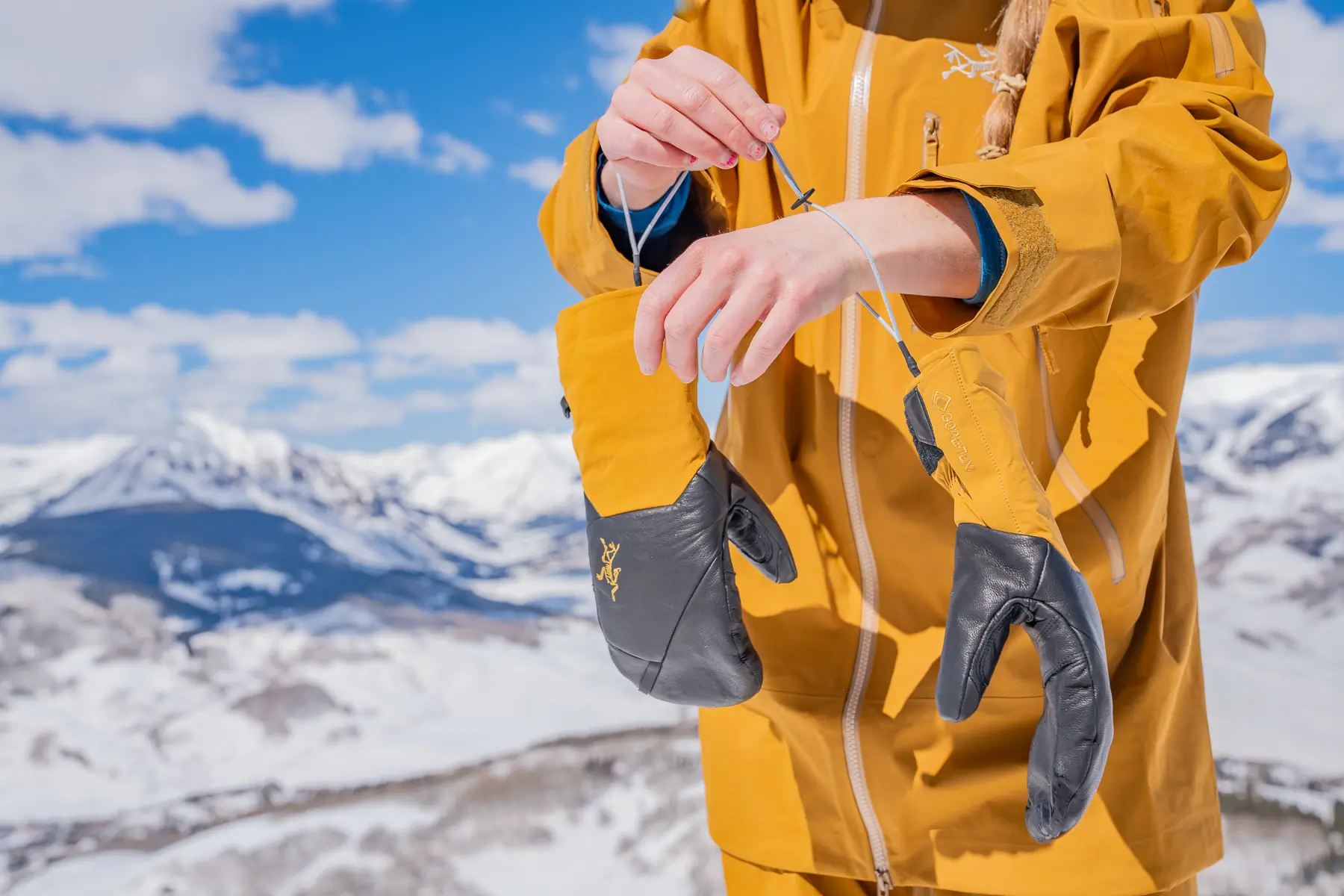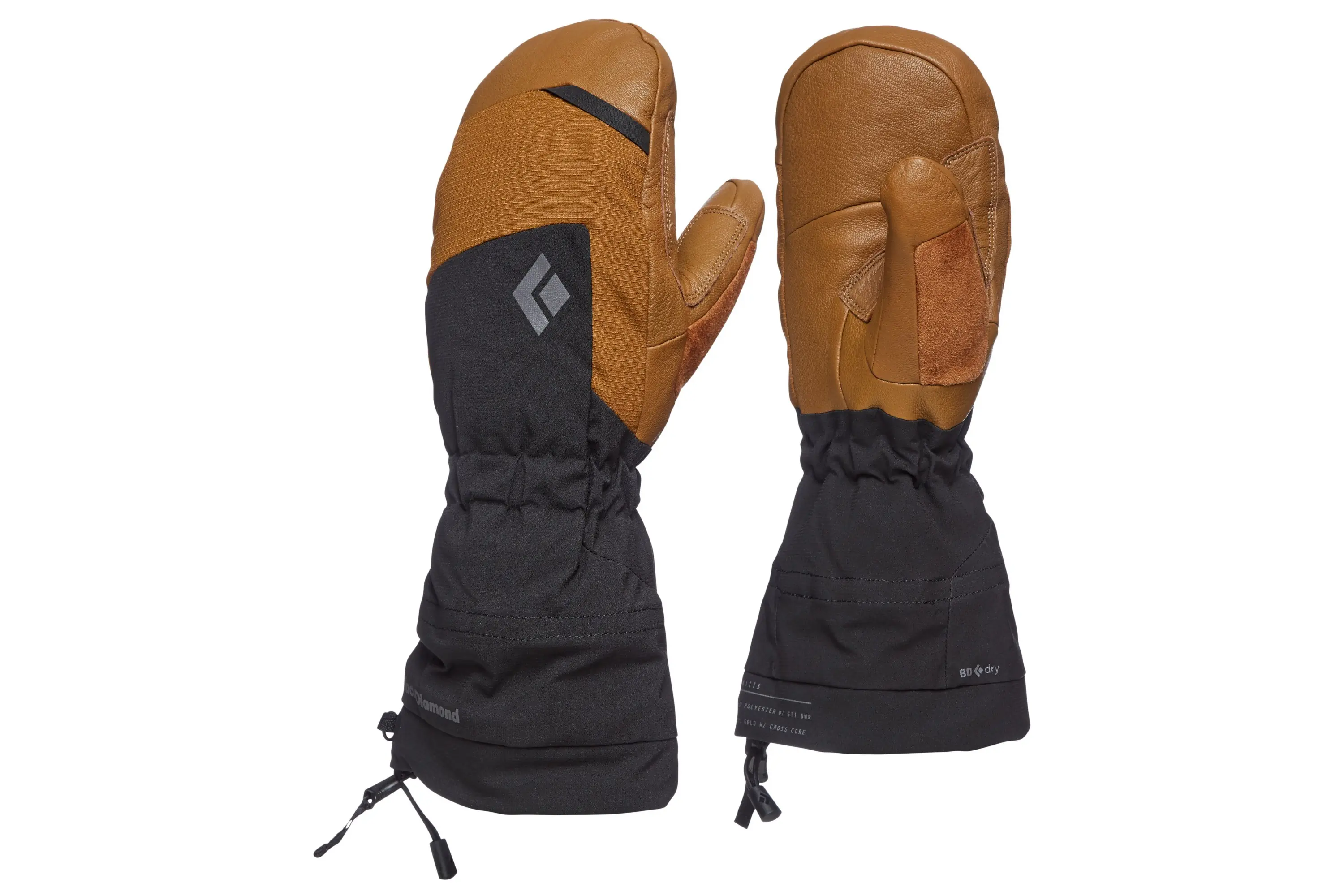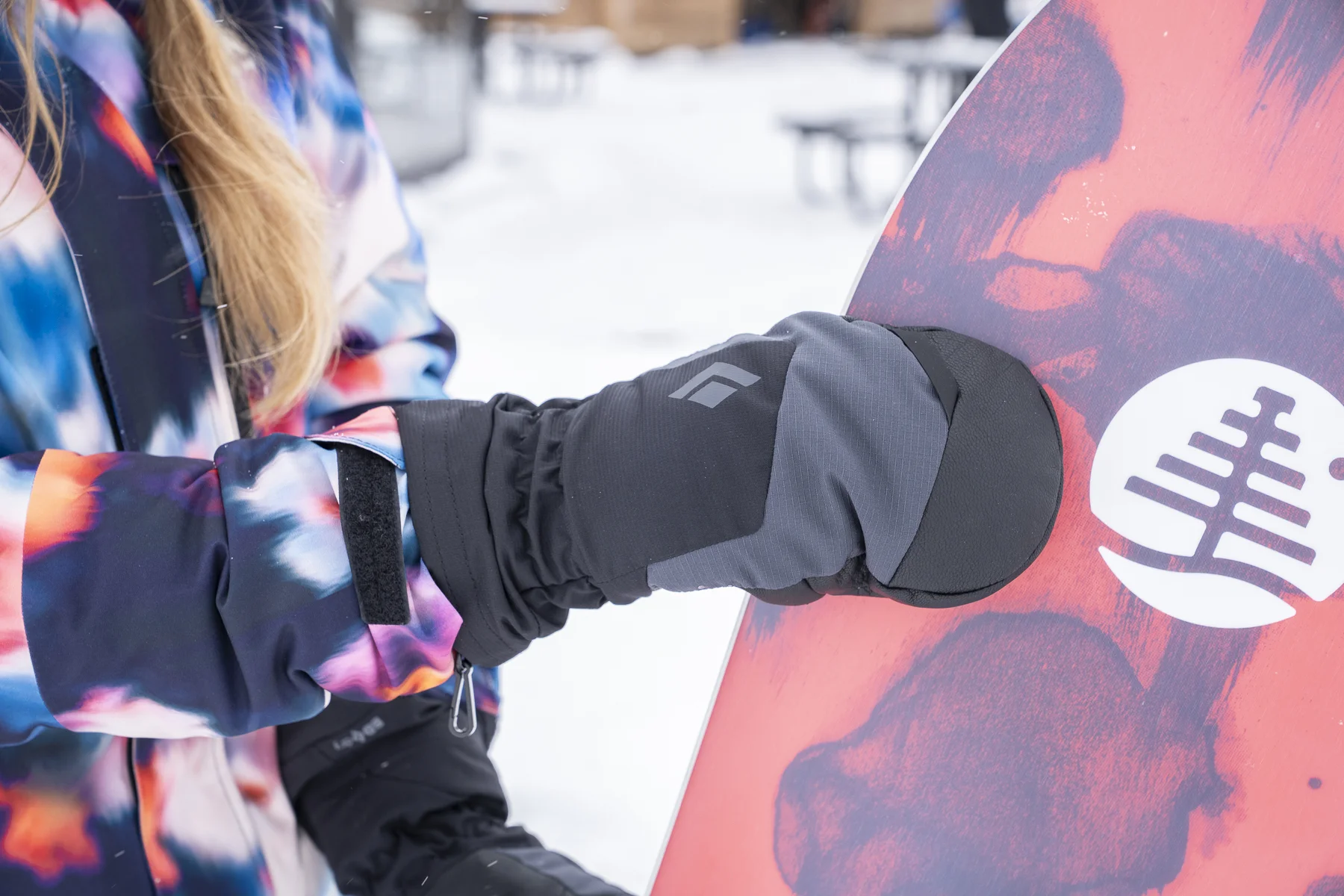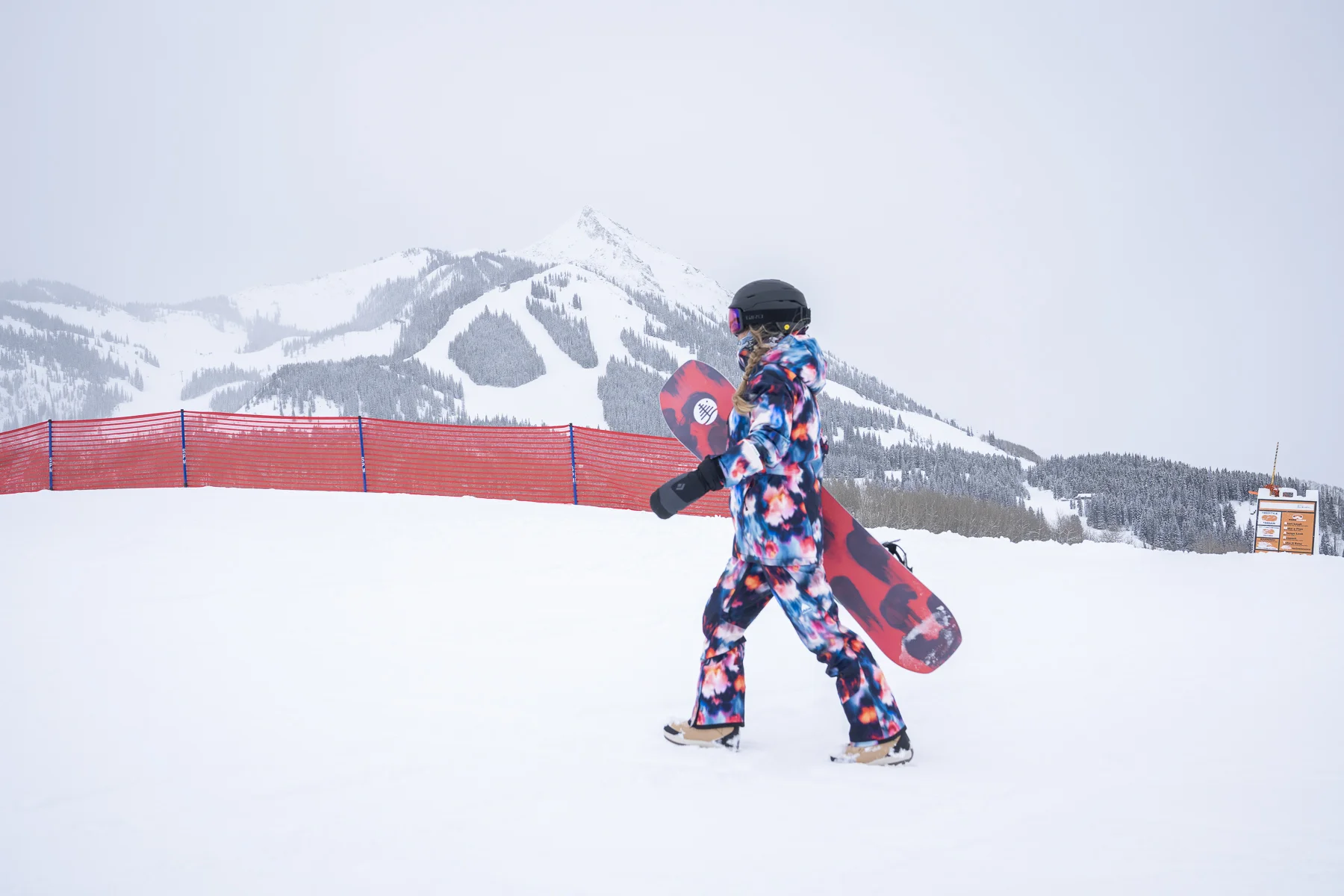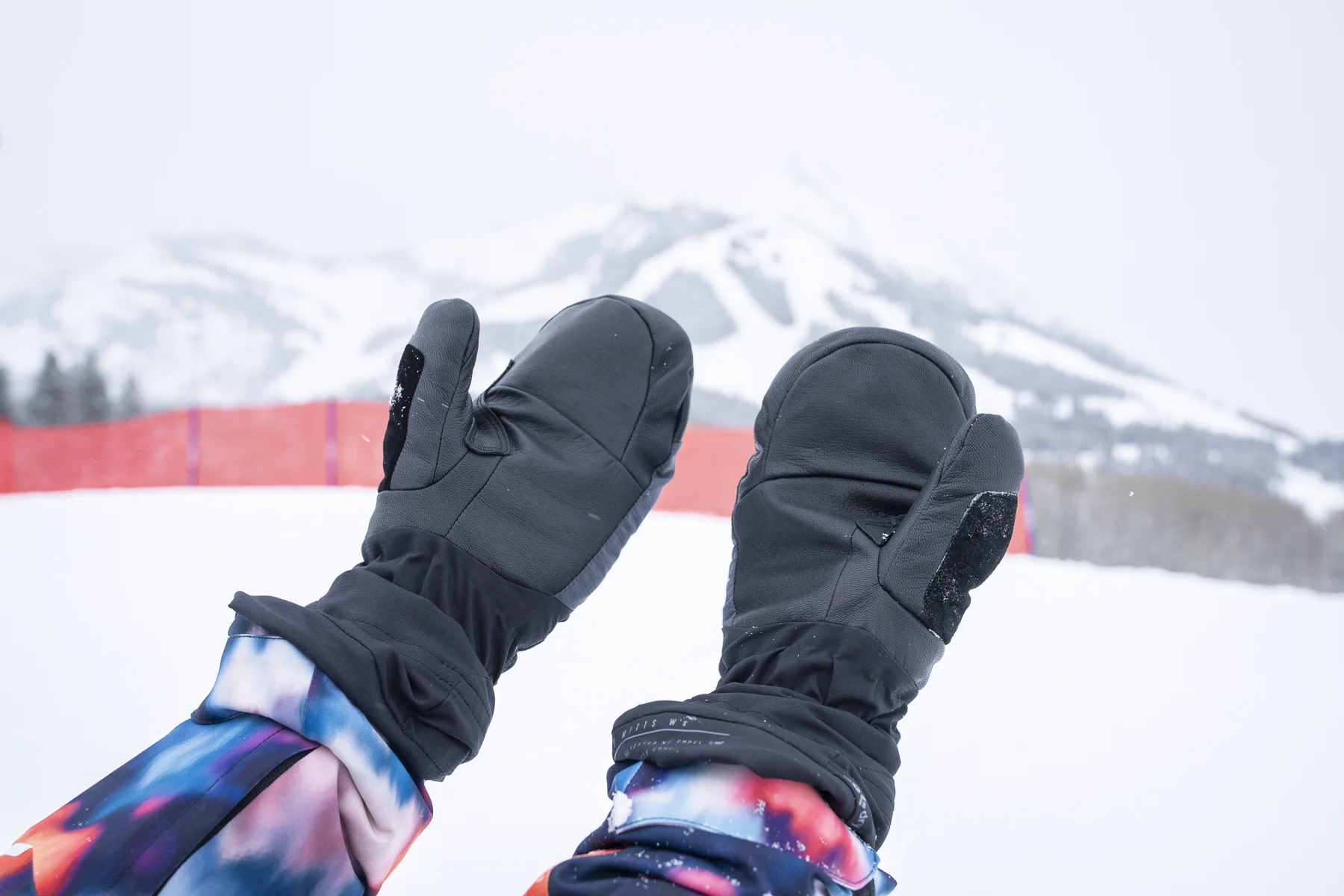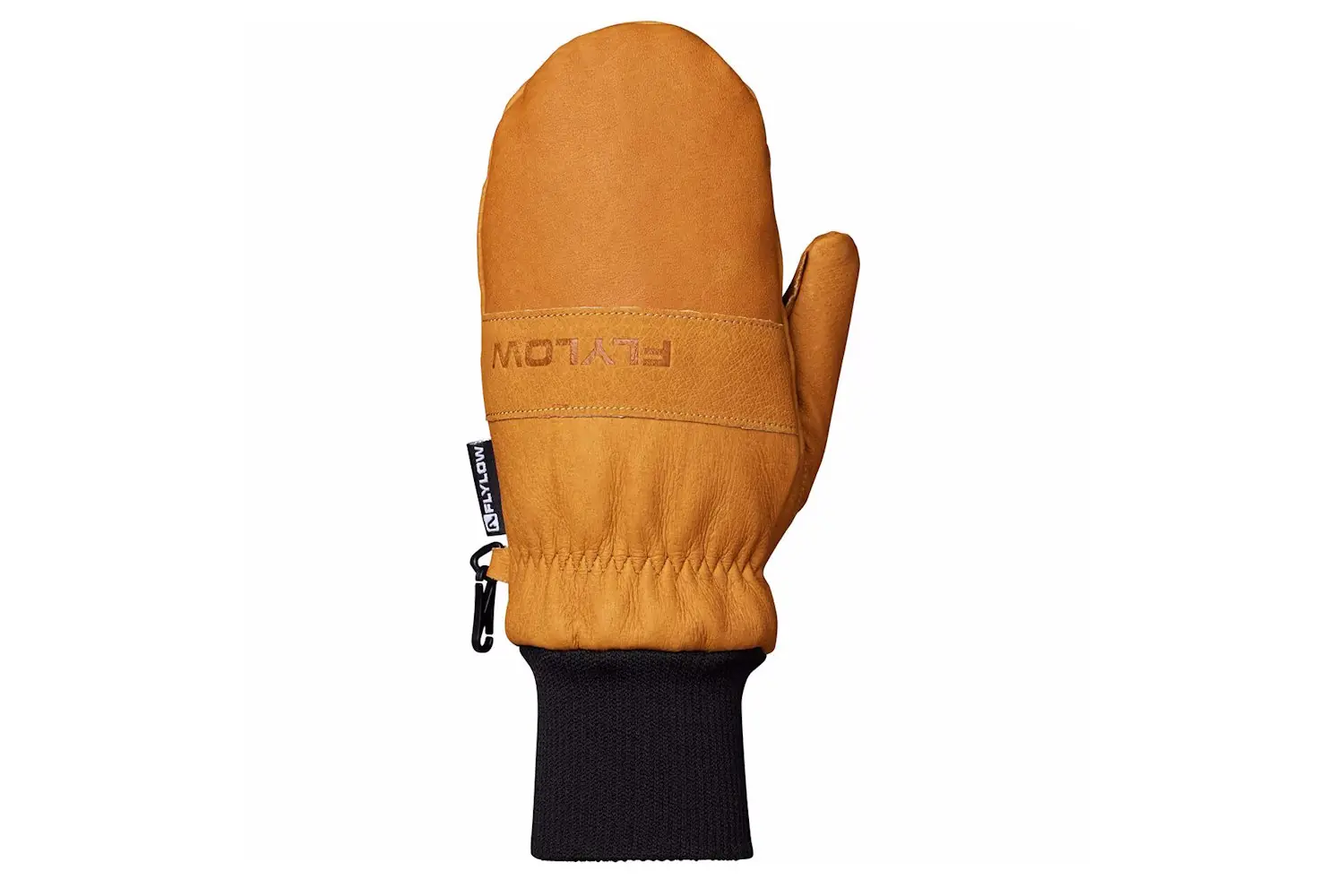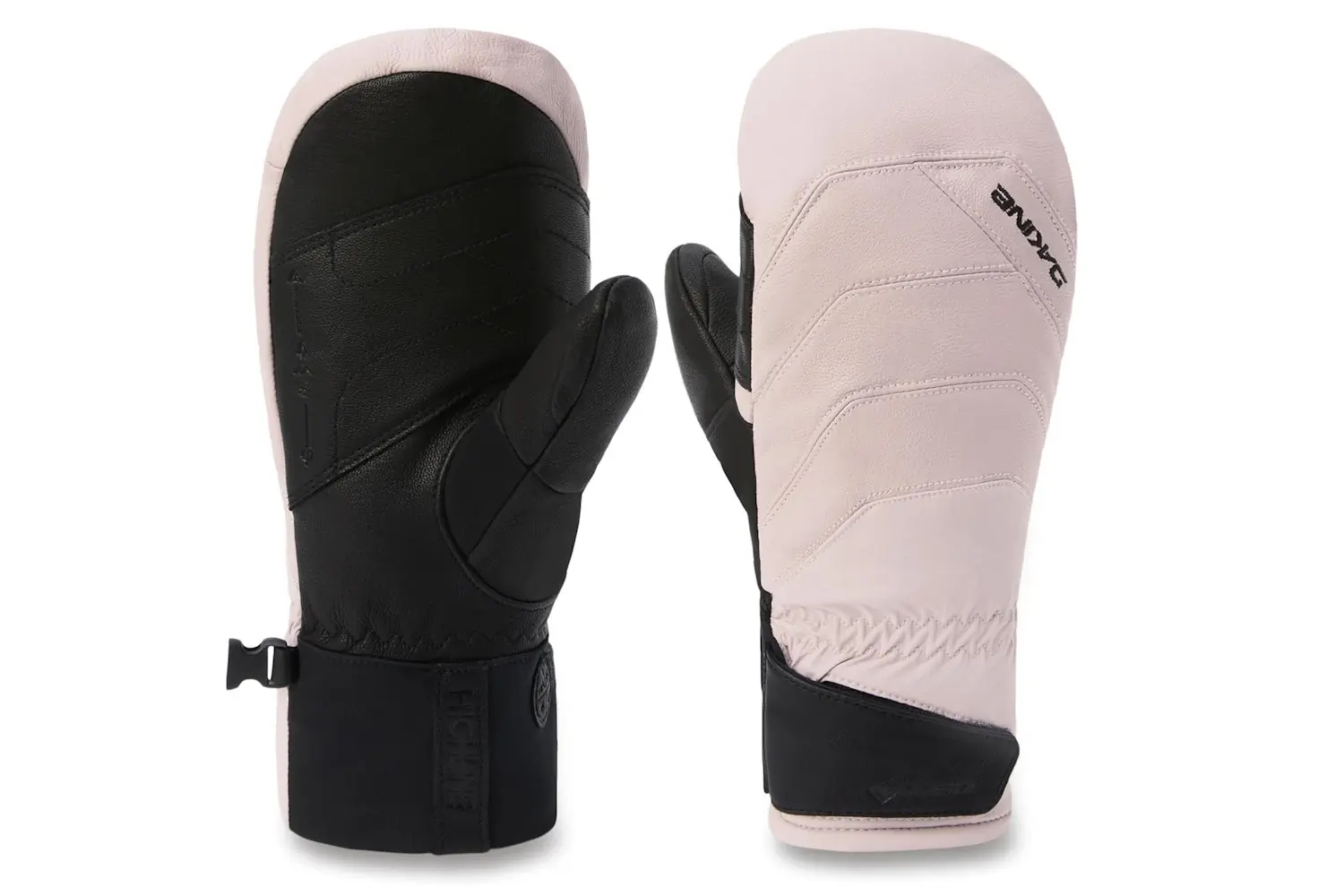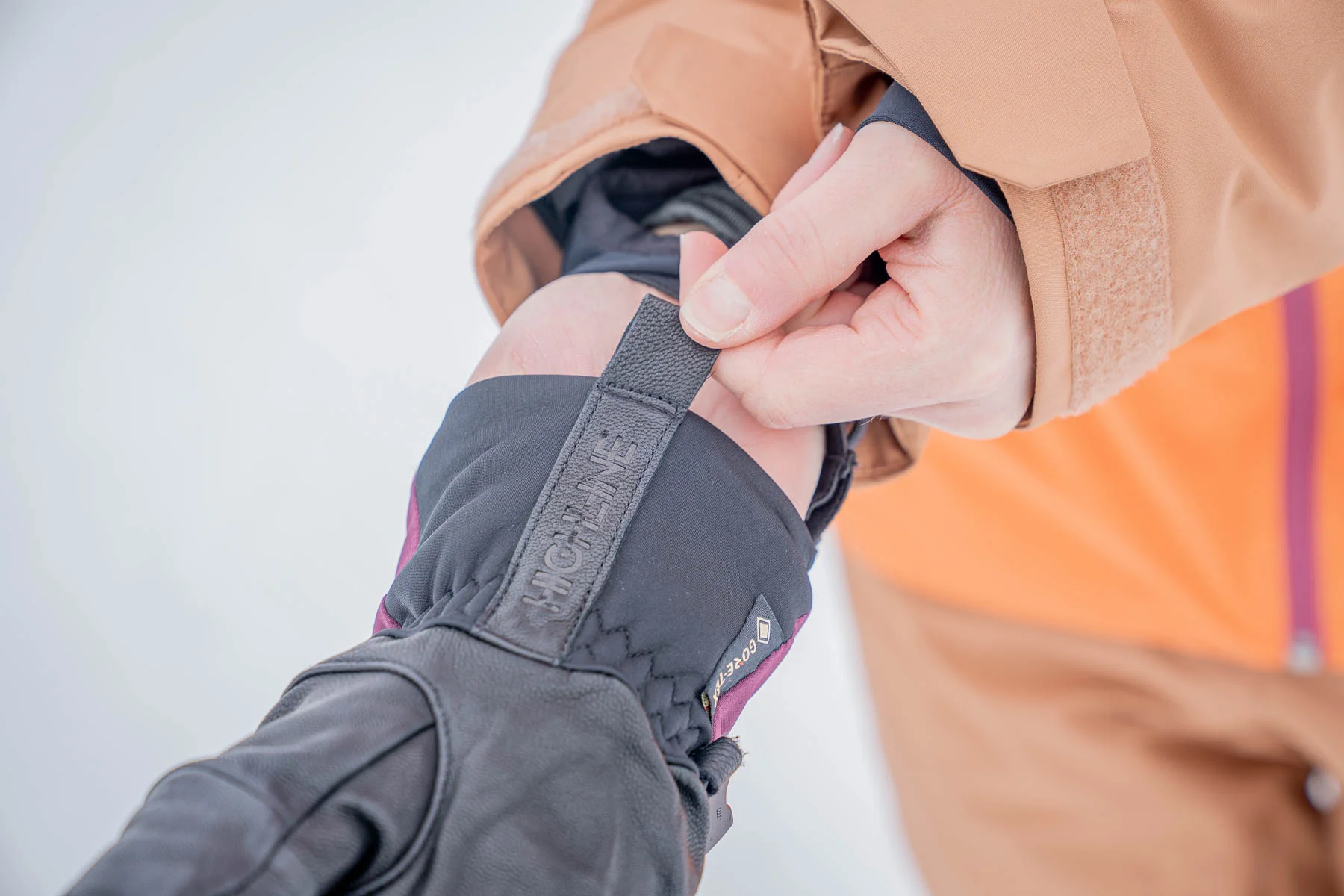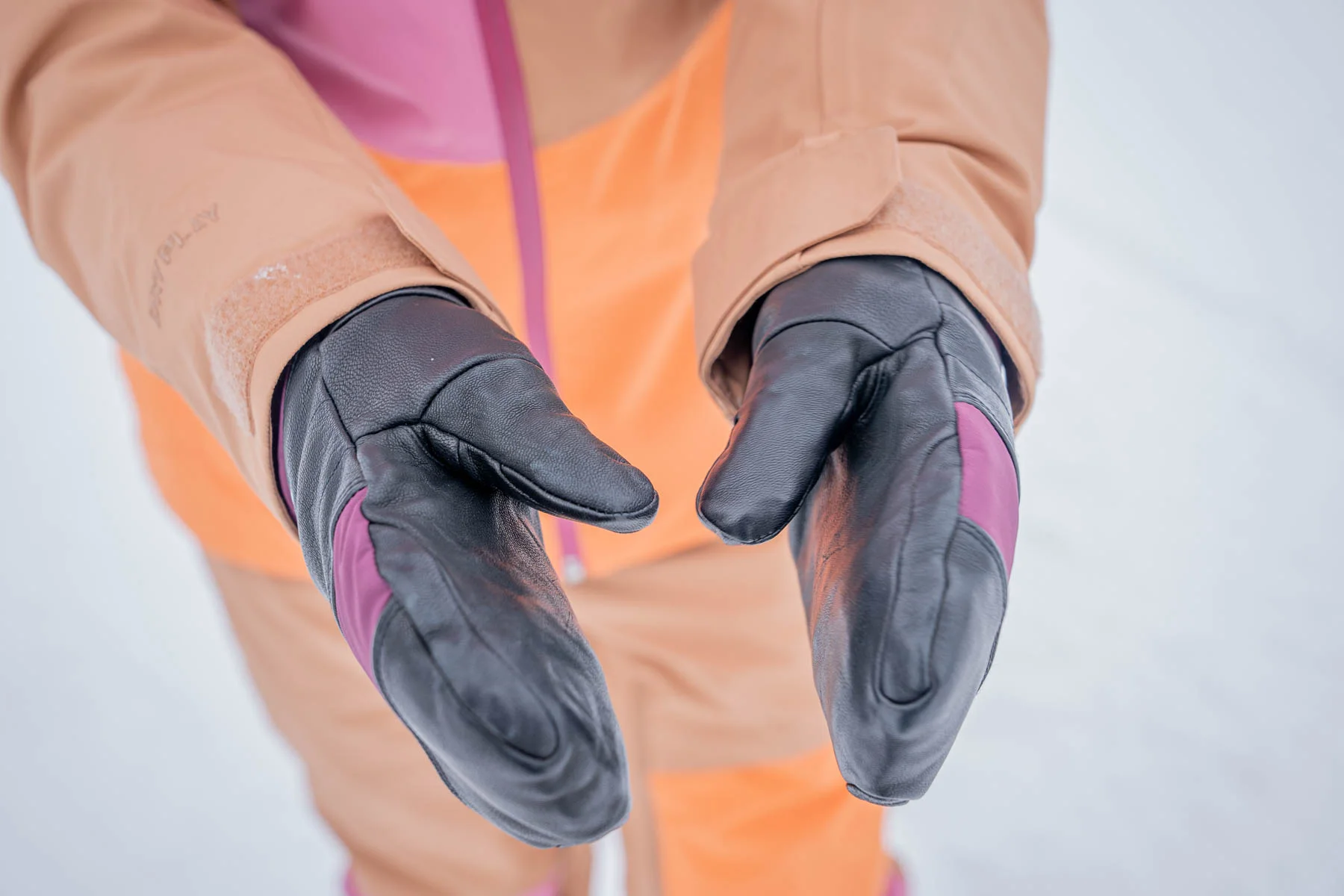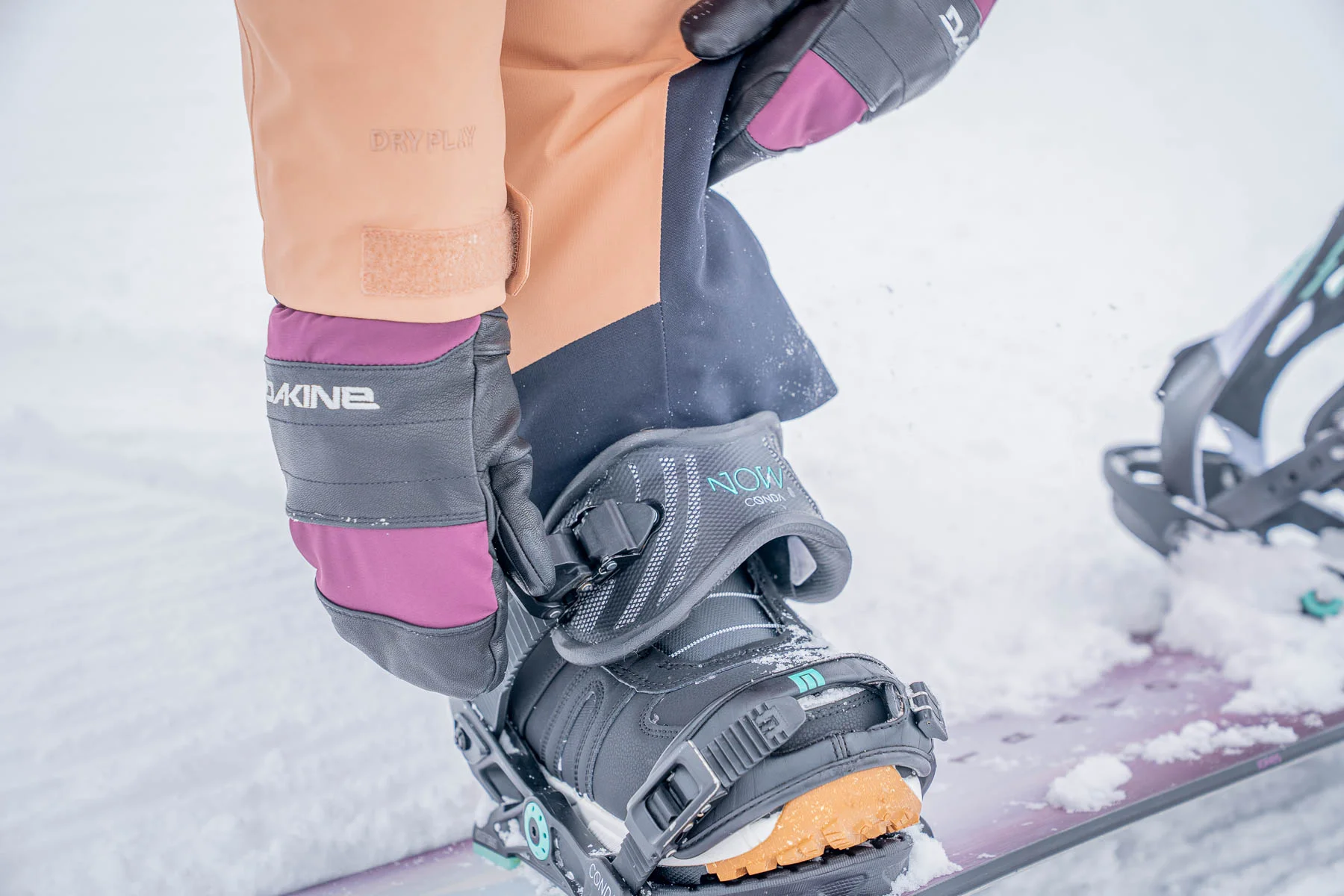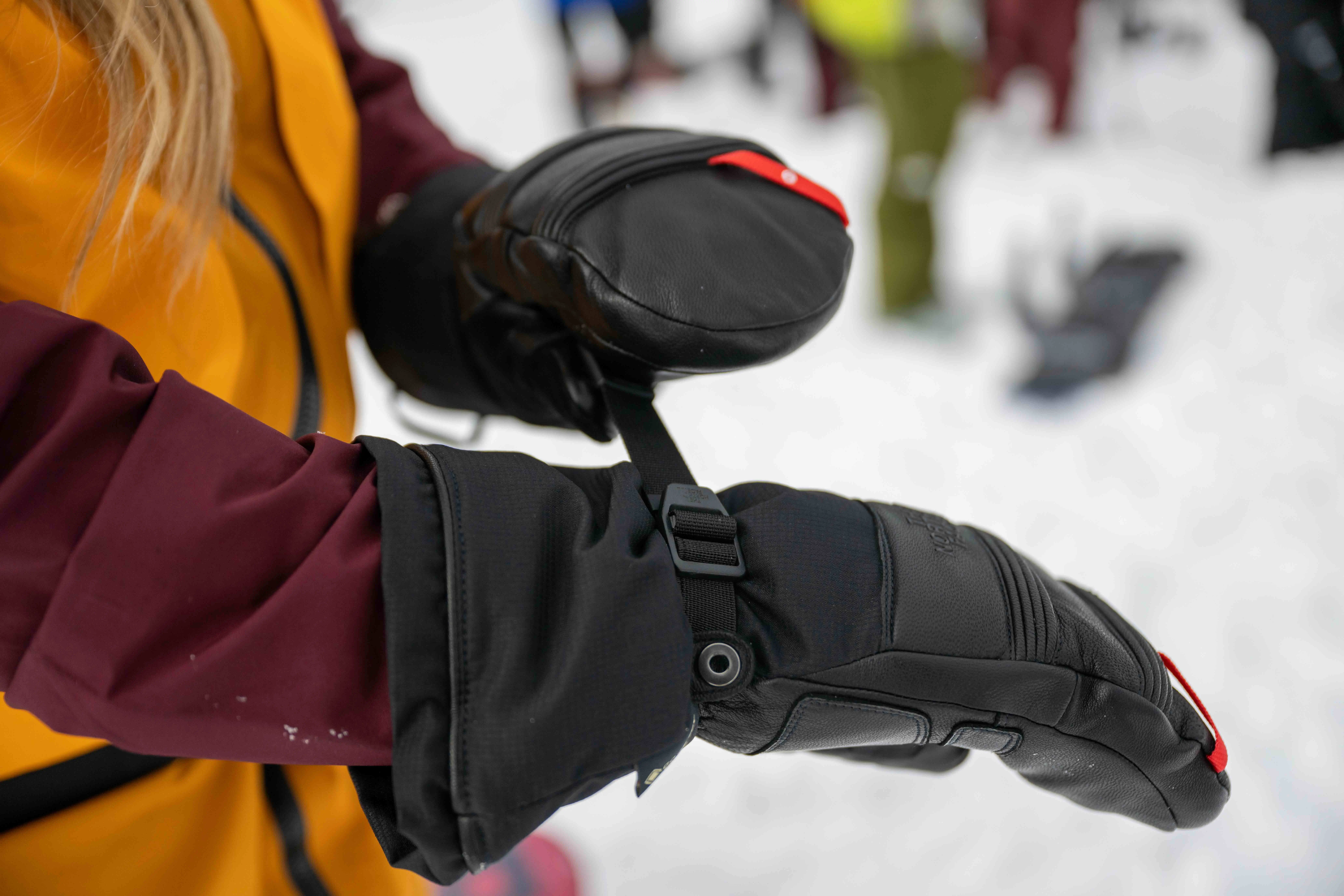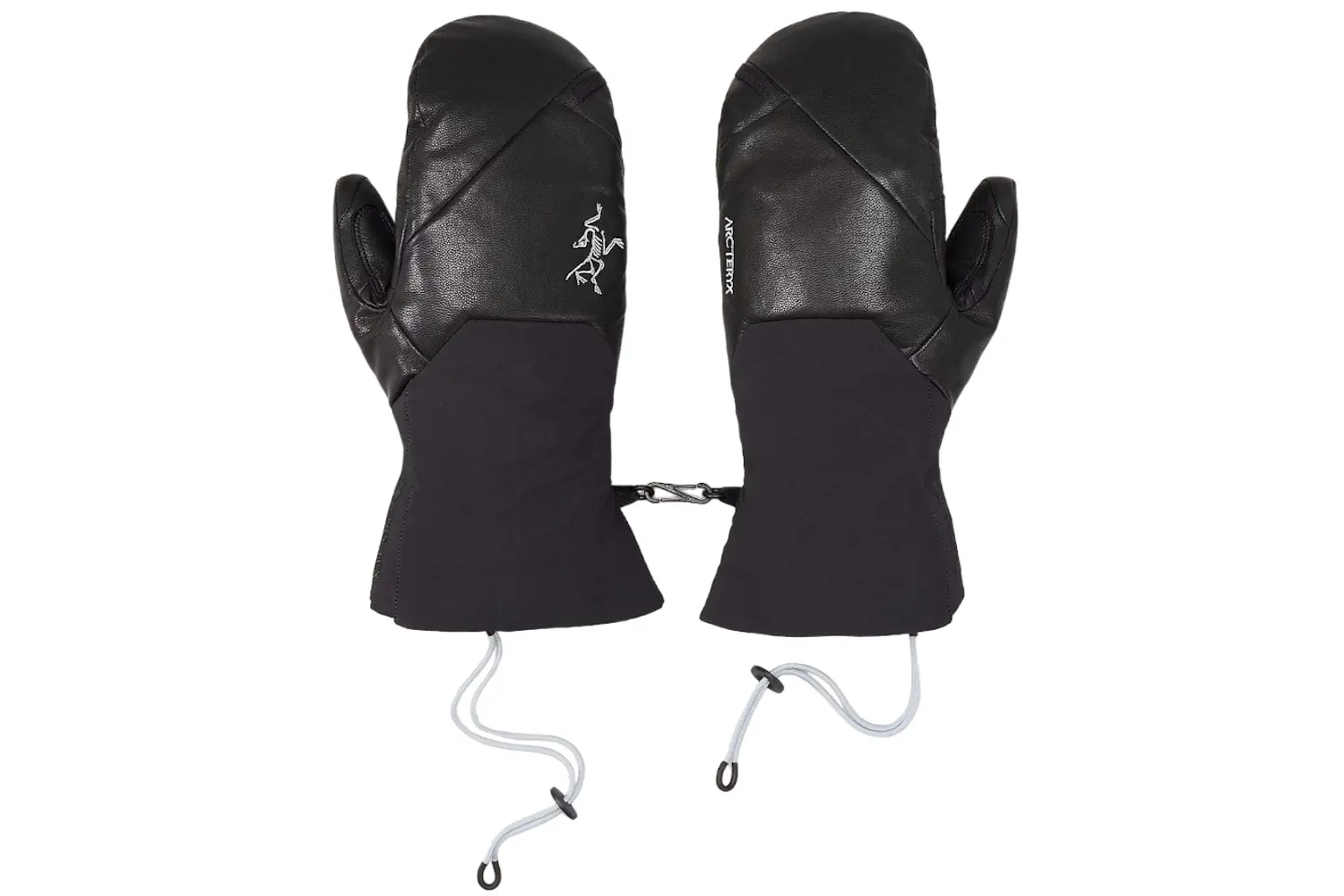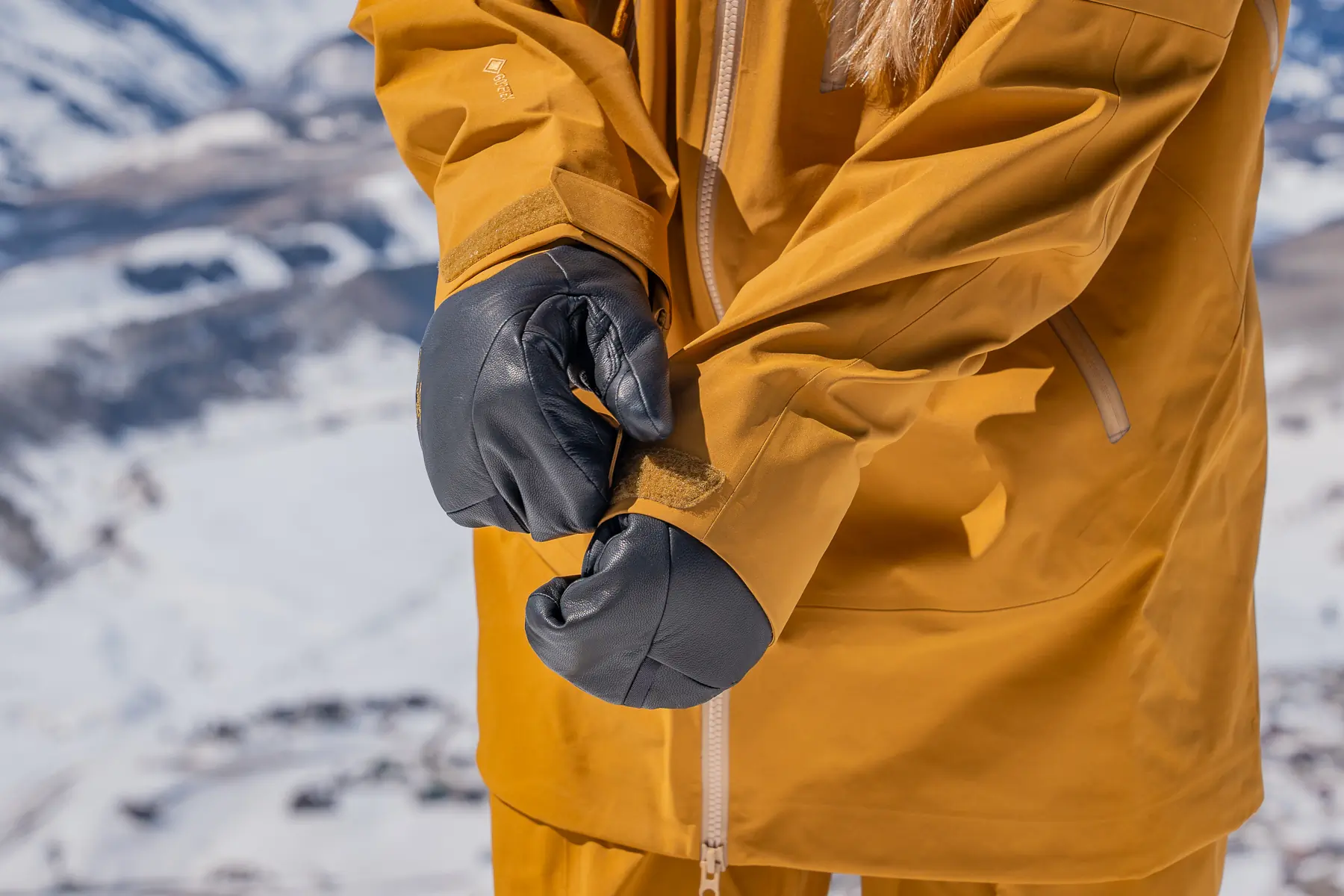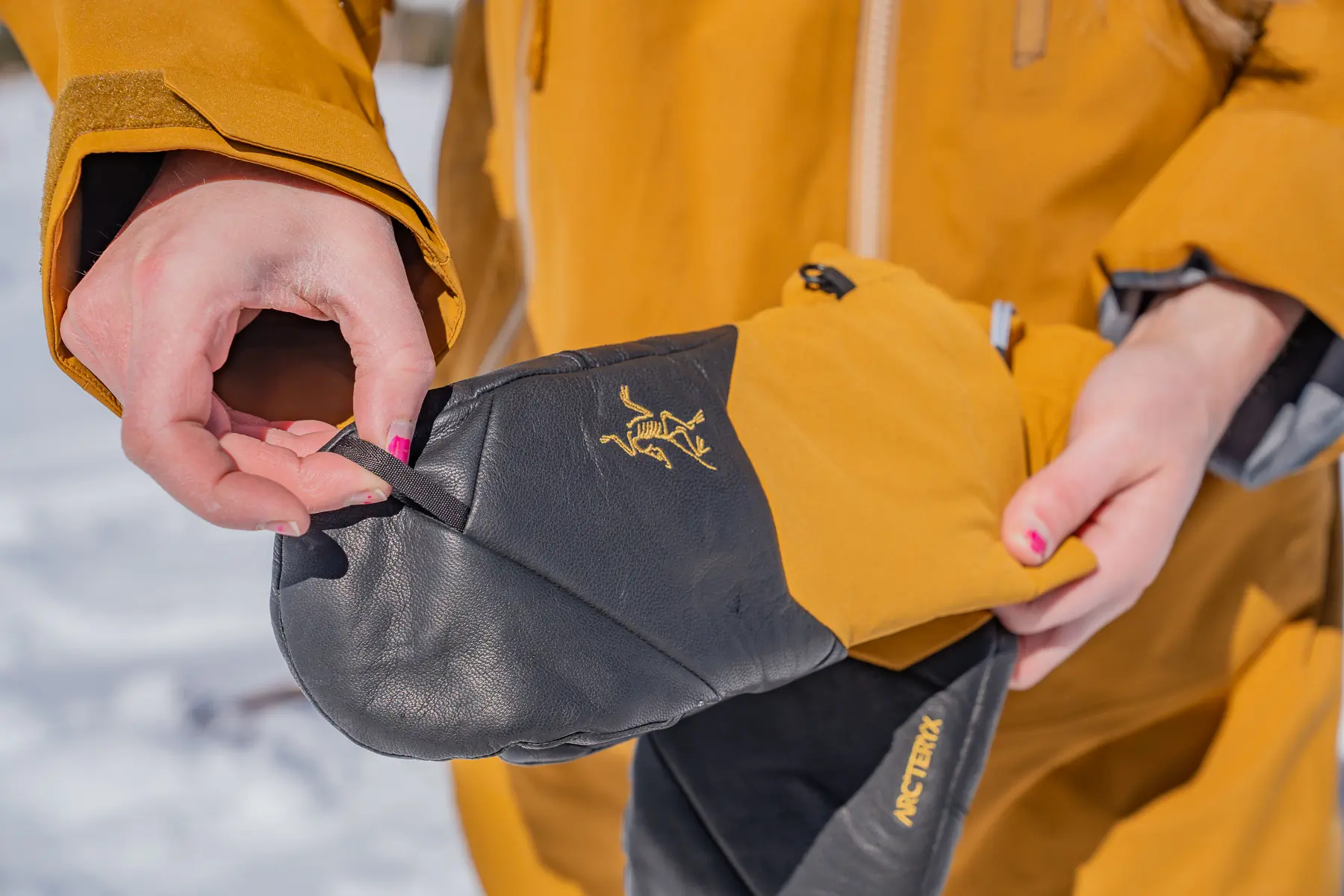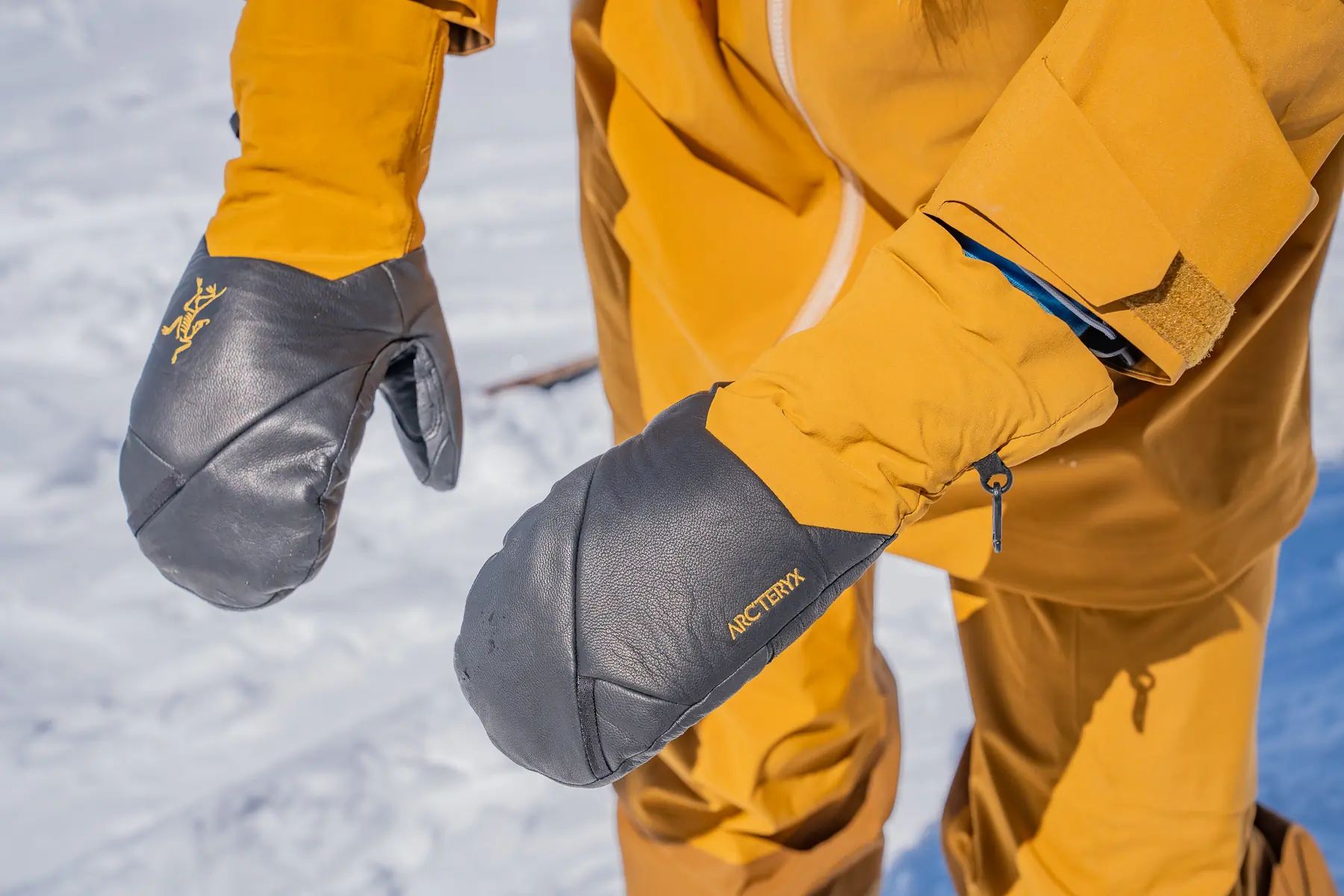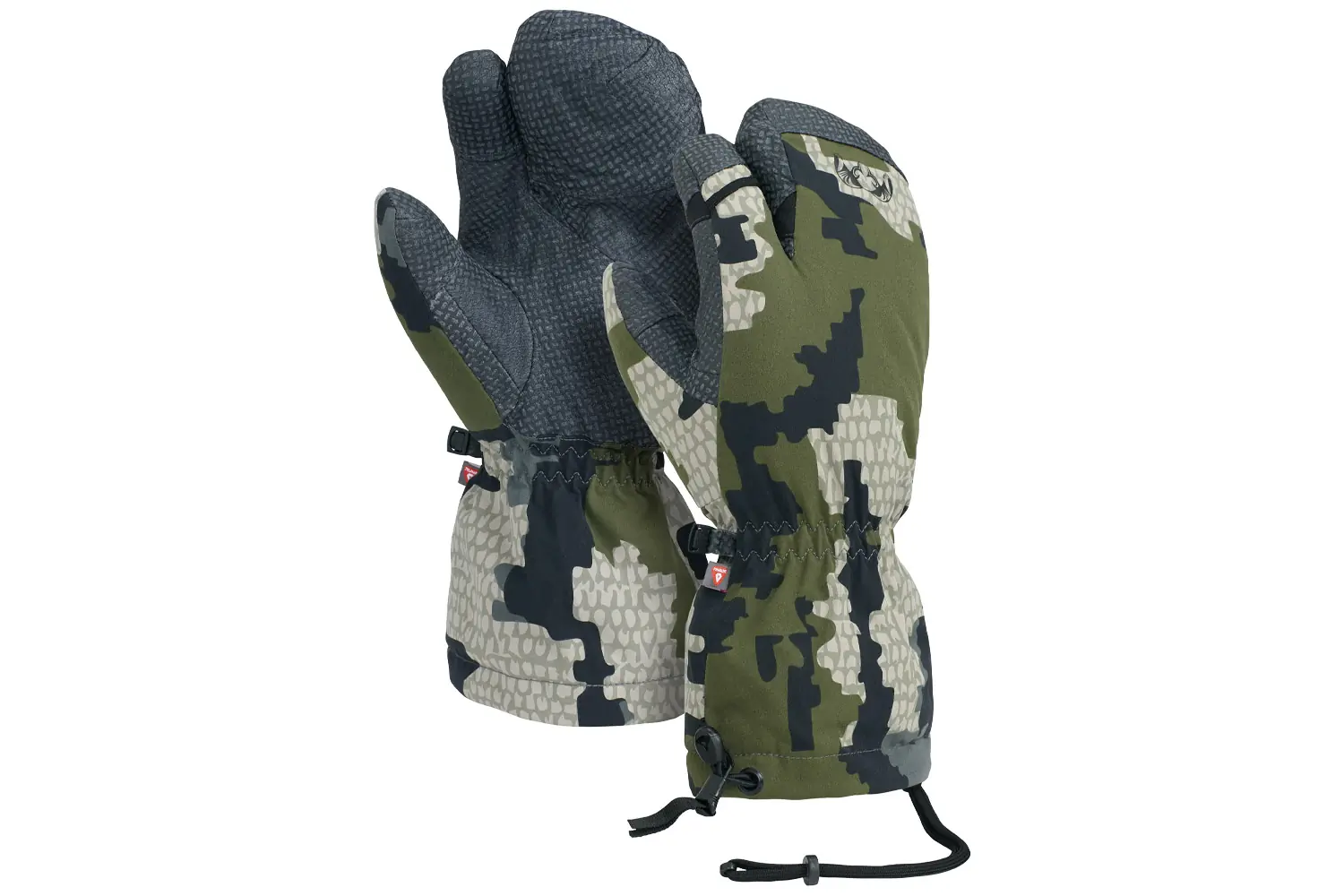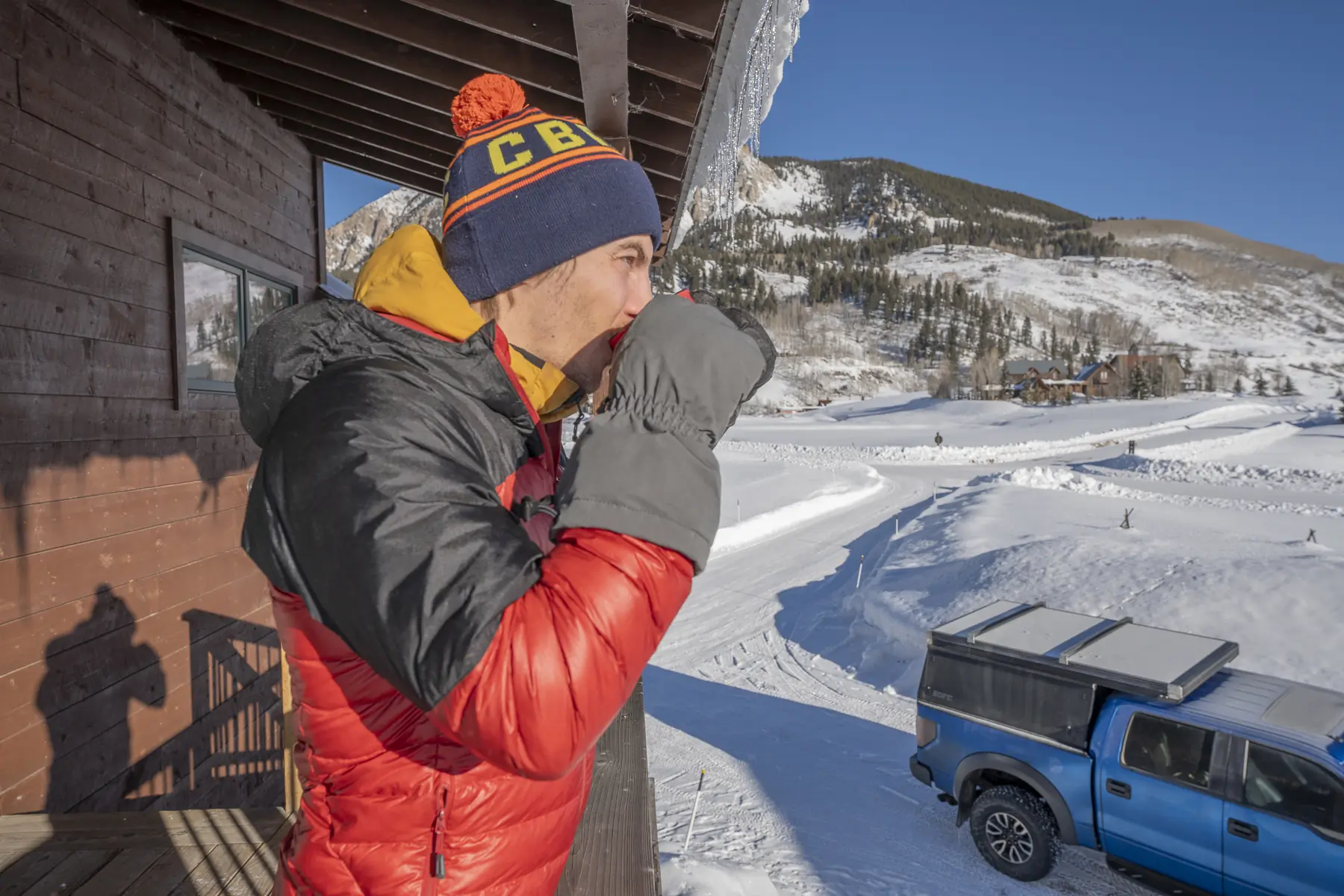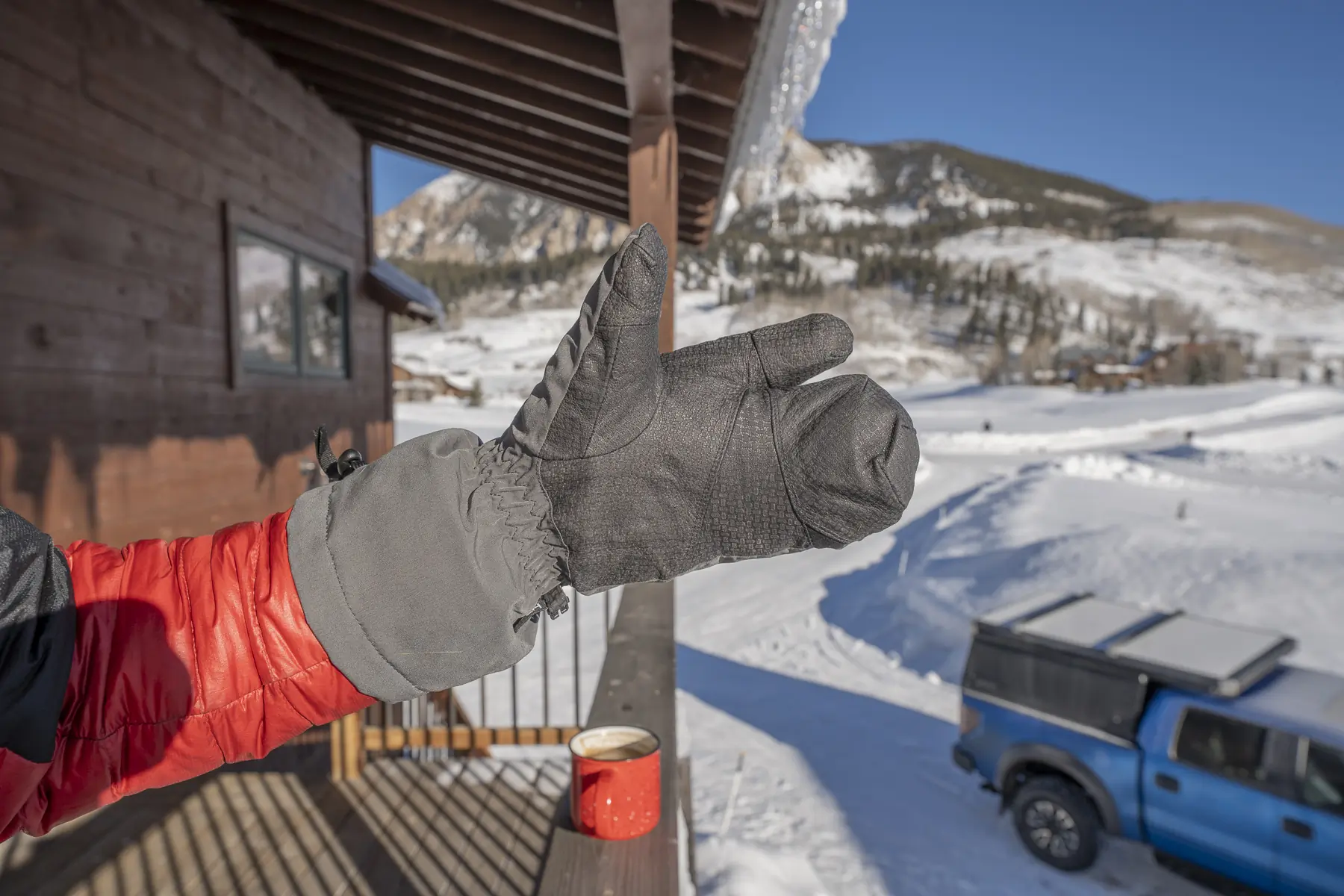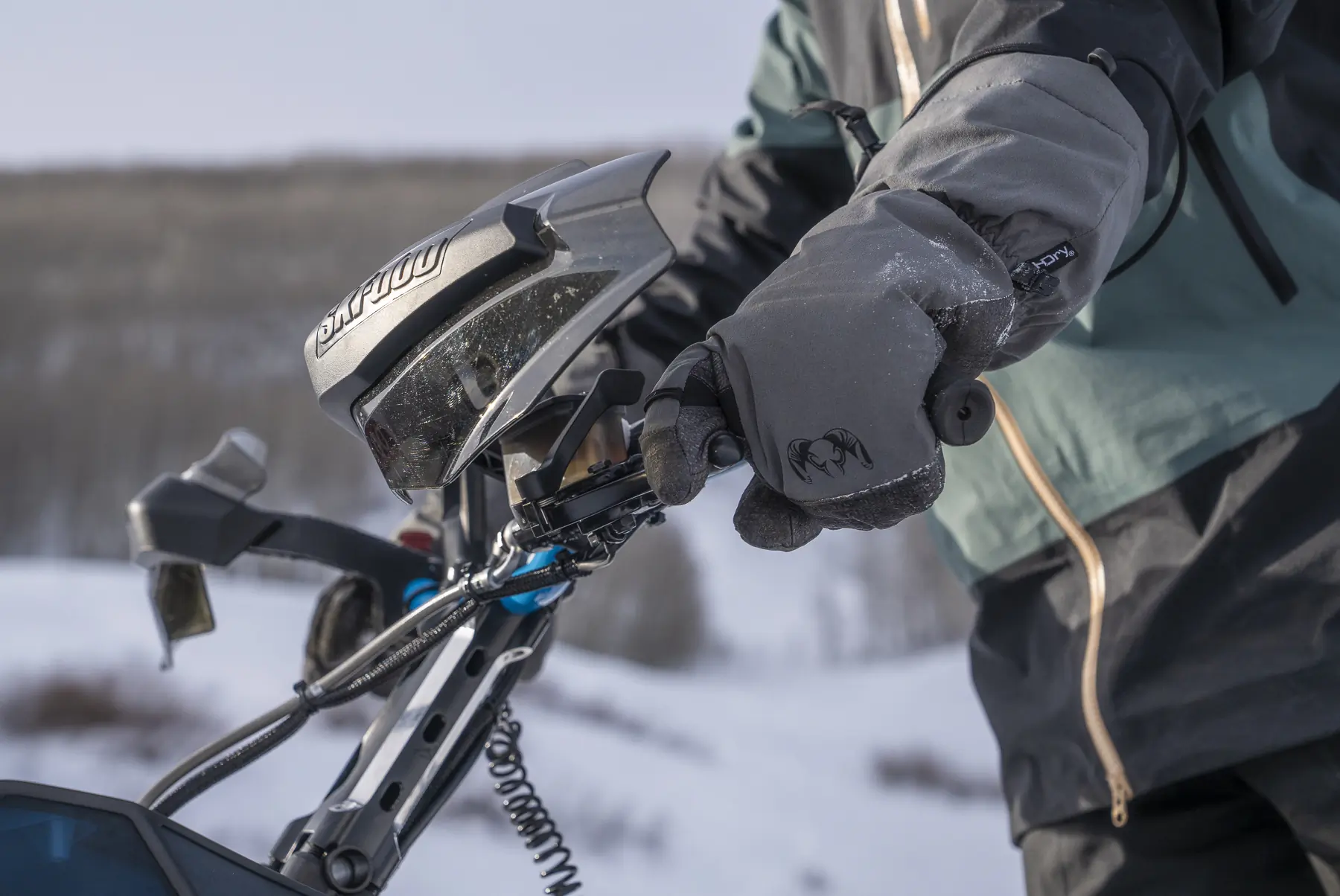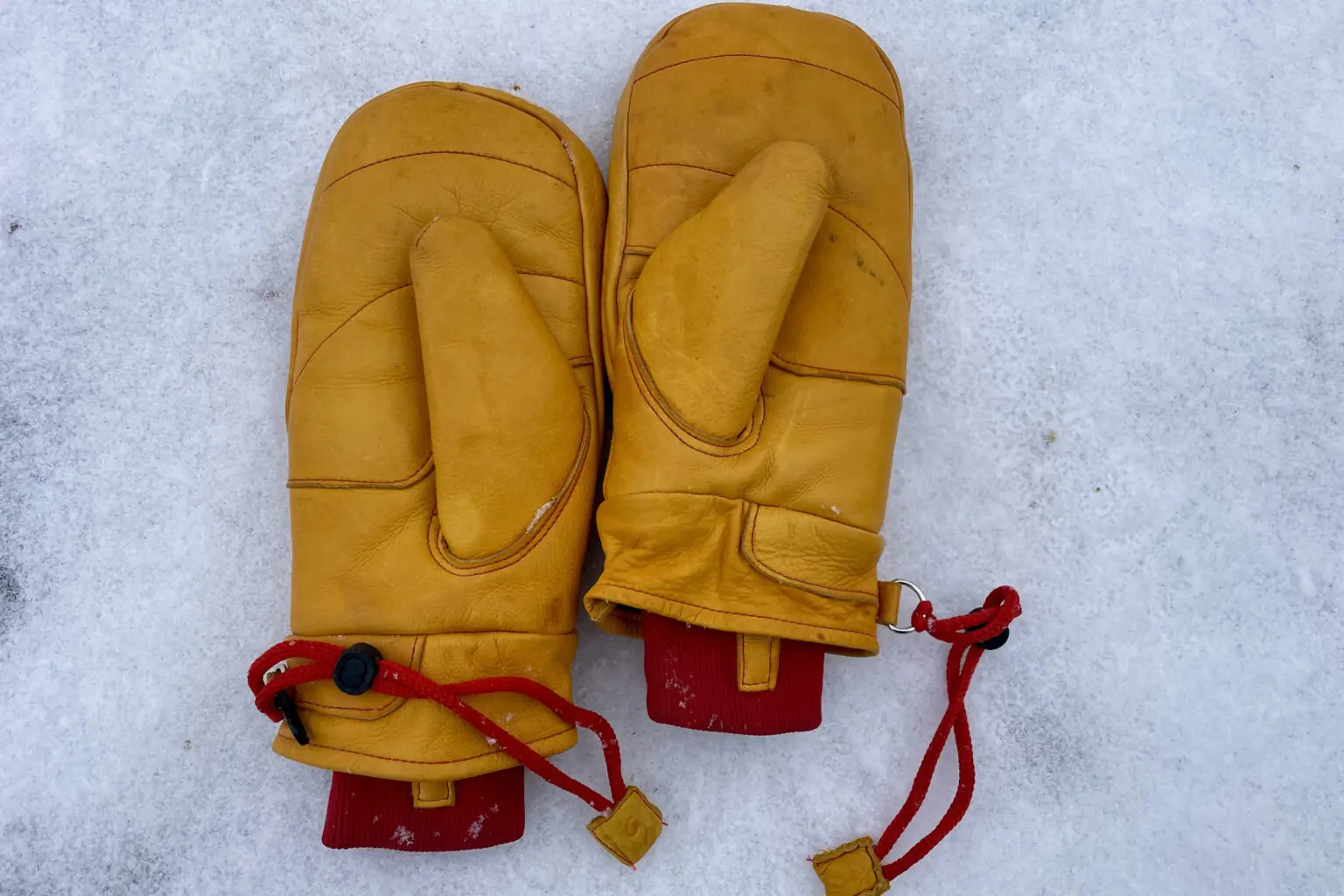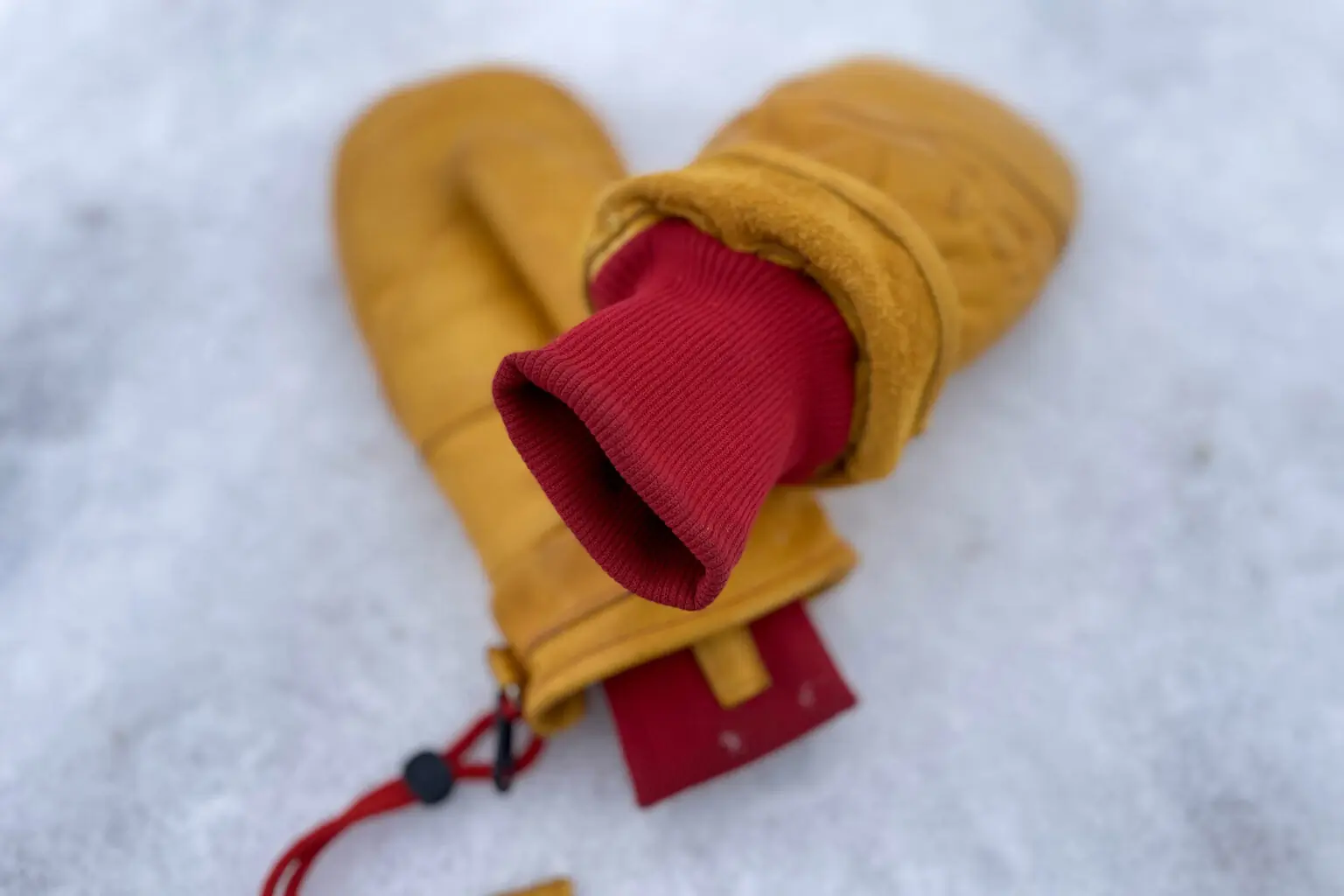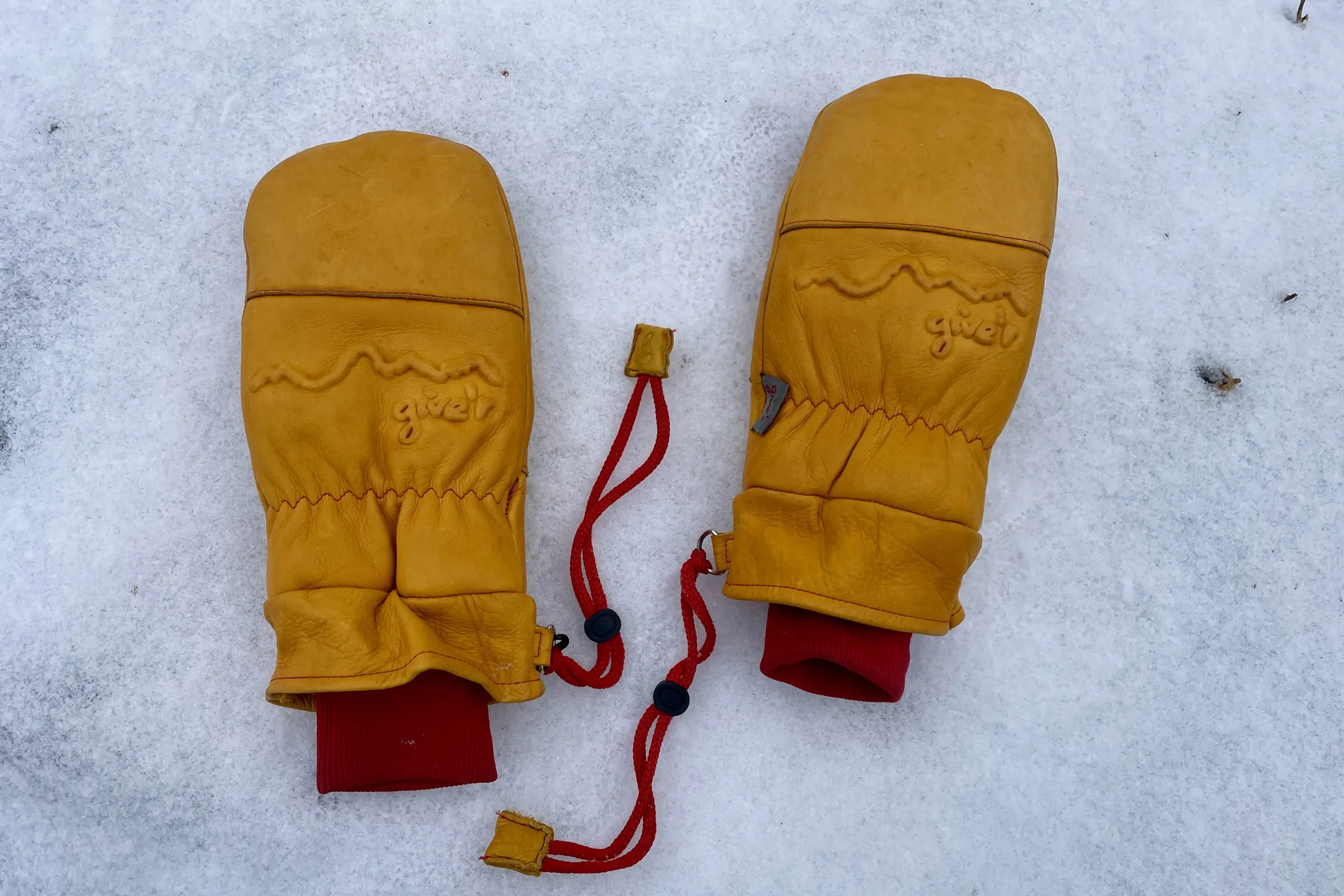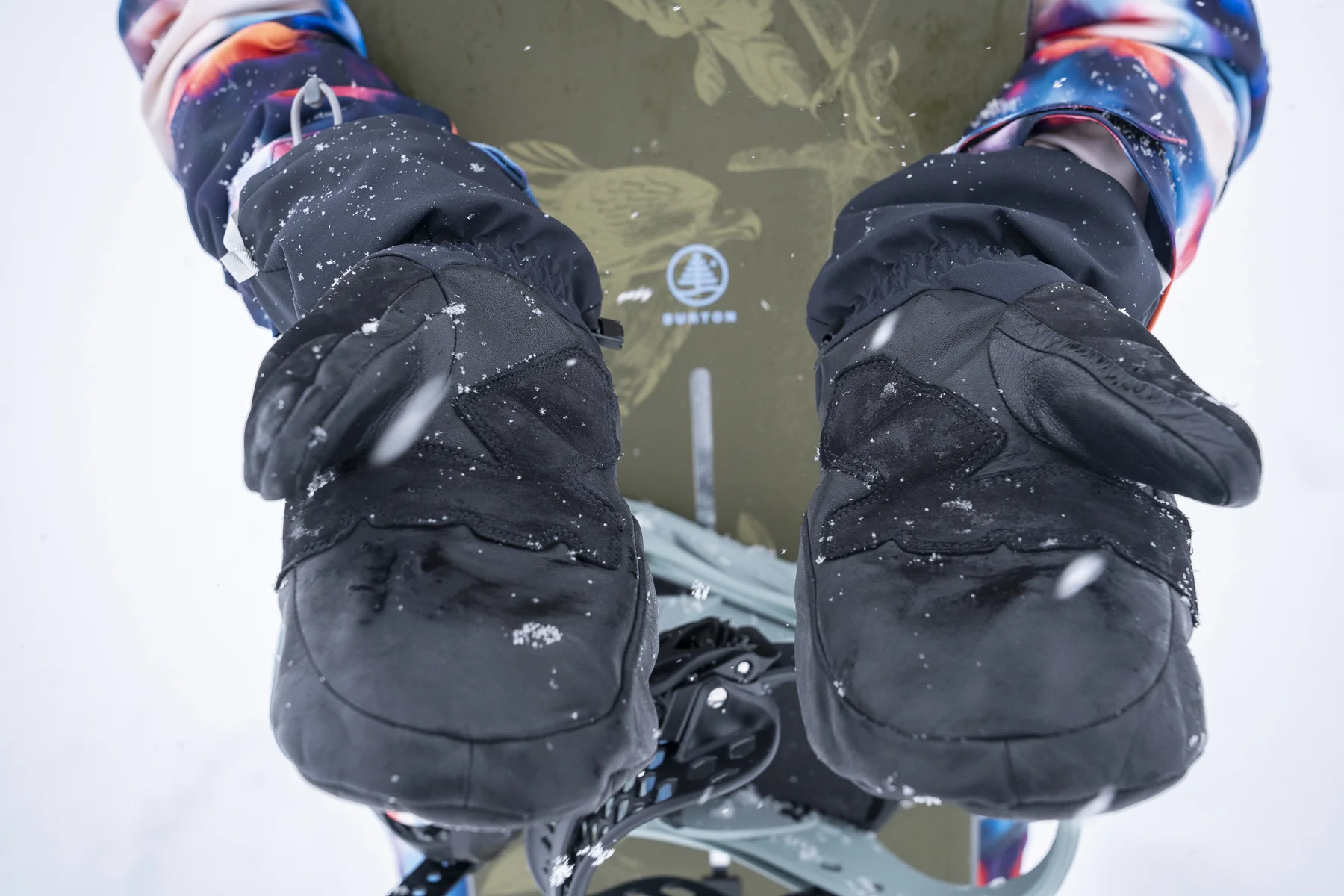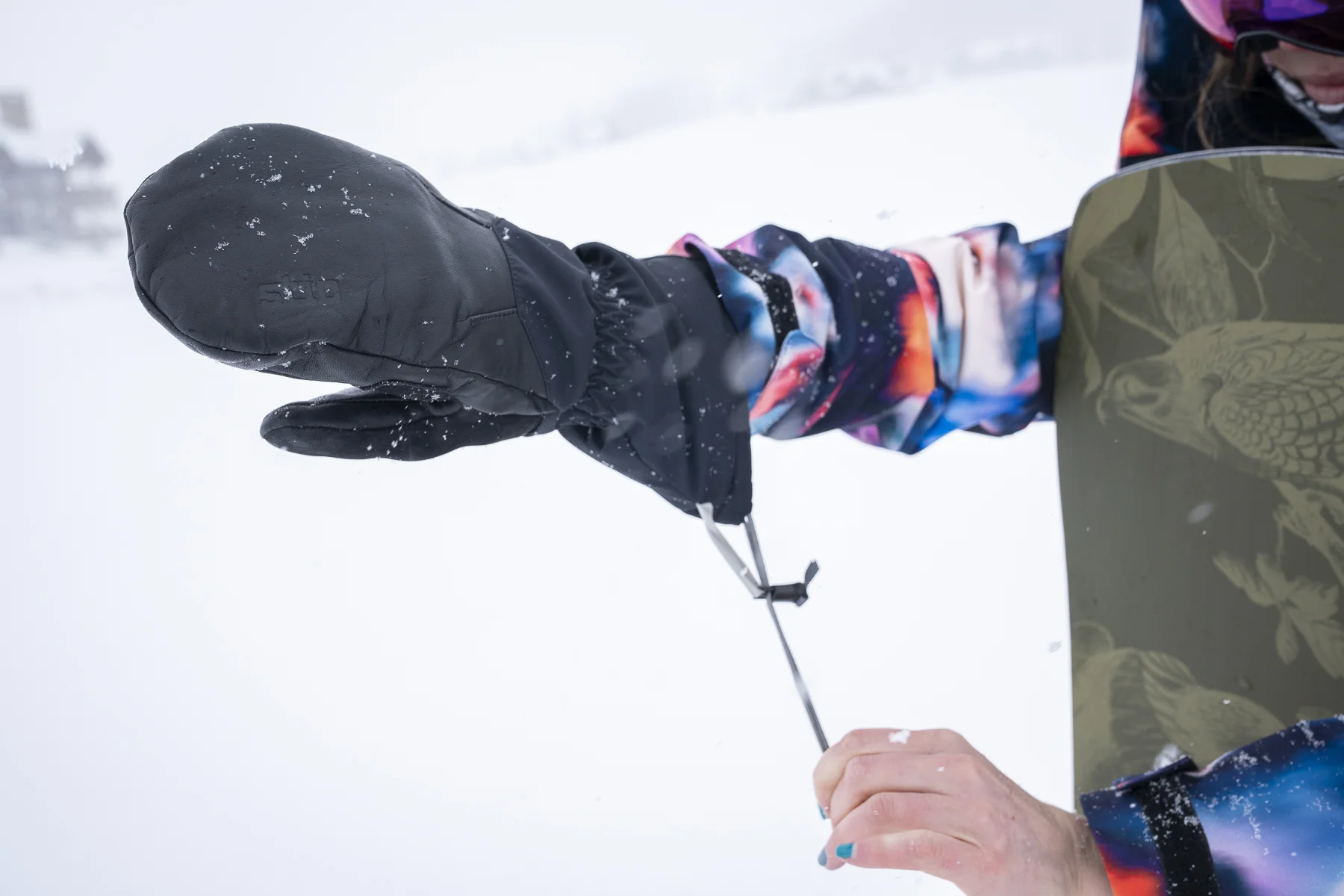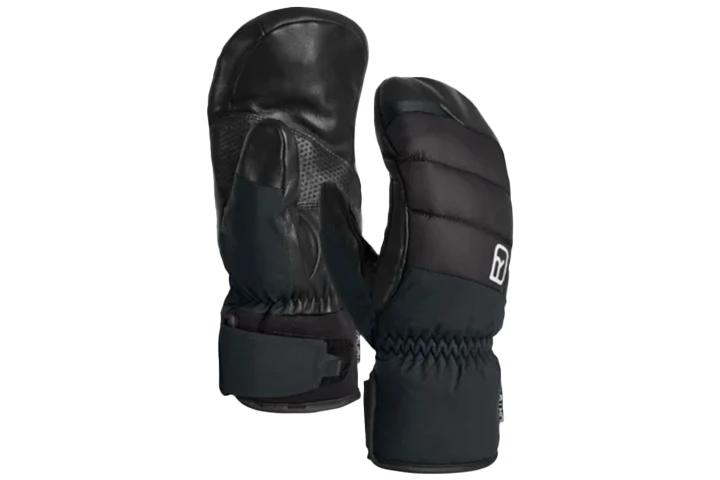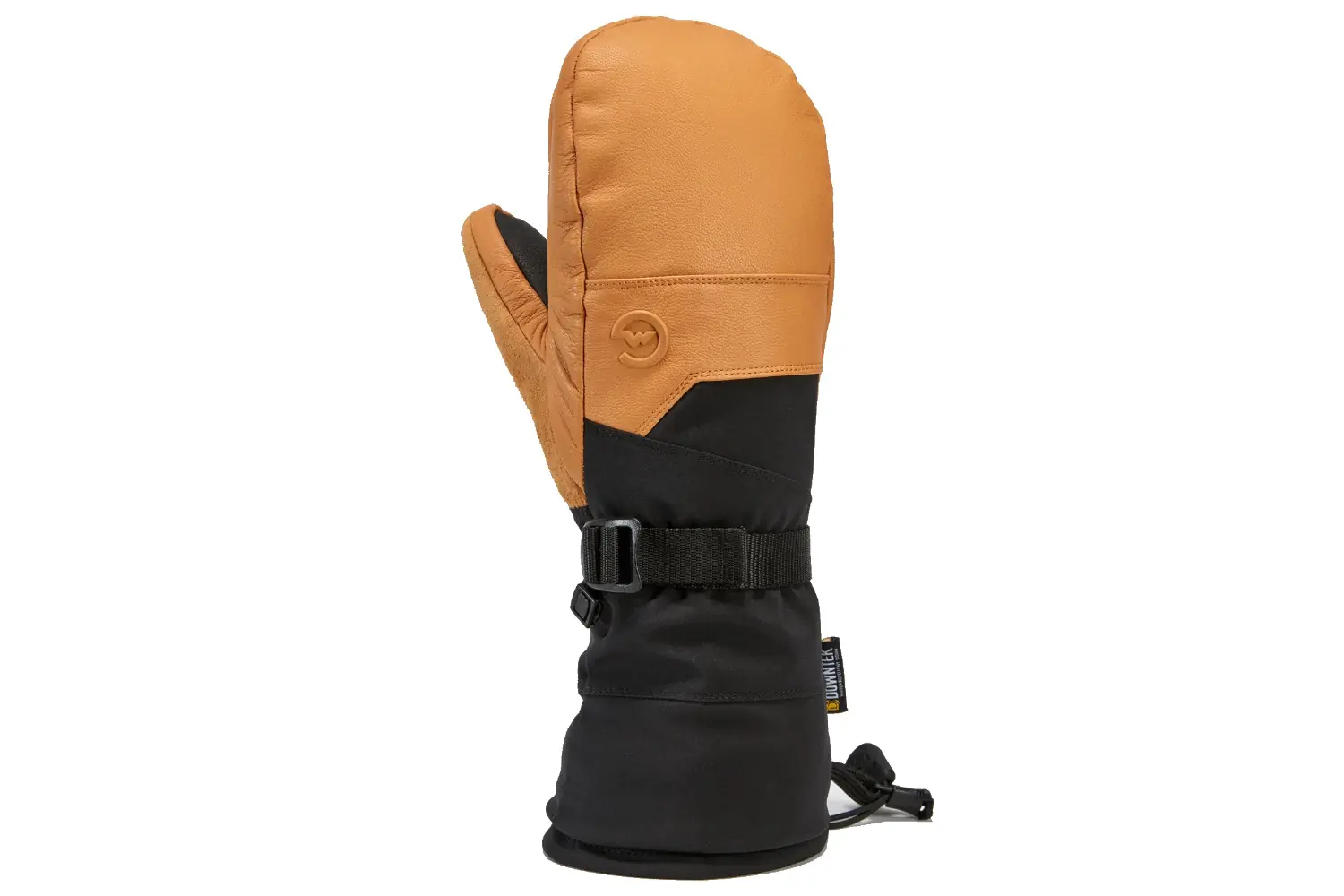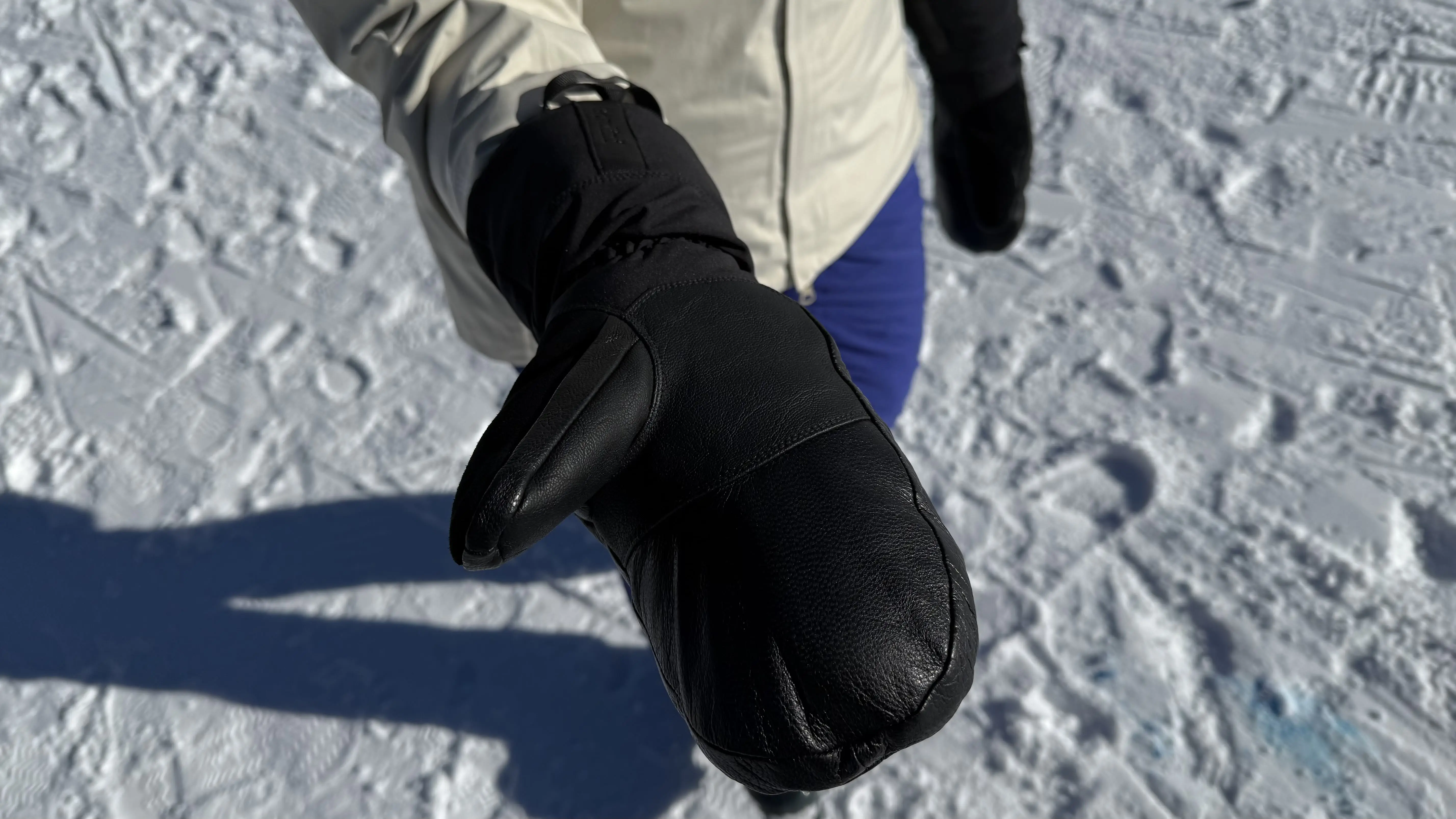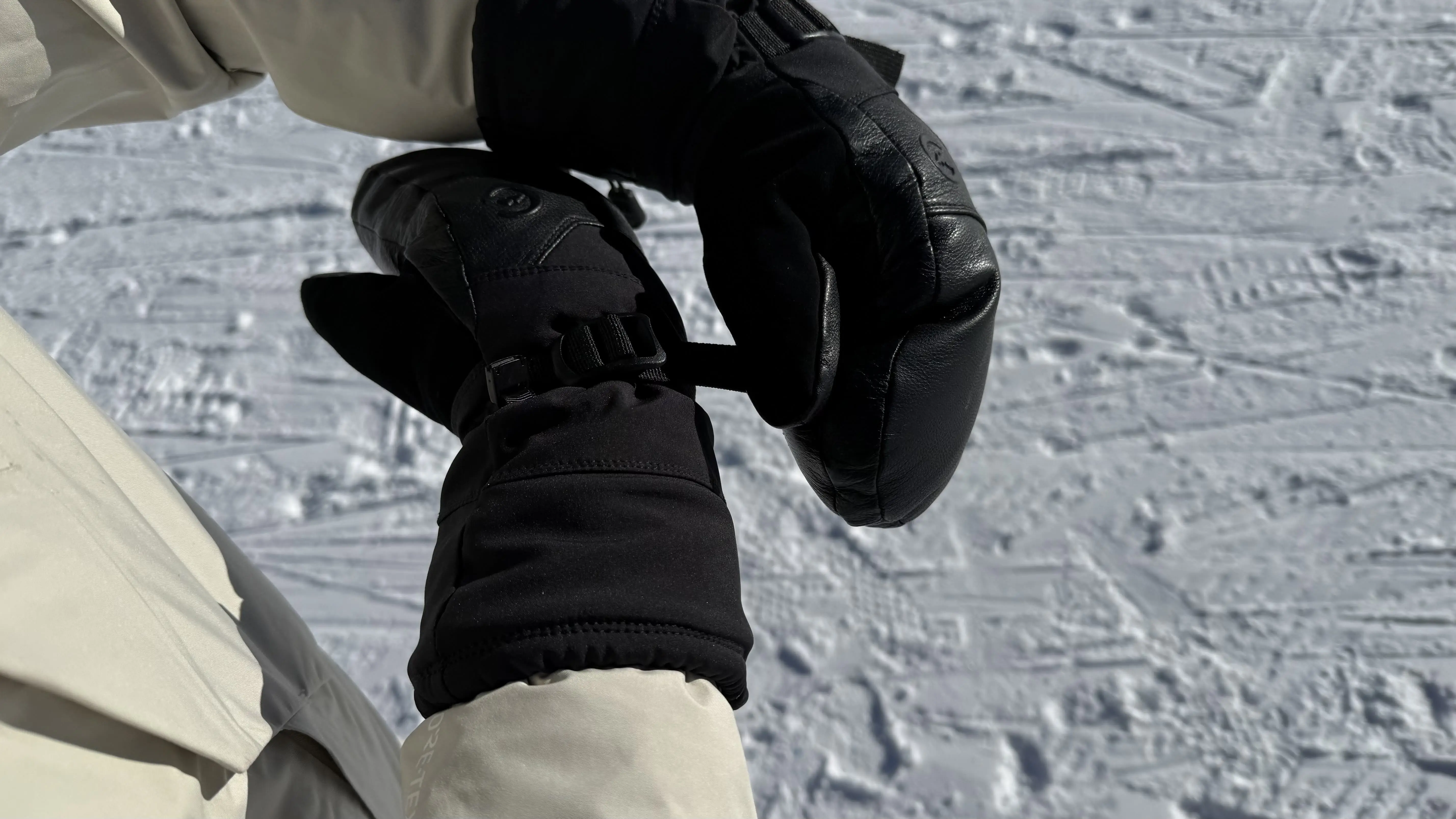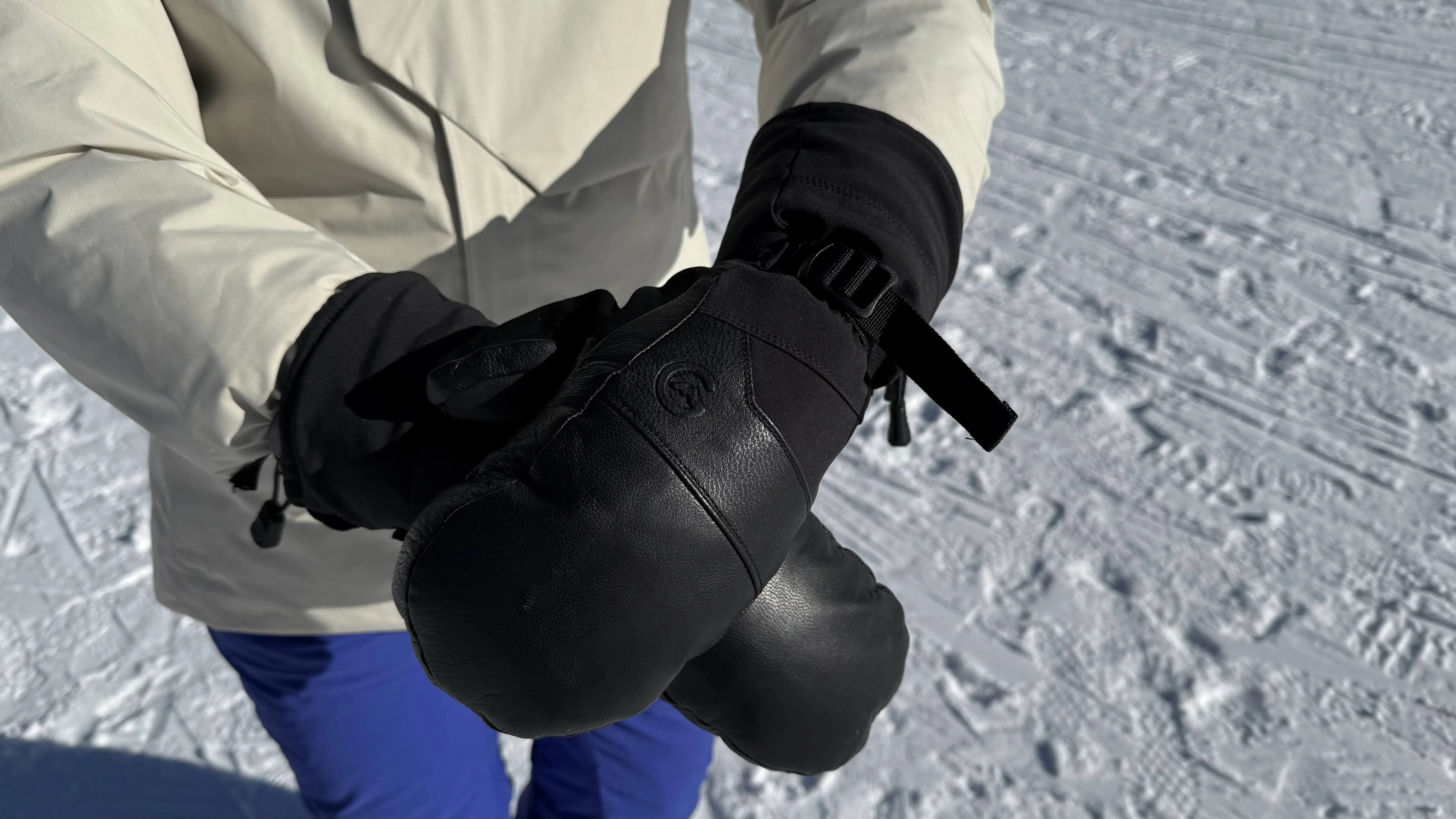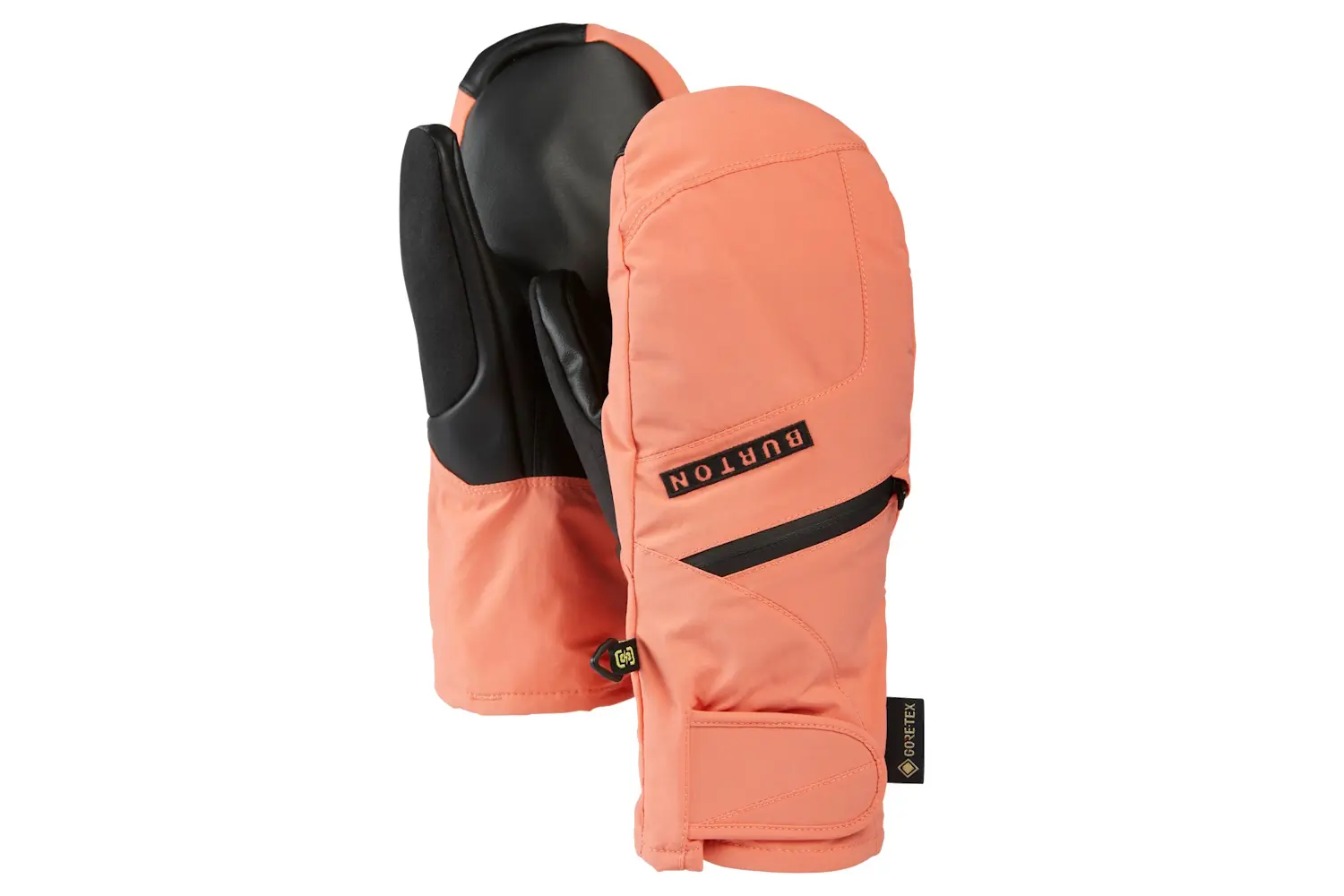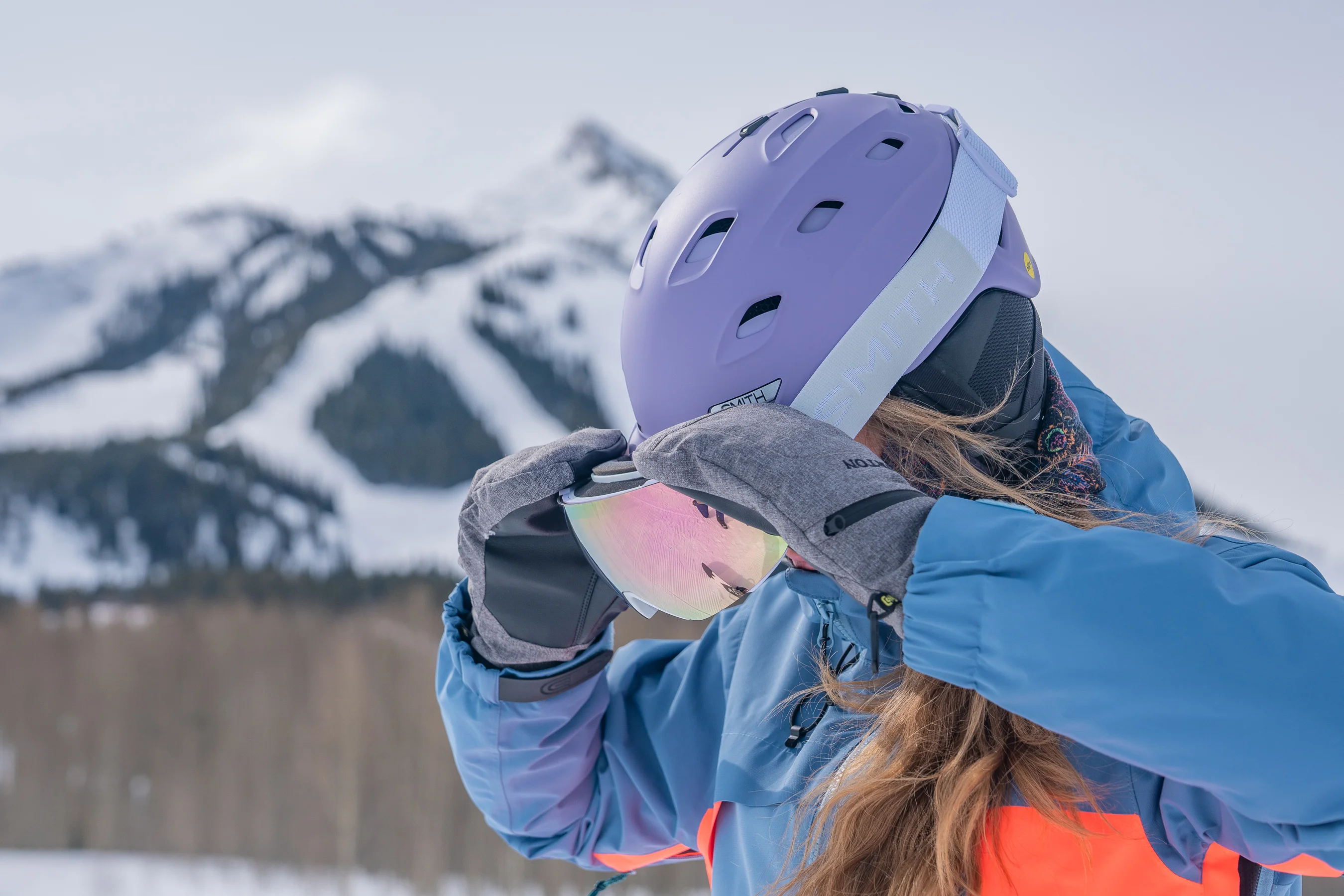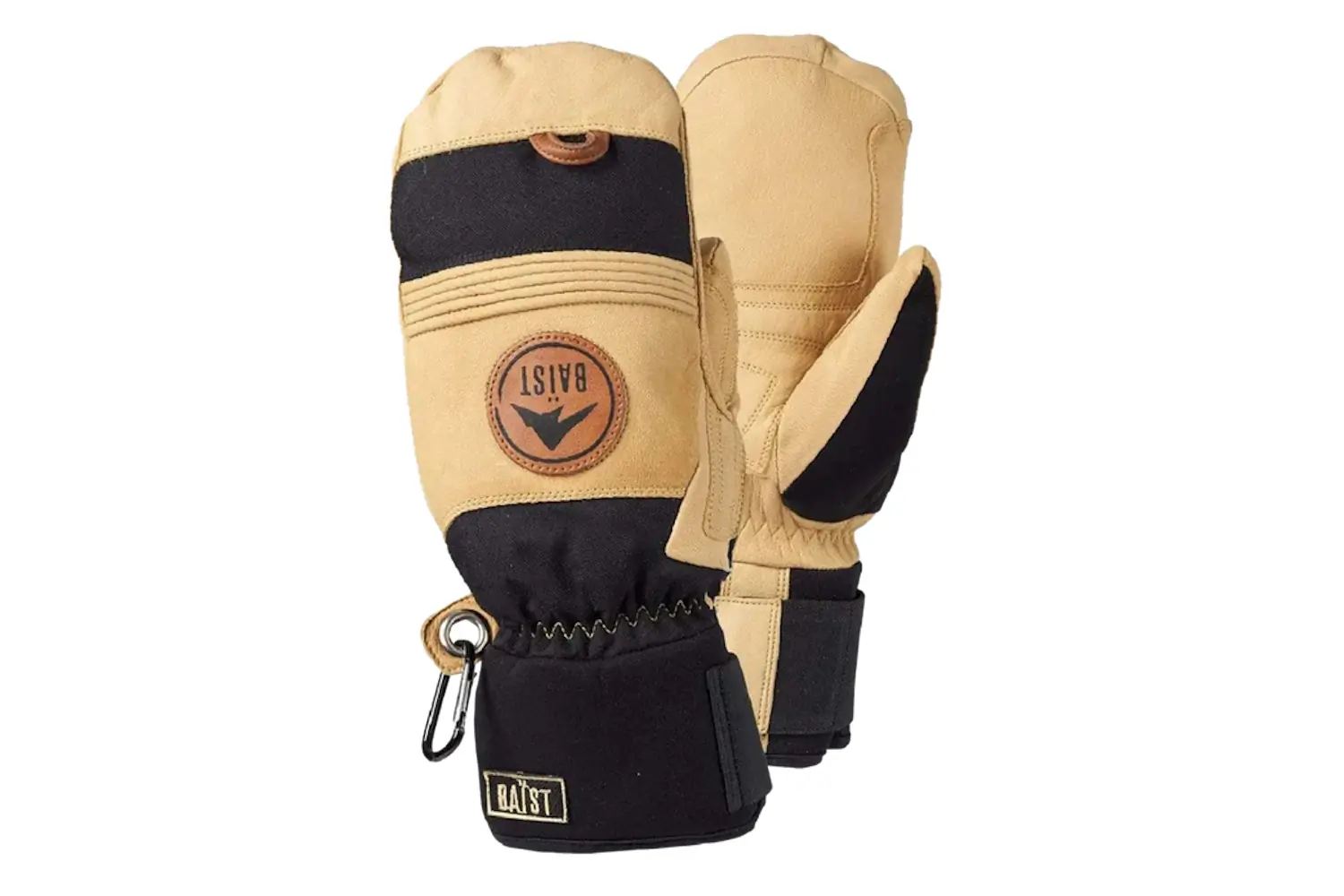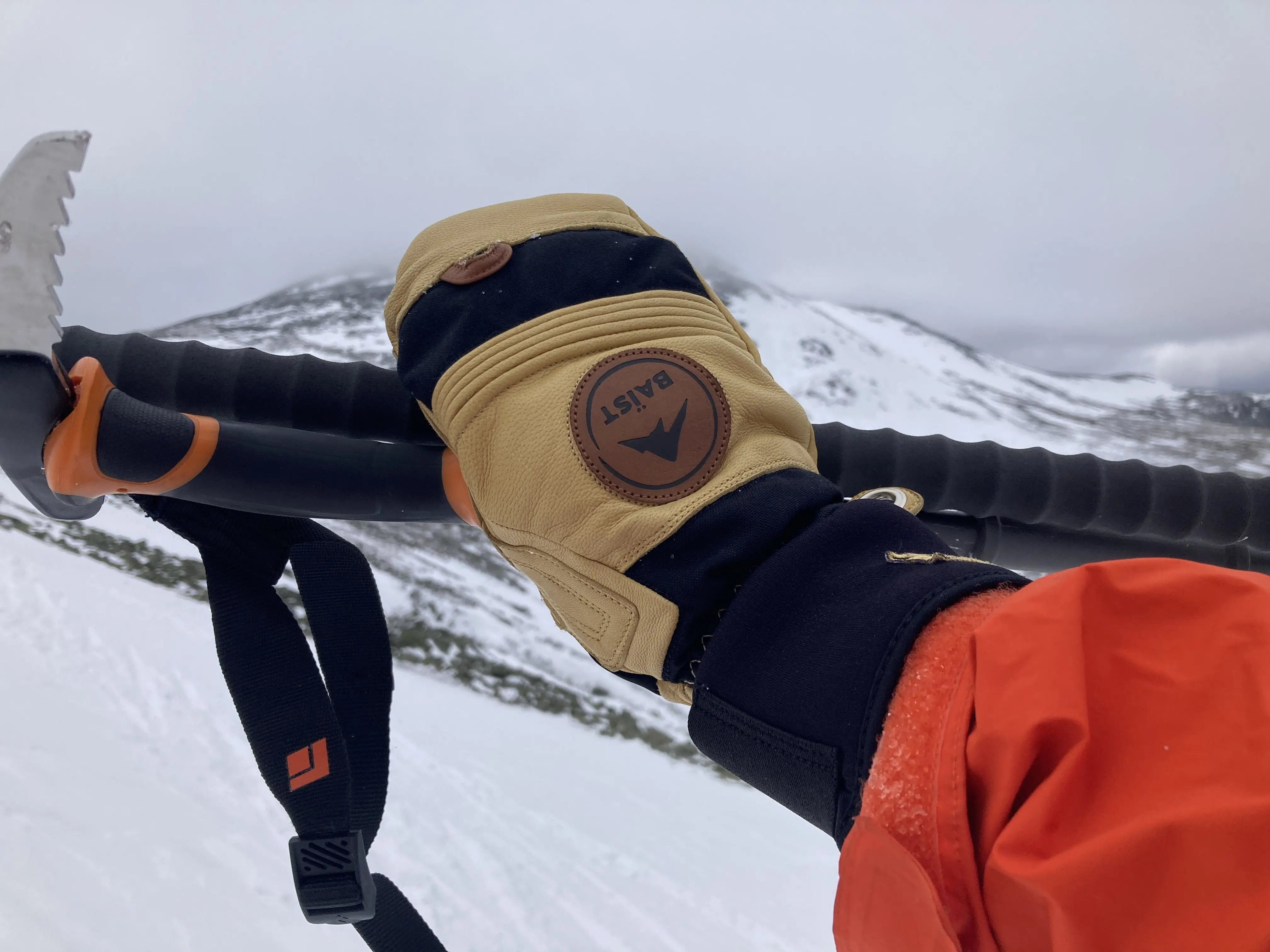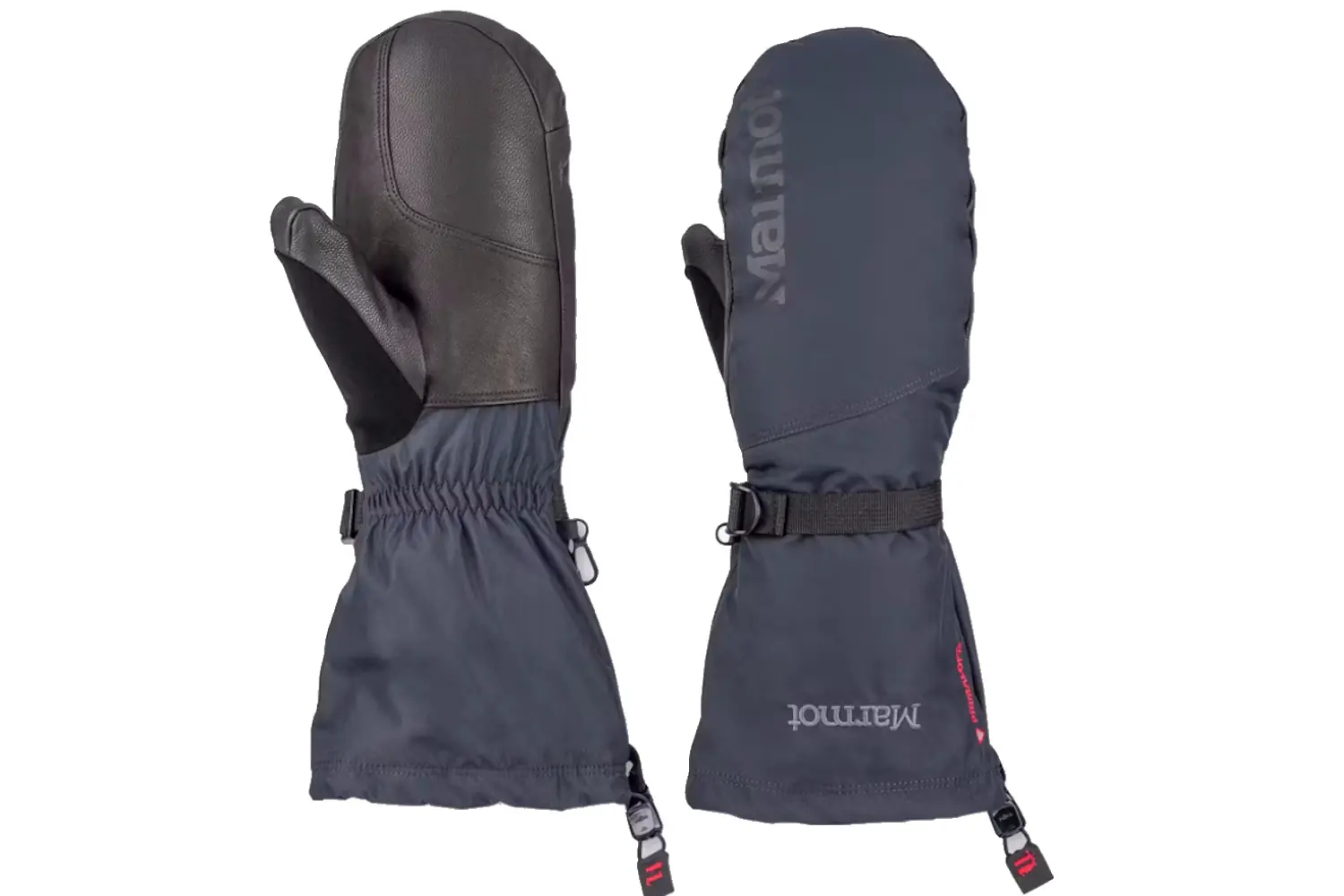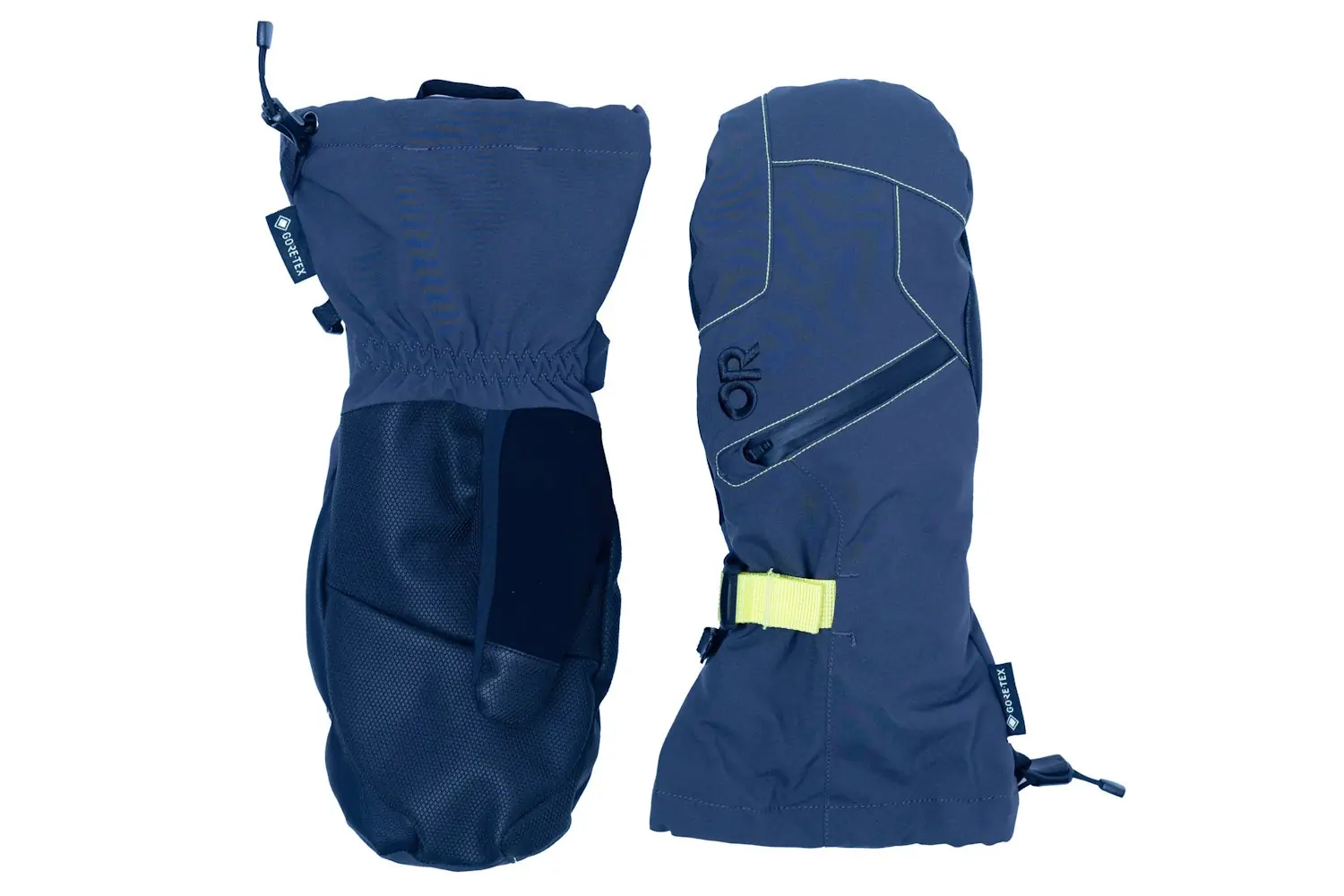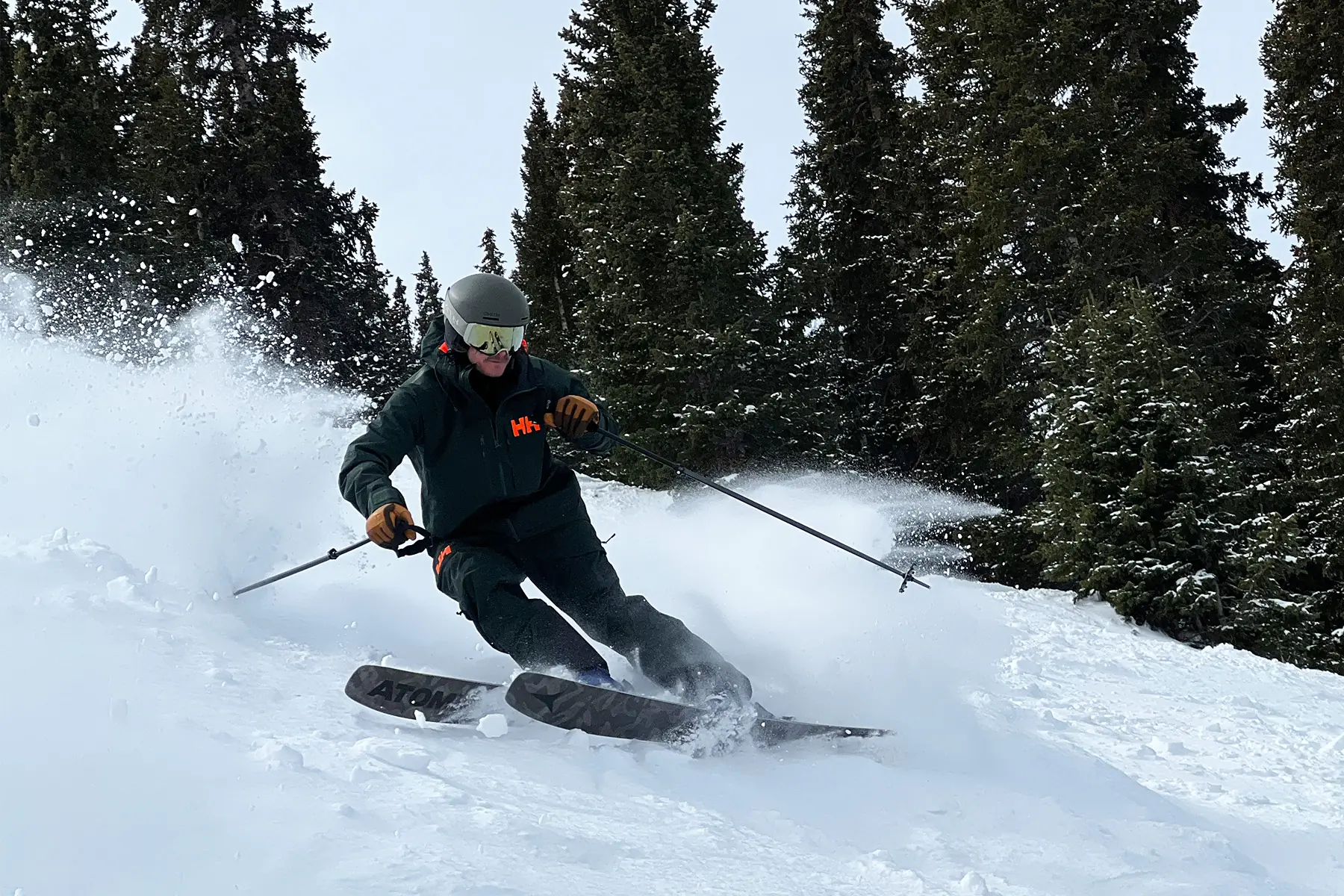Sometimes, traditional five-finger gloves don’t cut it — your digits need to be in a cocoon, otherwise known as a winter mitten. While you’re inherently sacrificing dexterity, many well-made mitts offer various insulation levels, durability, and style.
On the bitter-coldest days of the year, you might opt for a pair with a super-long collar, like the Black Diamond Mercury Mitts. Other days, you could need a large pull loop, like on the The North Face Montana GORE-TEX Mitts, so they’re easy to slide on. Our list of recommendations comprises the best winter mittens on the market today.
We have been field-testing winter mittens since 2021, putting them through the paces in the mountains from Colorado to New Hampshire. Since then, this guide has gone through eight iterations. We continue to test new products and add helpful information to help you find the best winter mittens for your needs.
Editor’s Note: We updated this guide on October 14, 2025, with the field-tested and freshly launched Ortovox Freeride Cozy Mitten. We also added an extended rating system that includes Warmth and Insulation, Weatherproofing, Dexterity and Grip, Durability and Reinforcements. Dive into the deep end of our Winter Mittens Rating System section below to learn more.
The Best Winter Mittens of 2025-2026
Black Diamond Mercury Mitts
-
Warmth and Insulation
9.5
-
Weatherproofing
9.5
-
Dexterity and Grip
7.0
-
Durability and Reinforcements
8.0
- Shell/Material: Stretchy polyester, 100% recycled outer shell with goat leather palms
- Insulation: 340 g PrimaLoft Gold Insulation with Cross Core on back of hand with soft, recycled fleece lining
- Cuff type: Long gauntlet
- Waterproof: Yes, a BD.dry insert and a PFC-free DWR finish
Pros
- Very warm
- Good dexterity for a mitten
- Long cuffs keep moisture out
Cons
- Some users report a tight fit
Flylow Oven Mitt
-
Warmth and Insulation
8.0
-
Weatherproofing
7.0
-
Dexterity and Grip
7.0
-
Durability and Reinforcements
7.0
- Shell/Material: Pigskin leather
- Insulation: 200 g of SpaceLoft synthetic insulation on back of the hand, 100 g on the front
- Cuff type: Undercuff
- Waterproof: There is no waterproof membrane but the beeswax coating repels moisture effectively
Pros
- Good value
- Durable
Cons
- The black color of the leather runs when wet
Dakine Women’s Galaxy GORE-TEX Mitt
-
Warmth and Insulation
8.5
-
Weatherproofing
9.5
-
Dexterity and Grip
8.5
-
Durability and Reinforcements
7.0
- Shell/Material: PFC-free ePE GORE-TEX insert with 100% recycled polyamide, leather shell (60% goat leather, 17% polyester, 20% polyamide, 3% elastane), 100% goat leather palm treated with PFC-free DWR; 360 gram wool blend liner (64% wool, 20% polyester, 16% nylon)
- Insulation: PrimaLoft Gold 100% recycled polyester
- Cuff type: Short 2.5" cuff
- Waterproof: Yes
Pros
- Very durable exterior
- Streamlined cuff with space for fingers to move
- Recycled insulation
- PFC-free ePE GORE-TEX insert for eco-friendly waterproofness
Cons
- No nose wipe
- If you want a long collar, look elsewhere
The North Face Montana GORE-TEX Mitts
-
Warmth and Insulation
9.5
-
Weatherproofing
9.5
-
Dexterity and Grip
8.5
-
Durability and Reinforcements
7.5
- Shell/Material: 100% goat leather
- Insulation: 300g/150g Heatseeker Eco 70% post-consumer recycled polyester on back of hand/palm
- Cuff type: Elastic undercuff
- Waterproof: Yes, GORE-TEX insert, non-PFC DWR finish on gauntlet
Pros
- Extremely warm
- Easy-to-grab, spacious, streamlined pull loop on cuff
- Lean elastic wrist straps
- Durable, soft goat leather
Cons
- No color options
Arc’teryx Sabre Mitten
-
Warmth and Insulation
9.0
-
Weatherproofing
9.8
-
Dexterity and Grip
8.9
-
Durability and Reinforcements
8.9
- Shell/Material: Goat leather body mixed with a lightweight, durable, breathable softshell fabric cuff
- Insulation: 100 g PrimaLoft Gold Eco insulation and 133 g PrimaLoft Silver insulation
- Cuff type: Undercuff
- Waterproof: Yes, GORE-TEX waterproof-breathable insert
Pros
- Extremely high-end construction
- Blend of goat leather and light, breathable cuff
- Very sleek undercuff design
- High warmth to weight ratio
Cons
- Expensive
- Lacks nose wipe
- No hang loop
Outdoor Research Alti II GORE-TEX Mitts
-
Warmth and Insulation
9.5
-
Weatherproofing
9.8
-
Dexterity and Grip
7.5
-
Durability and Reinforcements
9.5
- Shell/Material: Ripstop nylon + GORE-TEX shell with Pittards Armor-Tan leather palm
- Insulation: PrimaLoft Gold 170 g synthetic insulation, removable liner with 340 g PrimaLoft Gold insulation
- Cuff type: Long gauntlet
- Waterproof: GORE-TEX 2L waterproof/breathable membrane that’s Bluesign-approved
Pros
- Very warm
- The oversized cuffs are handy in deep powder
Cons
- Price
KUIU Northstar Glomitt
-
Warmth and Insulation
8.0
-
Weatherproofing
9.0
-
Dexterity and Grip
9.0
-
Durability and Reinforcements
8.0
- Shell/Material: PrimeFlex Polyester, Pittard's OilTac Leather
- Cuff type: Gauntlet style for over-the-cuff use
- Insulation: PrimaLoft Gold with Cross Core (340 g on the back; 170 g on the palm)
- Waterproof: HDry waterproof membrane
Pros
- Heavy-duty lobster mitts for below-freezing environments
- Lobster claw design maximizes warmth and finger dexterity
- Lifetime warranty
Cons
- Pricey
- Index finger can feel cramped
- Not offered in a size small
Other Toasty Hand Muffs We Recommend
-
Warmth and Insulation
8.0
-
Weatherproofing
7.5
-
Dexterity and Grip
7.0
-
Durability and Reinforcements
7.5
- Shell/Material: All leather cowhide exterior
- Insulation: 380 g Thinsulate insulation on inner palm, 490 g on back of hand
- Cuff type: Elastic undercuff
- Waterproof: Yes, waterproof hipora membrane
Pros
- Durable
- Good dexterity
- Warm
Cons
- Requires a short break-in period to reach optimal feel
-
Warmth and Insulation
7.5
-
Weatherproofing
9.5
-
Dexterity and Grip
7.5
-
Durability and Reinforcements
8.5
- Shell/Material: Full-grain leather, Nubuck suede reinforcements on palm, polyester cuff
- Insulation: 100g PrimaLoft Gold Eco insulation in back of hand and palm
- Cuff type: Gauntlet
- Waterproof: GORE-TEX waterproof insert
Pros
- Simple wrist cinch
- Streamlined and classy
- Soft interior
Cons
- Not everyone prefers dividers between fingers
- Pricier choice
-
Warmth and Insulation
9.0
-
Weatherproofing
9.5
-
Dexterity and Grip
8.0
-
Durability and Reinforcements
8.9
- Shell/Material: Goatskin leather with recycled wool-polyester padding and merino fleece liner
- Insulation: Merino insulation and interior linter
- Cuff type: Undercuff
- Waterproof: Pertex water-resistance and windproofness
Pros
- Pliable palms offer great hand feel on ski pole grips
- Roomy grab loop
- Fits smoothly beneath jacket cuffs
Cons
- Lean palm material lacks insulation — could feel cold for some riders
- Lacks smooth nose wipe on thumb
-
Warmth and Insulation
9.0
-
Weatherproofing
9.5
-
Dexterity and Grip
7.9
-
Durability and Reinforcements
8.0
- Shell/Material: Softshell with goat skin palm and trim
- Insulation: 700-fill DownTek with high-pile fleece lining on the back of hand, moisture-wicking lining on palm
- Cuff type: Long gauntlet
- Waterproof: Yes, a waterproof, windproof, and breathable insert called AquaBloc
Pros
- Soft, cuddly interior
- Very warm
- Ample dexterity for this level of warmth
Cons
- Narrow cuff isn’t easy to pull over jacket sleeves
-
Warmth and Insulation
8.0
-
Weatherproofing
9.5
-
Dexterity and Grip
8.0
-
Durability and Reinforcements
8.9
- Shell/Material: 2-layer GORE-TEX waterproof-breathable exterior fabric
- Insulation: ThermacoreECO synthetic insulation
- Cuff type: Undercuff
- Waterproof: Yes, GORE-TEX
Pros
- Warmth adjustability with glove liners, ventilation zipper, and pocket for hand warmers
- High-quality materials
- Streamlined design
Cons
- Touchscreen compatibility is not a selling point for material on palm — but it’s durable
- We’d like a stretchier stitch in the glove liners
-
Warmth and Insulation
9.0
-
Weatherproofing
9.5
-
Dexterity and Grip
7.0
-
Durability and Reinforcements
7.5
- Shell/Material: Goat leather and cordura
- Insulation: Thinsulate and Thermolite
- Cuff type: Neoprene undercuff with Velcro adjustment
- Waterproof: Yes
Pros
- Durability
- Best-in-class dexterity
Cons
- Doesn’t come with leash
- Not for extra-cold days
-
Warmth and Insulation
8.0
-
Weatherproofing
9.5
-
Dexterity and Grip
7.9
-
Durability and Reinforcements
8.0
- Shell/Material: 100% polyester, plain weave, PFC-free
- Insulation: Water-repelling PrimaLoft Gold synthetic insulation, 55% recycled content
- Cuff type: Long gauntlet
- Waterproof: Yes
Pros
- Warm
- Durable, pliable outer shell
- Best-in-class gauntlet drawcord design
Cons
- Roomier mitt — check sizing chart
-
Warmth and Insulation
7.9
-
Weatherproofing
7.9
-
Dexterity and Grip
7.9
-
Durability and Reinforcements
7.5
- Shell/Material: 2L polyester with waterproof PU palm
- Insulation: EnduraLoft polyester insulation (200g on backs of hands, 133g on palms and fingers)
- Cuff type: Medium-length gauntlet with elastic cinch
- Waterproof: Yes, GORE-TEX 2L
Pros
- Affordable for this grade of mitt
- Handwarmer pocket for extra-cold days
Cons
- Buckle and cinch feel flimsy
Winter Mittens Comparison Chart
Scroll right to view all of the columns: Price, Shell/Material, Cuff Type, Insulation, Warmth.
| Winter Mittens | Price | Shell/Material | Cuff Type | Insulation | Warmth |
| Black Diamond Mercury | $120 | Stretchy polyester outer shell with goat leather palms | Long gauntlet | 170 g PrimaLoft Gold Cross Core on the back; 133 g PrimaLoft Gold on palms | 9/10 |
| Flylow Oven | $55 | Pigskin leather | Undercuff | 200 g of SpaceLoft synthetic insulation on back of the hand, 100 g on the front | 7.5/10 |
| Dakine Women’s Galaxy GORE-TEX | $115 | PFC-free ePE GORE-TEX insert with 100% recycled polyamide, leather shell (60% goat leather, 17% polyester, 20% polyamide, 3% elastane), 100% goat leather palm with PFC-free DWR; 360 g wool blend liner | Short | PrimaLoft Gold 100% recycled polyester | 8/10 |
| The North Face Montana GORE-TEX | $150 | 100% goat leather | Elastic undercuff | 300g/150g Heatseeker Eco 70% post-consumer recycled polyester on back of hand/palm | 9/10 |
| Arc’teryx Sabre | $180 | Goat leather body mixed with a lightweight, durable, breathable softshell fabric cuff | Undercuff | 100 g PrimaLoft Gold Eco insulation and 133 g PrimaLoft Silver insulation | N/A |
| Outdoor Research Alti II GORE-TEX | $209 | GORE-TEX 2L + ripstop nylon shell with leather palm | Long gauntlet | PrimaLoft Gold 170 g synthetic insulation | 8.5/10 |
| KUIU Northstar Glomitt | $139 | PrimeFlex Polyester, Pittard’s OilTac Leather | Gauntlet style for over-the-cuff use | PrimaLoft Gold with Cross Core (340 g on the back; 170 g on the palm) | N/A |
| Give’r Frontier | $139 | All leather cowhide exterior | Elasticated undercuff | 380 g Thinsulate on inner palm, 490 g on back of hand | 8/10 |
| Stio Objective Insulated Mitt | $189 | Full-grain leather, nubuck suede reinforcements on palm, polyester cuff | Gauntlett | 100g PrimaLoft Gold Eco insulation in back of hand and palm | N/A |
| Ortovox Freeride Cozy Mitten | $160 | Goatskin leather with recycled wool-polyester padding and merino fleece liner | Undercuff | Merino insulation and interior linter | N/A |
| Gordini Women’s Polar | $120 | Softshell with goat skin palm and trim | Long gauntlet | 700-fill DownTek with high-pile fleece lining on the back of hand, moisture-wicking lining on palm | 7.5/10 |
| Burton Women’s GORE-TEX Under | $85 | 2-layer GORE-TEX | Undercuff | ThermacoreECO synthetic insulation | 7.5/10 |
| Baist Everyday | $145 | Goat leather and cordura | Neoprene undercuff with Velcro adjustment | Thinsulate and Thermolite | N/A |
| Marmot Expedition | $120 | 100% polyester, plain weave, PFC-free | Long gauntlet | Water-repelling PrimaLoft Gold synthetic insulation, 55% recycled content | 9/10 |
| Outdoor Research GORE-TEX Revolution | $90 | 2L polyester with waterproof PU palm | Medium-length gauntlet with elastic cinch | Yes, GORE-TEX 2L | 7.5/10 |
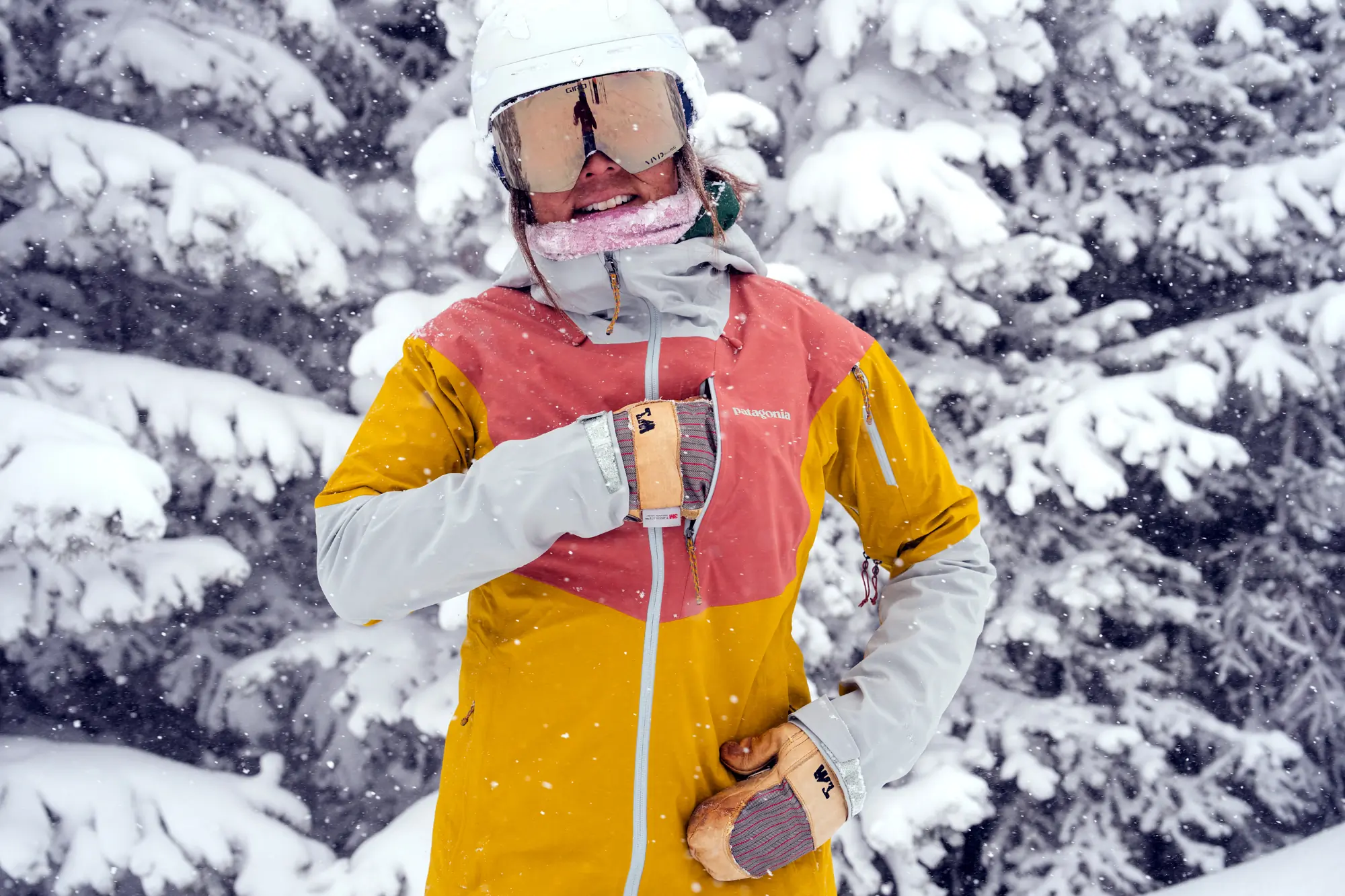
How We Tested Winter Mittens
The GearJunkie team is made up of skiers, snowboarders, and outdoor instructors who work and play outside year-round, including when the temps drop, which is the perfect time to test winter mittens.
Our Expert Testers
Senior Snow Sports Editor Morgan Tilton learned to ski in Telluride, Colo., and lives in one of the nation’s coldest locations, Gunnison Valley, where it’s not uncommon to drop into negative digits plus windchill.
Our test team includes lead GearJunkie lead gear tester, reviewer, and photographer Eric Phillips, a hunter, splitboarder, search-and-rescuer, and snowmobiler based in the Colorado Rockies.


Tester Mattie Schuler is no stranger to cold weather. As a childhood educator for a nature school, the majority of Schuler’s days are spent outside teaching kids — in cold, windy, wet weather — through the outdoor classroom program she founded in 2019.
Over the past decade, Schuler has tested dozens and dozens of gloves and mittens for personal and professional utility, so she has a solid grip on the metrics from warmth to comfort. She’s quite picky about certain variables like nose wipe placement and if the wrist leashes are too long or thick.
New Hampshire-based backcountry skier Matt Hart, who has decades of backcountry skiing and product testing under his belt, tested mitts, too. Hart first skied Tuckerman Ravine when he was a 16-year-old before heading west to live in the Cascades, Wasatch, and Front Range mountains. In 2023, he returned to New Hampshire, where he found the famously ridiculous weather of Mount Washington perfect for gear testing.
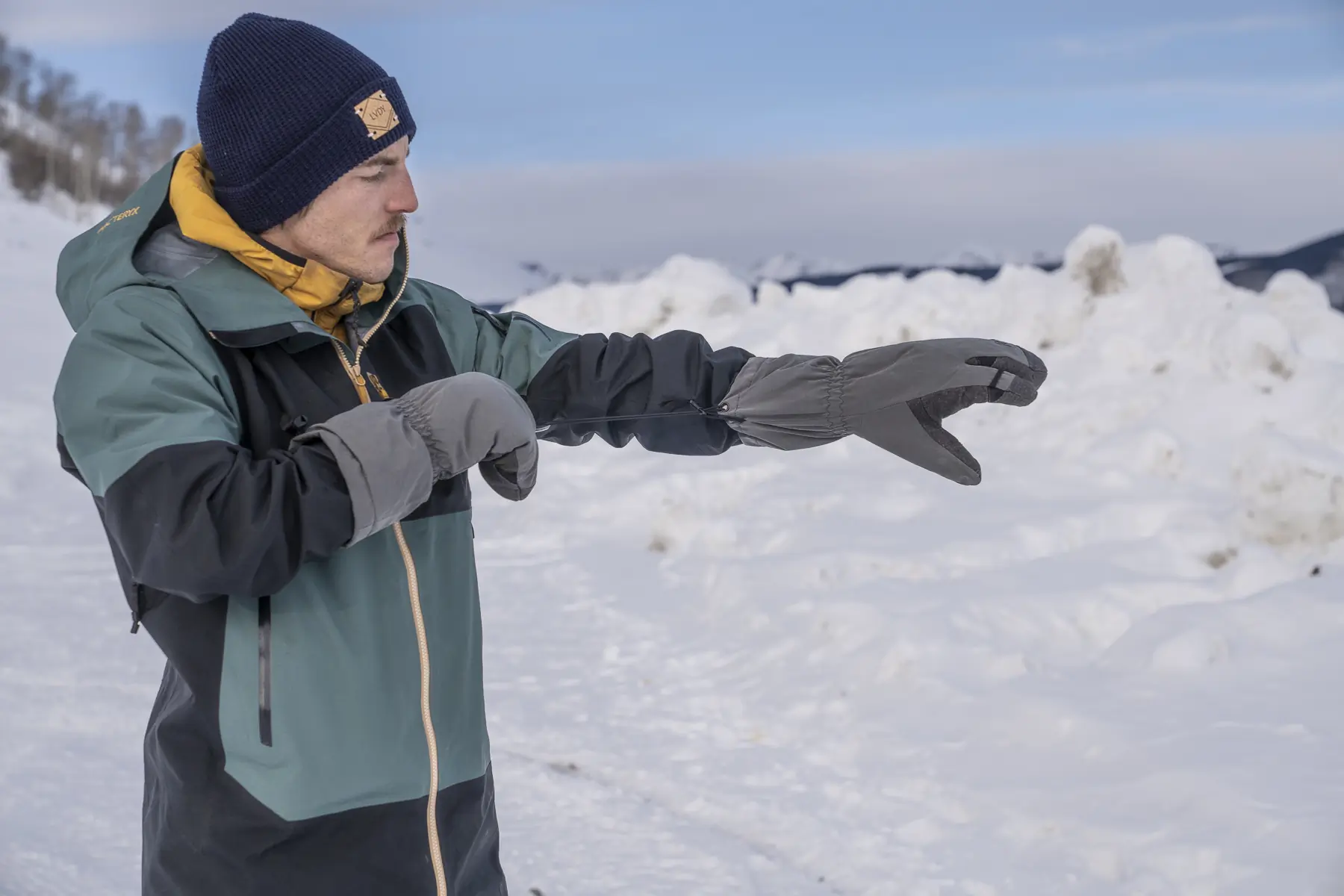



Other contributors include snowboarder and gear tester Austin Beck-Doss, who hails from Wyoming, as well as gear tester Heather Balogh Rochfort, a writer and editor based outside of Aspen, Colo.
Our Testing Grounds
On gear-shattering days, Senior Editor Morgan Tilton pulls on winter mittens at Crested Butte Mountain Resort or while taking a skate on the Crested Butte Nordic trails.
In 2025, she tested mitts on -10 degree days in Montana, at Big Sky Resort, and while cat skiing laps on 10-degree, blustery back-to-back days in the Valhalla range of British Columbia. In Canada, mitts kept her paws warm while backcountry camping at Baldface Valhalla, lapping Whitewater Ski Resort, and exploring RED Mountain Ski Resort. Those adventures totaled more than 30 hours of continuous testing (excluding time in the sleeping bag) across 33,300 vertical feet and 104 miles on snow.
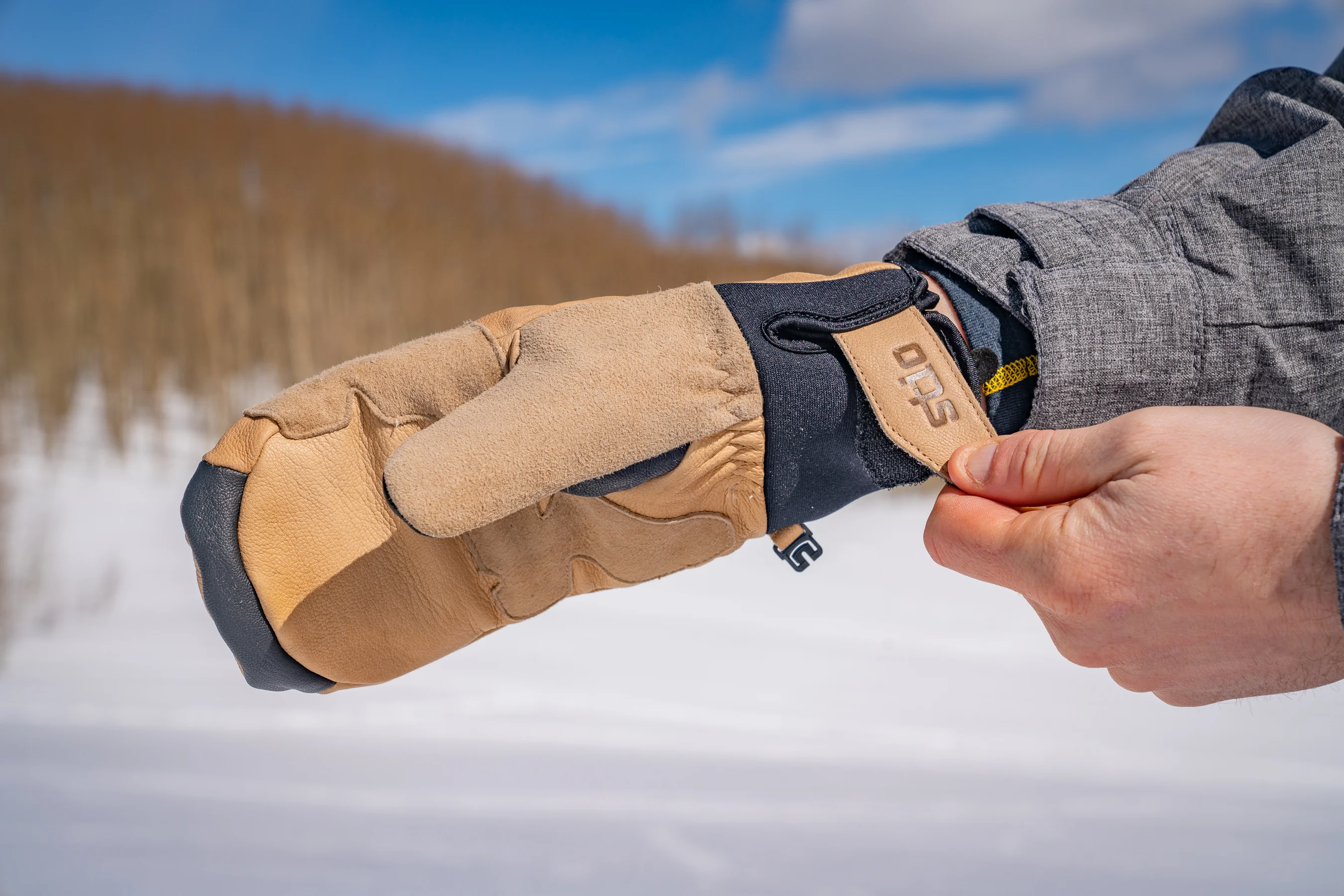



Schuler grew up in Wisconsin and, for more than a decade, has lived in Colorado, where she teaches outside for a childhood outdoor school curriculum she co-founded. When she’s not at work, she tests mittens while snowboarding at Eldora Mountain, which is known for frigid temps, gusty winds, and whiteout conditions.
Other testing zones include Wyoming and New Hampshire, both of which are renowned for their harsh and unforgiving winter conditions. The GearJunkie team has also gathered twice annually for a ski week at Crested Butte Mountain Resort in 2022 and 2023.
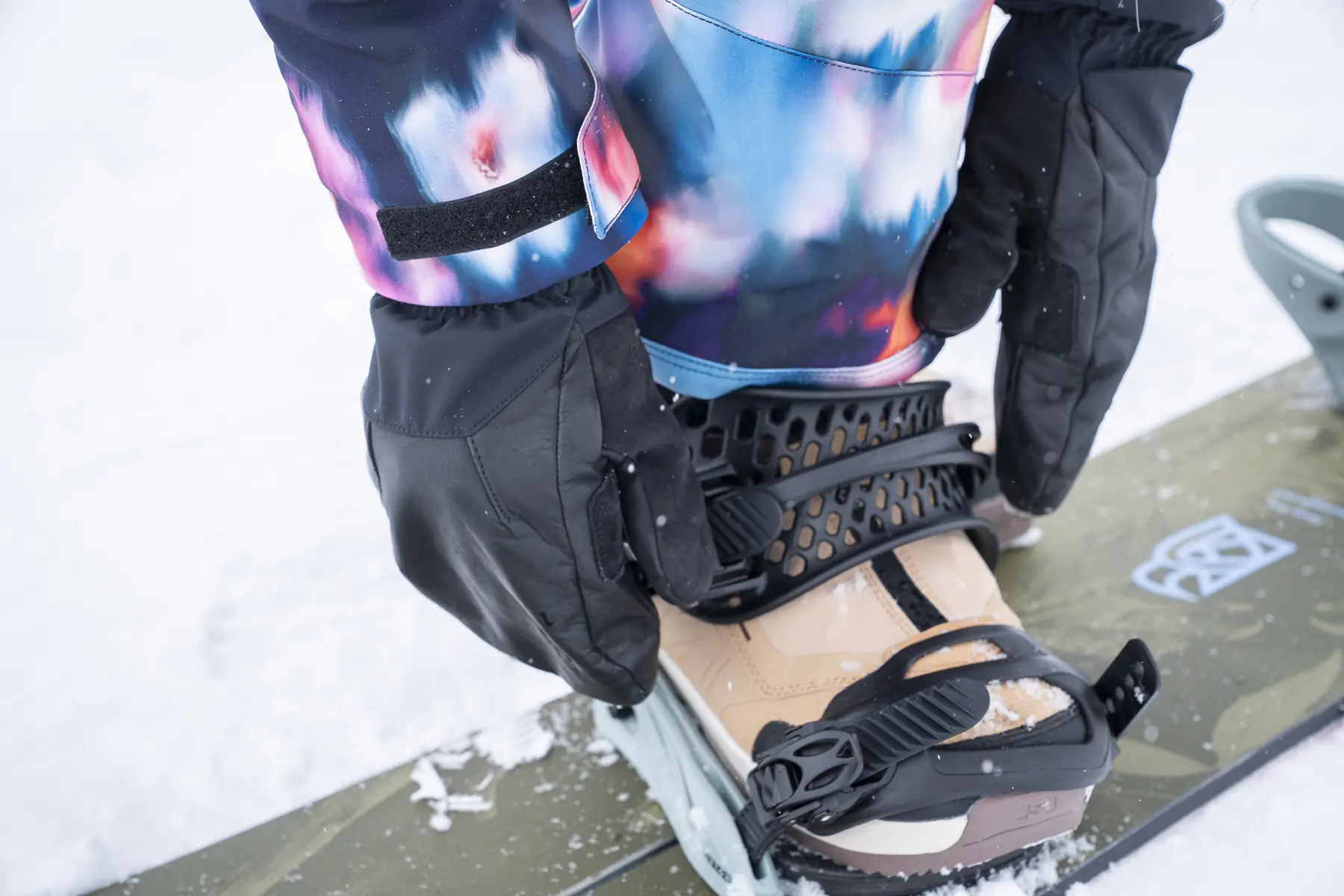



Our Testing Process
While assessing pairs of winter mittens, we consider the insulation, warmth, waterproofness, windproofness, and durability. We examine the overall materials, sustainability, malleability, break-in period, ergonomics, comfort, style, cut, fit, liner, cuff, and value.
We also consider the accessory details, including the nose wipe, vents, wrist leash and cinch, eyelets or other attachment points, and carabiners. While dexterity is reduced compared to wearing gloves, there’s also a range of dexterity for mittens based on their silhouette.
We make an effort to test every pair of mittens in the coldest, windiest conditions over many days of field testing each winter.
Our Winter Mittens Rating System
We score each pair of winter mittens on a 1–10 scale for Warmth and Insulation, Weatherproofing, Dexterity and Grip, Durability, and Reinforcements.
- Warmth and insulation in a mitten hinges on the type of insulation (down, synthetic, hybrid), as well as the insulation weight and removable liners. We test every set against the intended insulation value. The type of liner (soft fleece vs. wool) influences comfort and moisture-wicking power. Some liners are removable, washable, and touchscreen-compatible, which cumulate more points.
- While considering weatherproofing, we take into account how the mitts shield moisture and wind.
- Dexterity and fit examines the overall shape and how it translates to airflow and liners. We take note of pre-curved shapes to improve grip and feel, as well as stretch panels for flexibility.
- Durability and reinforcements consider how the pair will endure abrasion from ski edges or driving a snowmobile: Are there reinforced palms, or fingers?
The Overall Rating is based on contextual, editorial judgment, and the complex user experience across various scenarios and conditions.
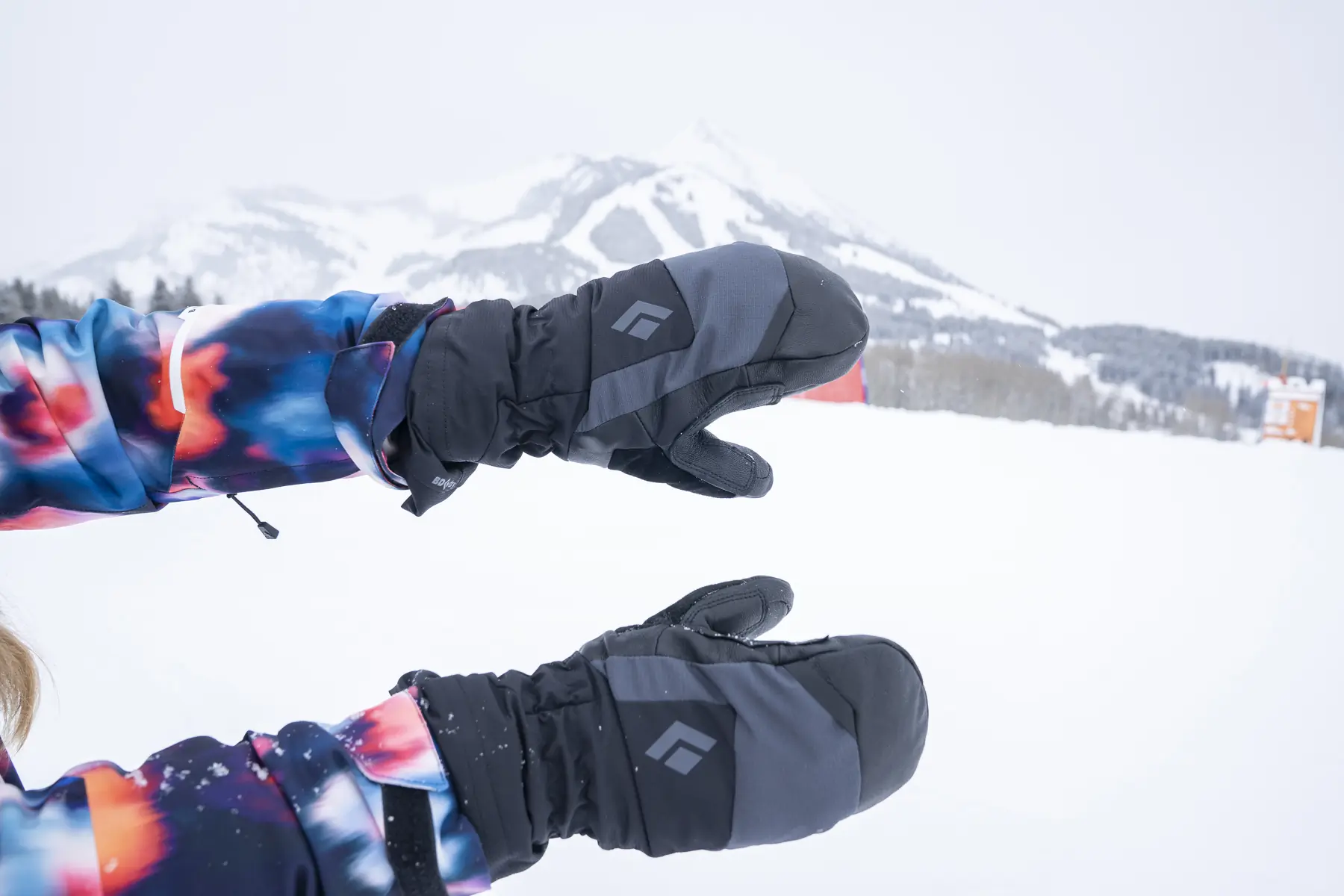



Buyer’s Guide: How to Choose Winter Mittens
If you’re using mittens in snowy, wet, and cold weather — say, on the ski slopes or in the backcountry — you’ll want a mitten that is insulated, waterproof, and has key details like a nose wipe or wrist leashes.
Many mittens will be a bit thicker or wider and more cumbersome than ski gloves and might compromise your dexterity.
Other mittens will be leaner with less insulation, because they are made for cardio activities like running or cross-country skiing, so you’ll get plenty of breathability. Some streamlined mittens are made with premium synthetic fill, like the Arc’teryx Sabre Mitten, making them extremely warm yet lean — and it’ll be pricier.
If the temps drop, you can add glove liners inside your mittens or hand warmers to help stave off the temperature plummet.
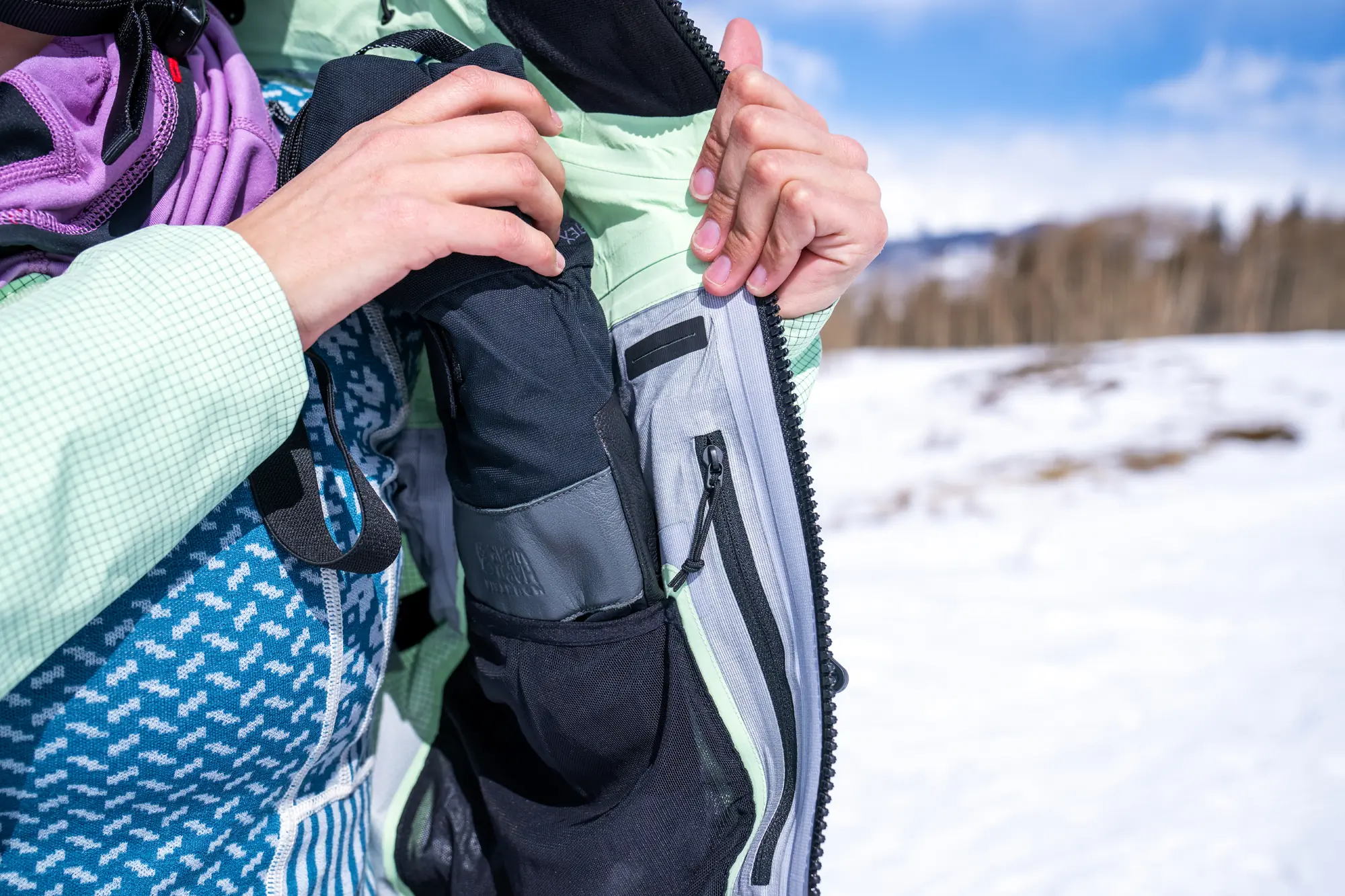



Warmth Value
Winter comes with huge range of temperatures and weather conditions including extreme wind, humidity, and snowstorms.
If you struggle with keeping your extremities warm, you may want mitts with a higher weight, down-fill insulation, or a thicker shell. Folks with Raynaud’s syndrome might also consider battery-powered mittens.
When the temps are near freezing (versus closer to 0 degrees) or you’ll be generating lots of body heat, consider mittens with ventilation or a multilayer system. That way, you can remove the liner, like the Burton Women’s GORE-TEX Under Mittens or the Black Diamond Mercury Mitts. Both of those designs have a lightweight removable liner.
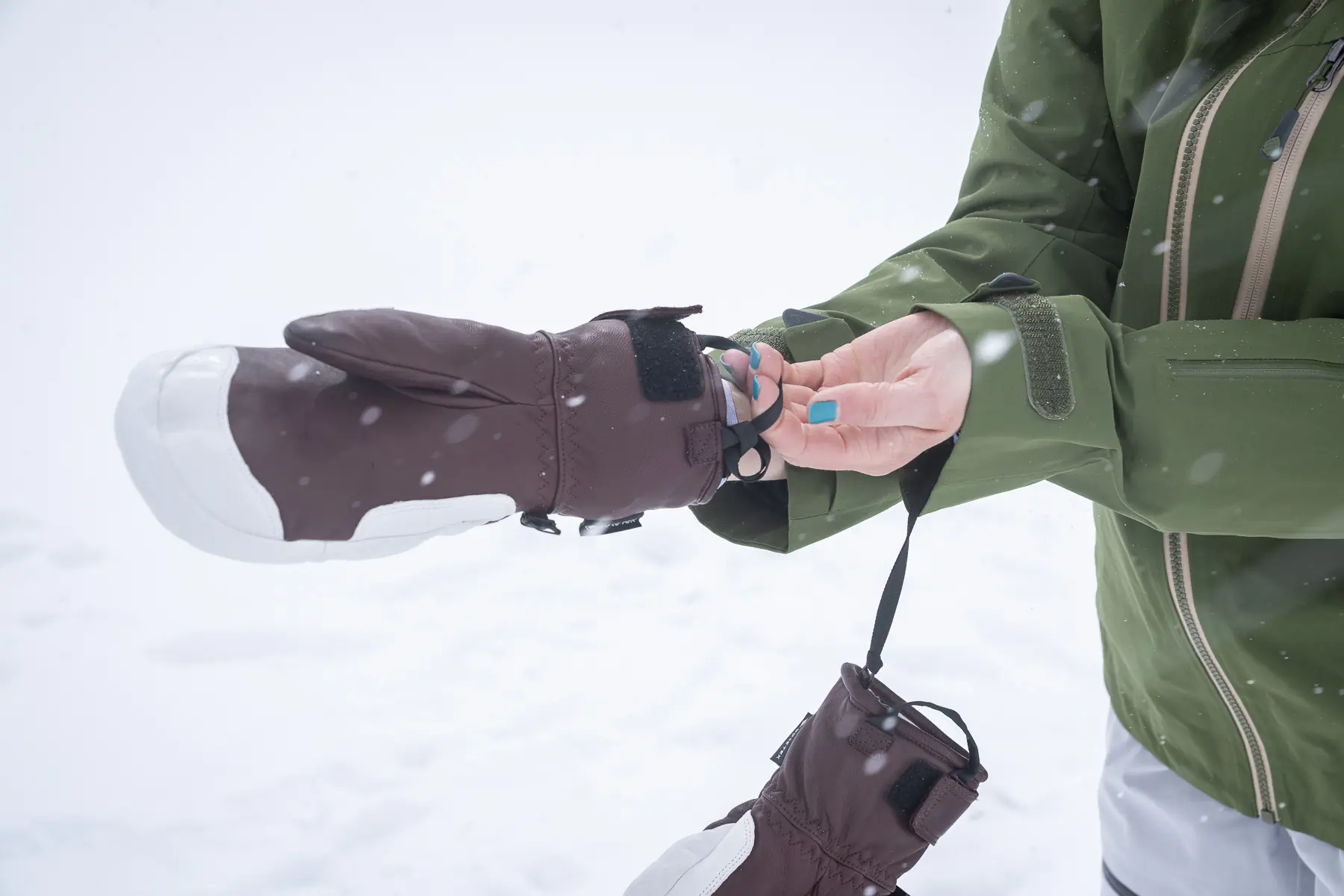



Some manufacturers provide a warmth rating in degrees Fahrenheit. Others have a warmth rating system that compares mittens within the brand. Warmth can be tricky to measure. The type of materials (such as a windproof, waterproof face and internal liner) and fill (synthetic or down) have an impact, but so does a person’s circulation and body warmth.
Estimated Effective Temperature Range
- Give’r Frontier: –10 °F to –20 °F
- Burton GORE-TEX Under: –5 °F to 0 °F
- The North Face Montana GORE-TEX: ~0 °F to 5 °F
- Marmot Expedition: ~0 °F to 5 °F
- Outdoor Research Alti II GORE-TEX: ~0 °F to 10 °F
- Black Diamond Mercury: ~0 °F to 10 °F
- Dakine Galaxy GORE-TEX: ~5 °F to 15 °F
- Flylow Oven: ~10 °F to 20 °F
- Gordini Polar: ~10 °F to 20 °F
- Outdoor Research GORE-TEX Revolution: ~20 °F to 30 °F
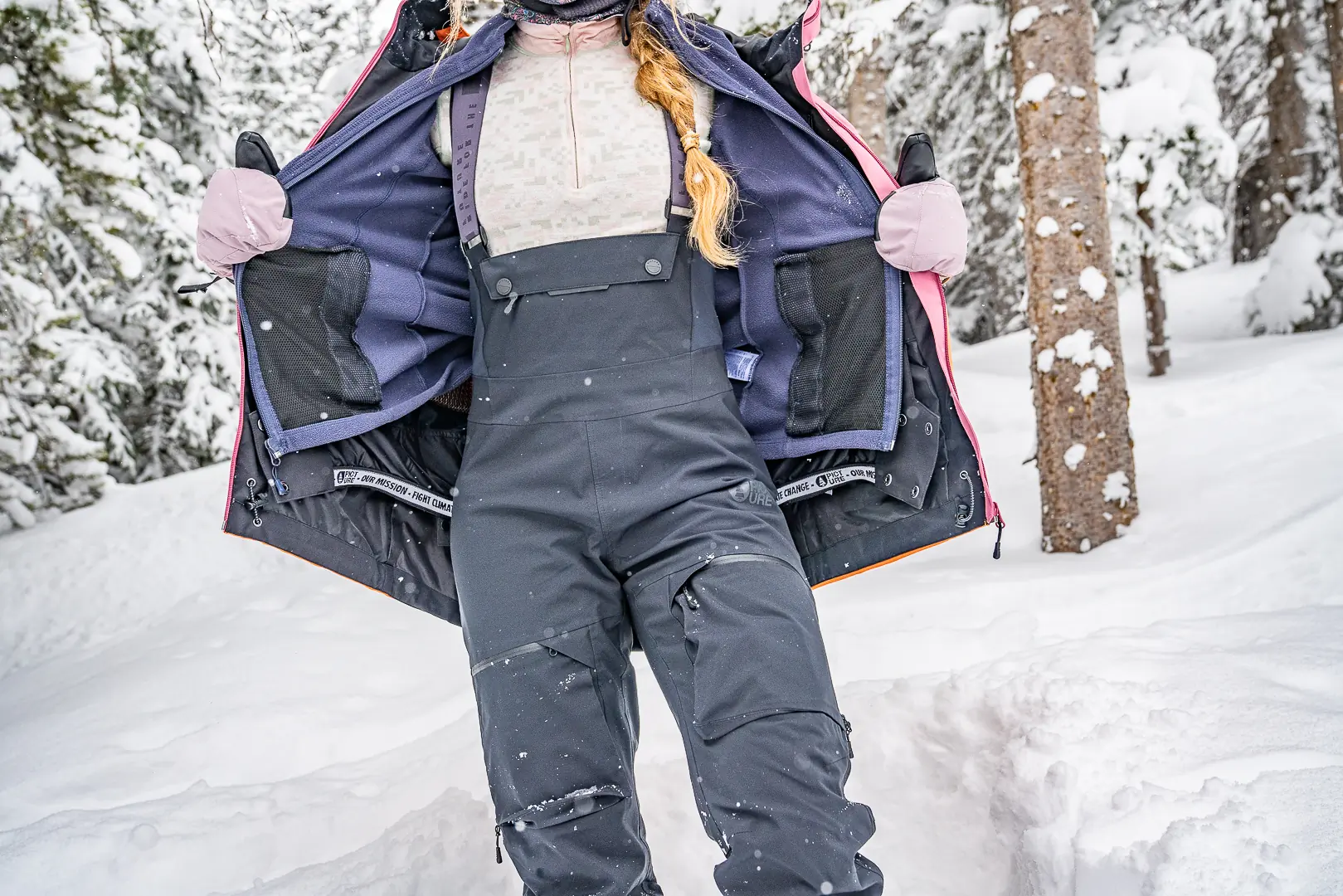



Insulation
In winter mittens, you’ll find natural down insulation, synthetic insulation, or a combination of both.
Down Insulation
Natural down mittens are a popular option for skiing, cross-country skiing, snowboarding, and snowshoeing. However, down loses its insulating powers when wet. Natural down fill is often made of duck down or goose down (the finest, lightest feathers) and is extremely lightweight, very packable (like what you want in a down jacket), and warmer overall than synthetic fill.
Thindown is a constructed fabric made of natural goose down rather than the down being loaded between layers of textile in a traditional baffled design.
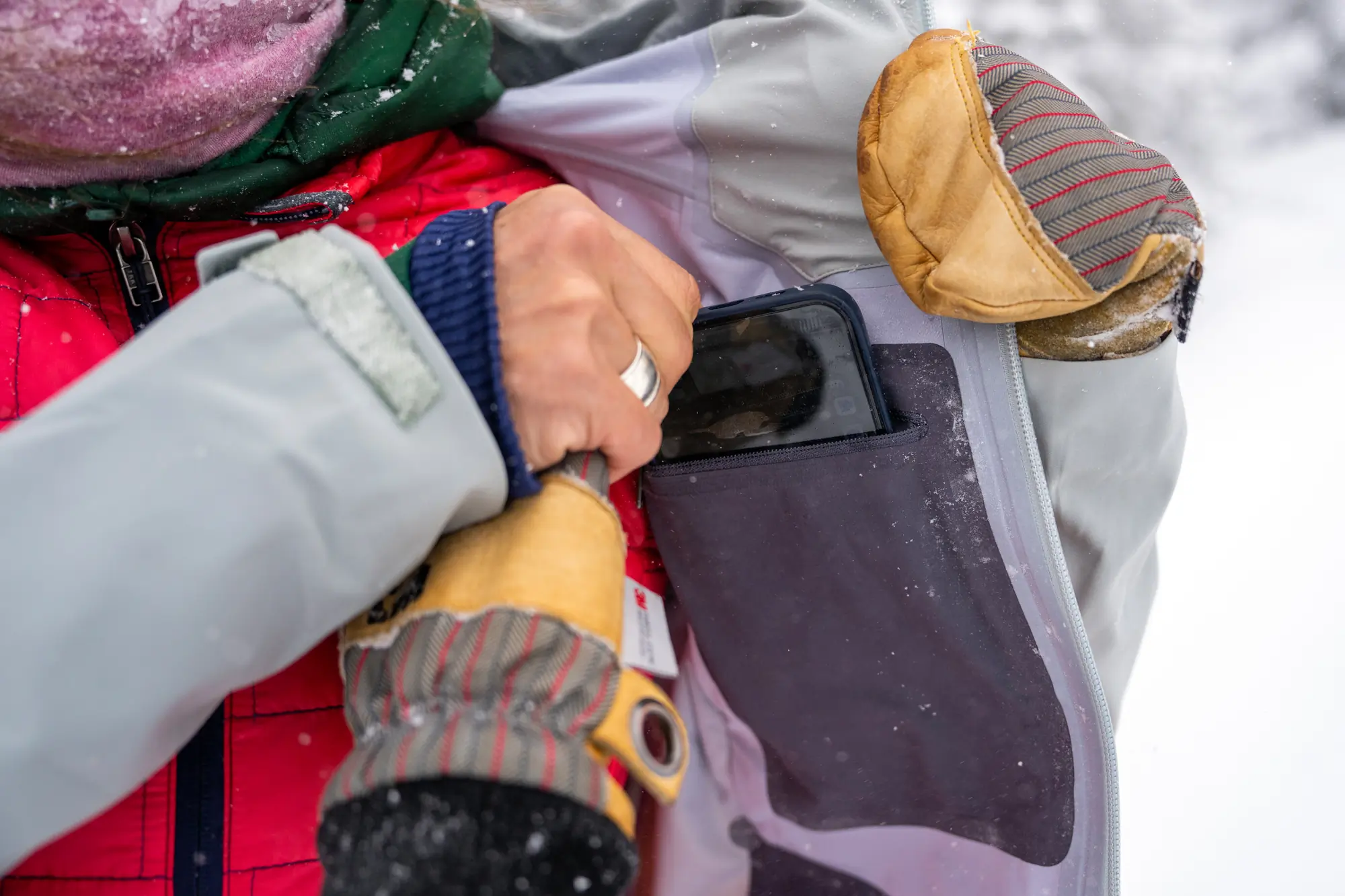



Synthetic Insulation
Synthetic insulation keeps you warm even when the fabric becomes damp because it’s made from polyester, which retains warmth when wet. Ultimately, synthetic insulation also dries faster than down fill. More companies are opting for synthetic fill, including the Black Diamond Mercury Mitts.
Many companies use PrimaLoft synthetic insulation, which is a fiber made from recycled plastic bottles. PrimaLoft fill can also be recycled into another piece of gear.
Hybrid Down-Synthetic
Some winter mittens or gloves use a mix of synthetic and natural down like in the Gordini Fayston Gloves. The benefit is to utilize synthetic fill where the hands most receive moisture while the down increases the warmth factor in certain parts of the hands like the wrists or ends of the digits.


Fill Value
The fill value of a mitten lets you know how much insulation, and thus warmth, is placed inside.
To calculate the fill, a one-ounce sample of down is put into a cylinder and then compressed. A higher number indicates a warmer option, which also means that you’ll need less down to get the same amount of warmth as a lower-fill down. A higher fill number means the down can trap more air, which leads to warmth, in the piece of apparel or gear. For you, that means a lighter, more compressible piece of gear.
- Outdoor Research Alti II GORE-TEX Mitts: 170 g PrimaLoft Gold (plus a removable liner that has 340 grams of Primaloft Gold insulation)
- Give’r Frontier Mittens: 380 g Thinsulate
- Burton Women’s GORE-TEX Under Mittens: Manufacturer confirmed they do not publish fill amount of ThermocoreECO synthetic insulation
While the Black Diamond Mercury Mitts does not have a fill value, it’s versatile with a removable liner that’s made with 340 g of PrimaLoft Gold Cross Core insulation.
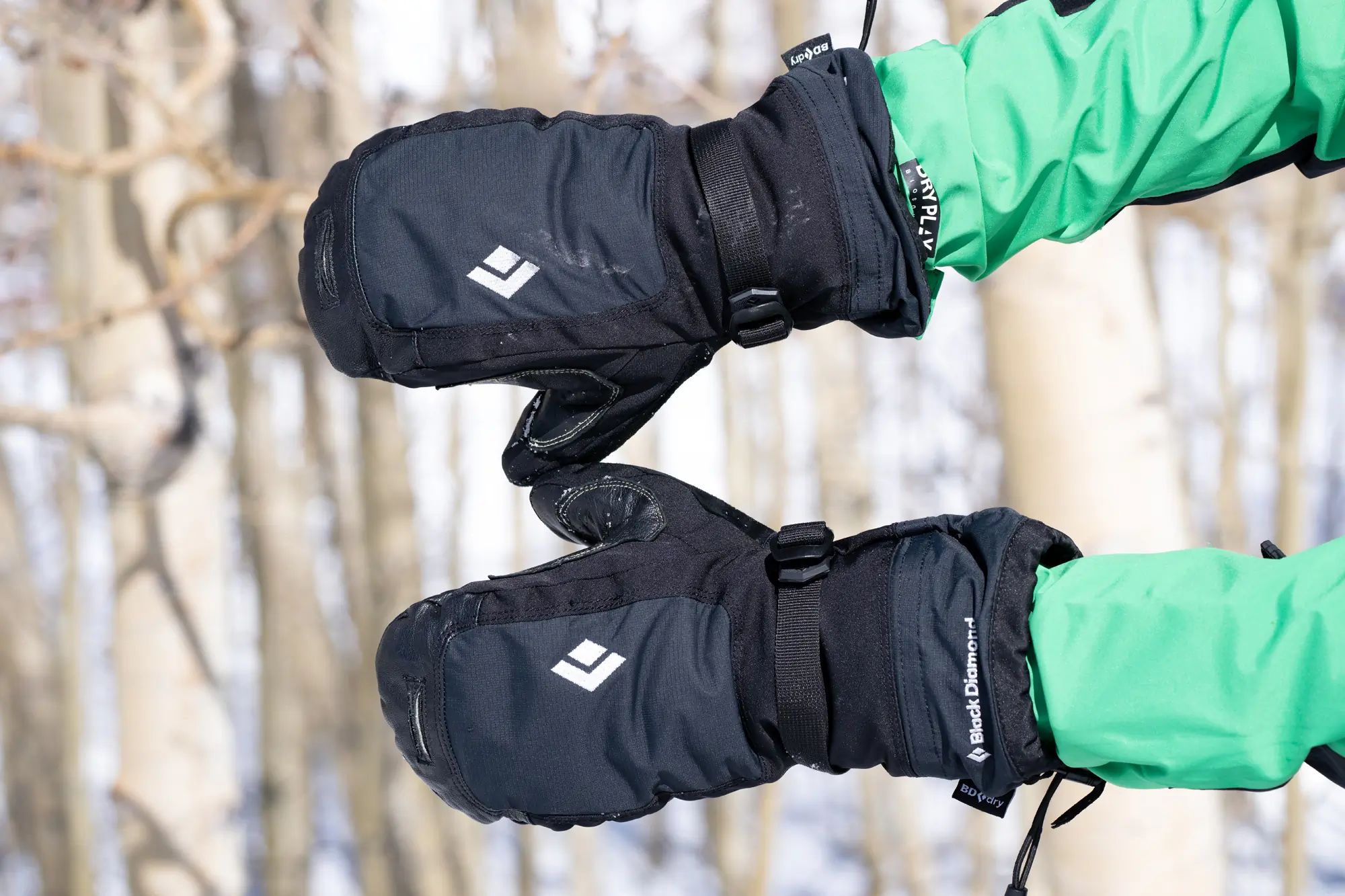



Winter Mitten Liners
If they’re not included in the package, it’s a good idea to invest in a pair of liners, whether those are shaped like a mitten or a glove, even if the mittens provide adequate warmth.
You can pair a liner with your mittens for additional warmth. A glove liner also allows you to pull the mitten off and use your fingers for tasks that require a fine touch, all without directly exposing your skin to the cold air and risking dropping your heat too low.
Some liners are constructed with touchscreen capability, too, so you can send a text message or make a phone call without needing to remove the layer. Liners can also function on their own on warmer wintry days, so they’re never a bad investment.
Keep in mind that a handful of pairs already come with removable liners, such as the Black Diamond Mercury Mitts and the Burton Women’s GORE-TEX Under Mittens.


Ventilation
Certain mitten designs include ventilation options in the form of small zipper pockets. Zip it open to let some air in if your hands are hot, or use it to stash a hand warmer for extra warmth.
The Burton Women’s GORE-TEX Under Mittens has diagonal zipper pockets on the back of the hand, the perfect size and spot for hand warmers.
Waterproofness & Water Resistance
Many of the mittens on this list claim to be waterproof. Typically, a “waterproof” mitten is constructed with a layer of breathable membrane such as GORE-TEX. This layer is designed to keep moisture from reaching the inside of the glove and also allow moisture from the hands to evaporate out.
While some of these membranes work quite well, they aren’t completely impervious to water. If your mittens become completely saturated in a heavy rainstorm, your hands will probably get wet underneath.
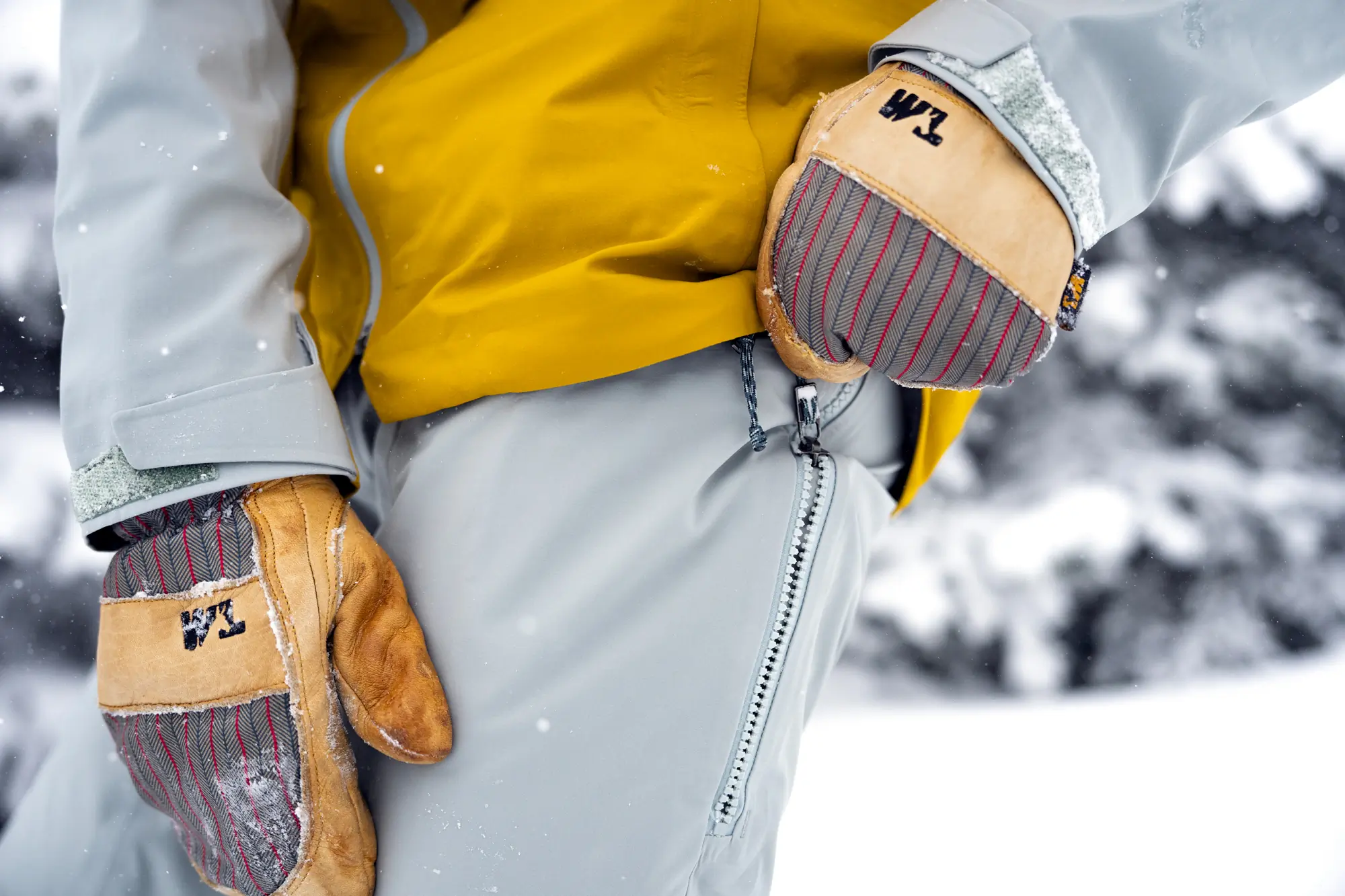



If you’re seeking the highest level of waterproofing mittens can offer, be sure to select a style with a GORE-TEX (or similar) membrane, like the Outdoor Research Alti II GORE-TEX Mitts. All leather options, like the Give’r Frontier Mittens, won’t provide full waterproofing, but with an additional wax coating, you’ll get pretty close.
Cuffs vs. Gauntlets
Mittens can have a roomy, high-reaching gauntlet cuff or a leaner undercuff. Choosing between the two designs comes down to the type of protection you prefer and need, which is influenced by your winter activities and the climate where you’ll be most outside.
Gauntlet
With a larger gauntlet, the cuff goes over the sleeve cuffs of your winter jacket, like the Black Diamond Mercury Mitts or the Outdoor Research Alti II GORE-TEX Mitts. Tightening the cinch at the base of the mitten’s gauntlet helps prevent snow and wind from entering throughout the snowball fight or shoveling mission.
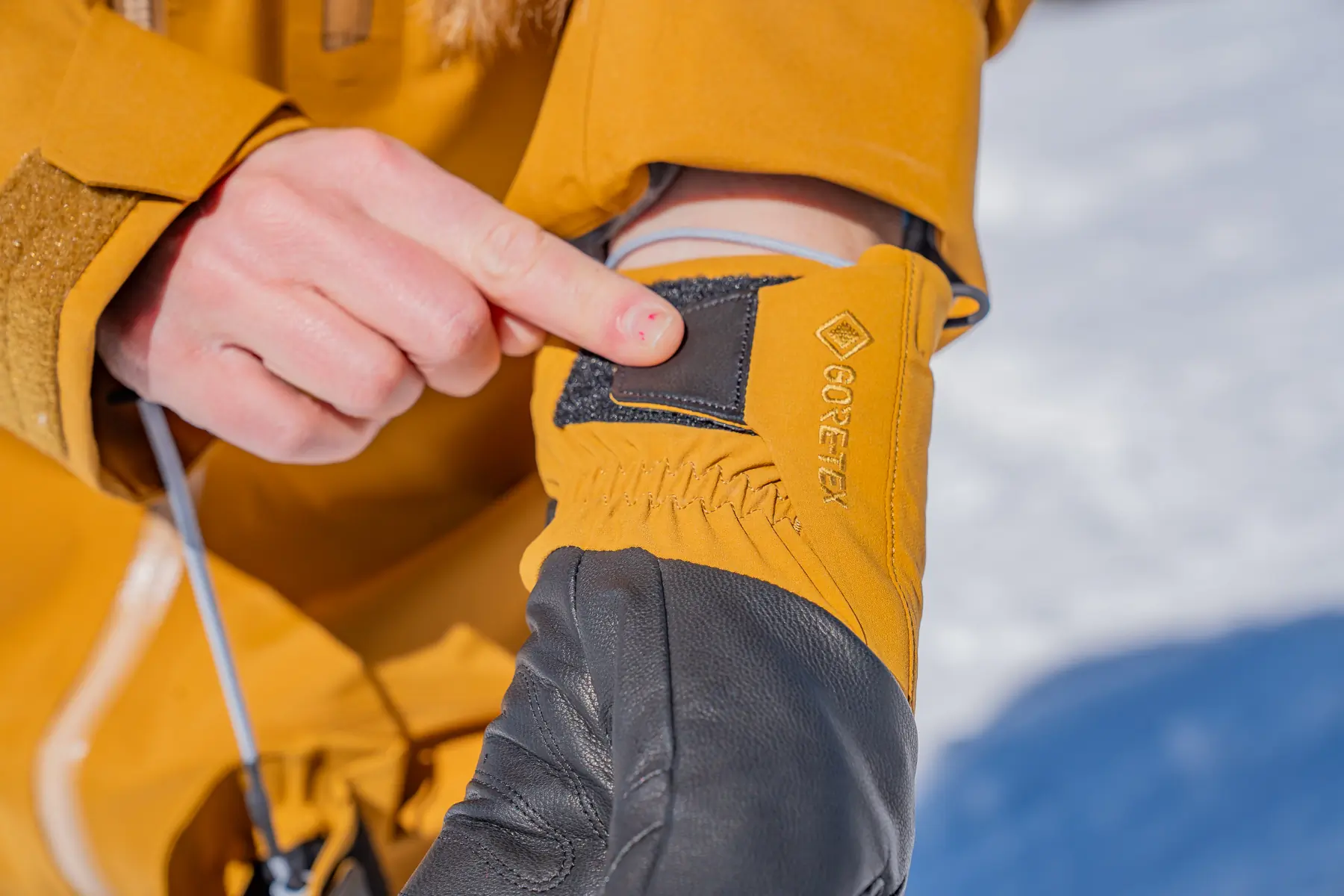



Undercuff
With an undercuff, like the Give’r Frontier Mittens, you’ll have less bulk around your wrists, but a higher chance of snow or wind getting near your wrists and into your coat.
Certain designs have a secondary wrist strap that’s threaded through a quick-release slider buckle to ensure a secure attachment to your wrist when you take the mitten off.
Layering Cuffs & Sleeves
If your daily winter jacket has extended, dense cuffs, your wrists will be more covered and protected from any snow getting in, and a tight mitten cuff might not fit over the coat’s cuffs. While many midlayers have extended sleeve lengths with thumbholes, the material often absorbs moisture and we don’t consider that a replacement for a mitten that shields snow and wind.
You’ll also want to consider your layering system beneath your mitts so that the sandwich of the mitt, jacket, and midlayer isn’t cumbersome.
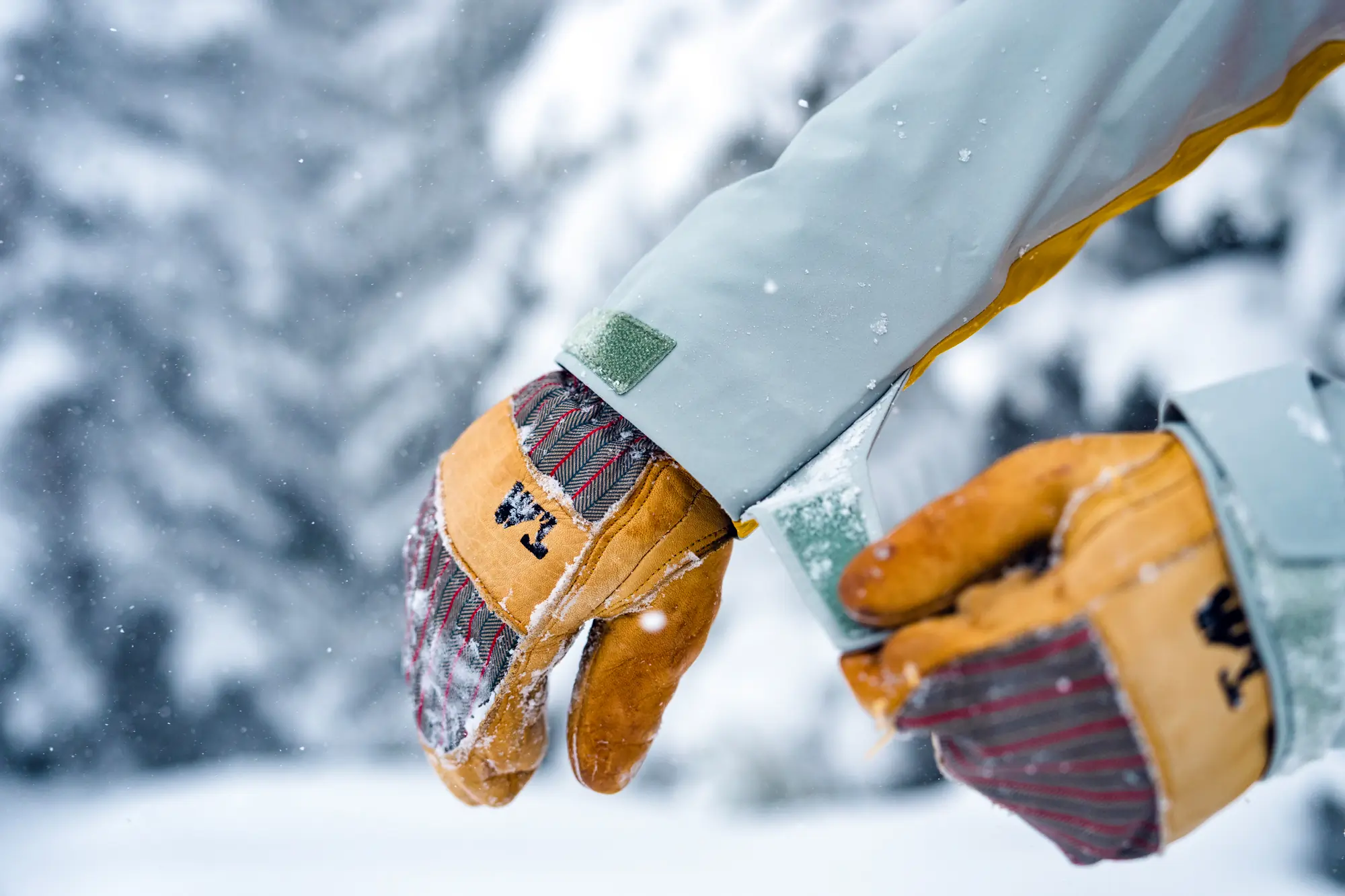



Nose Wipe
A tester-favorite when it comes to the details: A soft, velvety patch of fabric wrapped across the exterior thumbs of mittens is super handy and comforting to use as a wipe for your runny nose. When you’re out in frigid temps and don’t have access to a tissue, a nose wipe panel is key.
Many brands incorporate a nose wipe in their mittens, including the Black Diamond Mercury Mitts and the Burton Women’s GORE-TEX Under Mittens.
Wrist Leashes
If you tend to frequently take your mittens on and off throughout the day, wrist leashes will be your best friend.
One end of the stretchy leash is either fixed or attached to your mitten’s cuff zone. Shaped like a lasso, the end of the circuit expands and slides around your wrist, so the mitts can stay securely attached to you.
Some wrist leashes are sewn on and not removable while others are easy to remove.


Ski Poles Connectivity
A handful of winter gloves, like those from Leki with their Trigger System, have a specific feature where the gloves actually connect to ski poles. The connectivity is created via a built-in, tiny loop in the thumb saddle.
At this time, Leki offers one pair of women’s winter mittens with a built-in loop, the Snowfox 3D Lady Mitt. However, other mitten-wearers can pick up the Trigger S straps, a strap system with a small harness that goes over your mittens, so you can connect your choice pair of mittens to Leki poles, too.




Touchscreen Compatibility
While liners can help, you can also consider investing in mittens with touchscreen compatibility built in, so you don’t need to remove them to check your phone. We also like mittens with textured palms for grip and durability.
The Burton Women’s GORE-TEX Under Mittens are touchscreen-compatible with a grippy, synthetic leather palm and a removable five-finger liner with touchscreen-compatible fingertips, which is much more functional than a mitten for operating a screen.
While you can do your homework, not all systems are foolproof: the liners are more functional than the touchscreen-compatible leather palm on the Under Mittens, for instance.
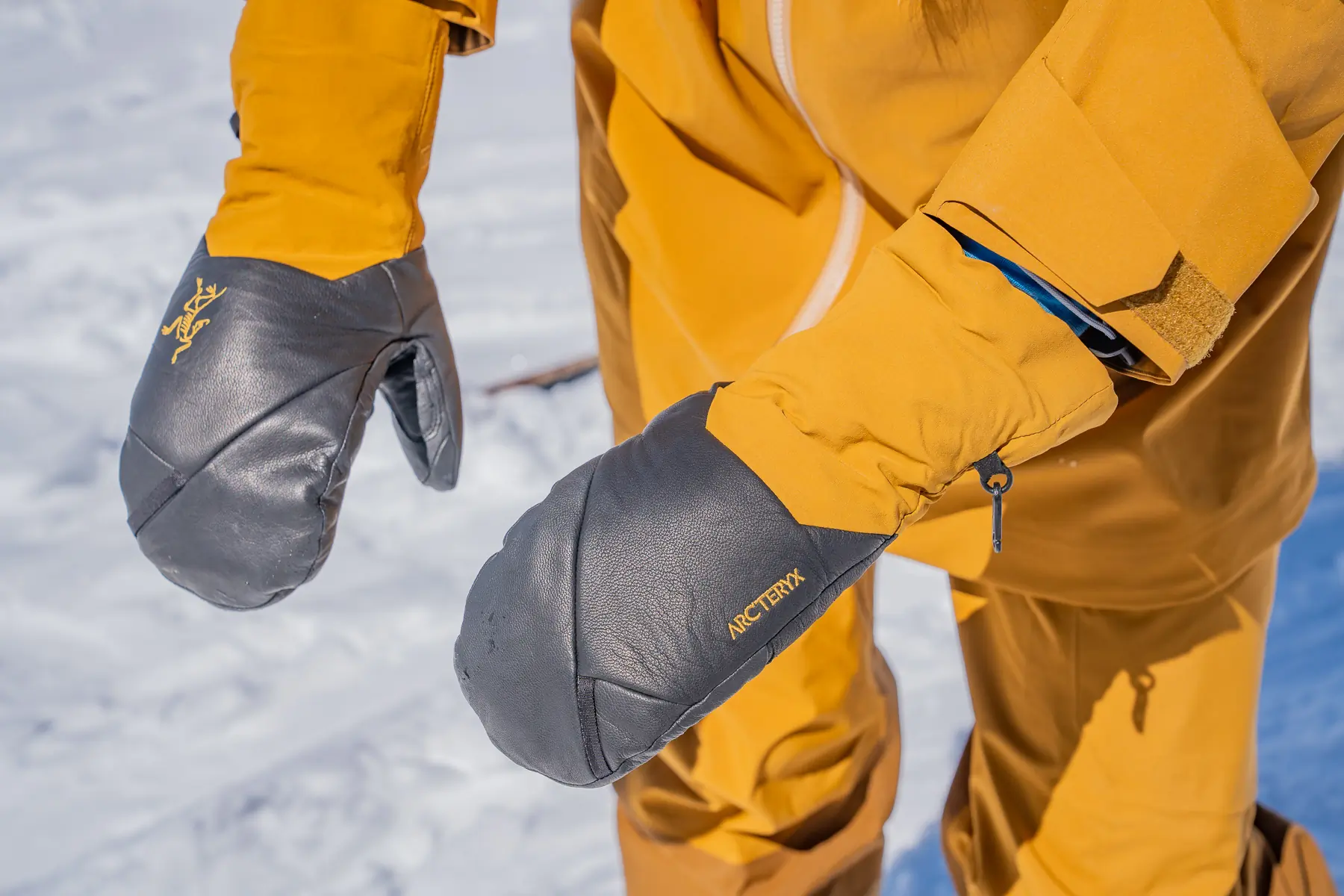



Durability
Winter sports like skiing and snowboarding or major shoveling duties will add wear and tear to your mittens. Luckily, durable materials often make heavy-duty mitts strong enough to handle activities like buckling boots, gripping poles, and strapping into bindings.
For such sports, domestic work, and mountaineering pursuits, you’ll want mitts made with durable materials, like goat leather, or mittens that are reinforced in high-friction zones. The all-leather Give’r Frontier Mittens are rated as extremely durable.
Besides polyester and leather, winter mittens often use wool, fleece, or cotton, which generally produce a slimmer mitten. Generally, cotton is not ideal, as it takes a long time to dry and easily tears. Liner materials, whether removable or not, are usually made from soft, slightly stretchy fleece.
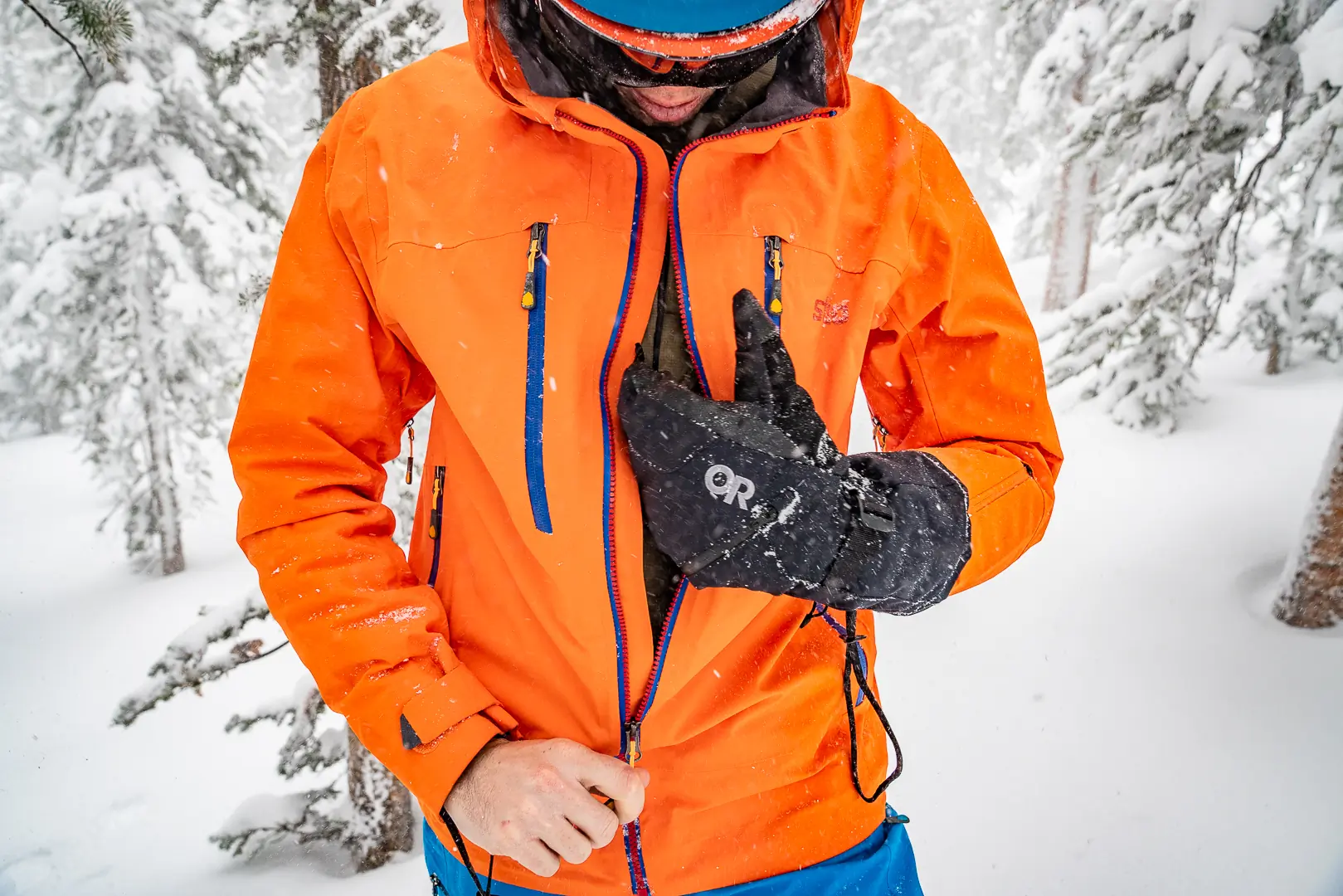



Sizing
Most brands will now list the exact measurements of their mittens, specifically the dimensions of the palm. We recommend starting with your usual glove or mitt size, but always double-check any mitt’s specific sizing chart.
Most often, the sizing chart will have you measure from your wrist to your fingertips as well as the circumference of your palm. You should be able to make a fist without the mitten feeling too tight, and your fingertips should reach almost to the top of the mitt, with about ¼-inch of space left over. Mittens that are too big won’t be able to efficiently keep heat in, while mittens that are too small will be uncomfortable.
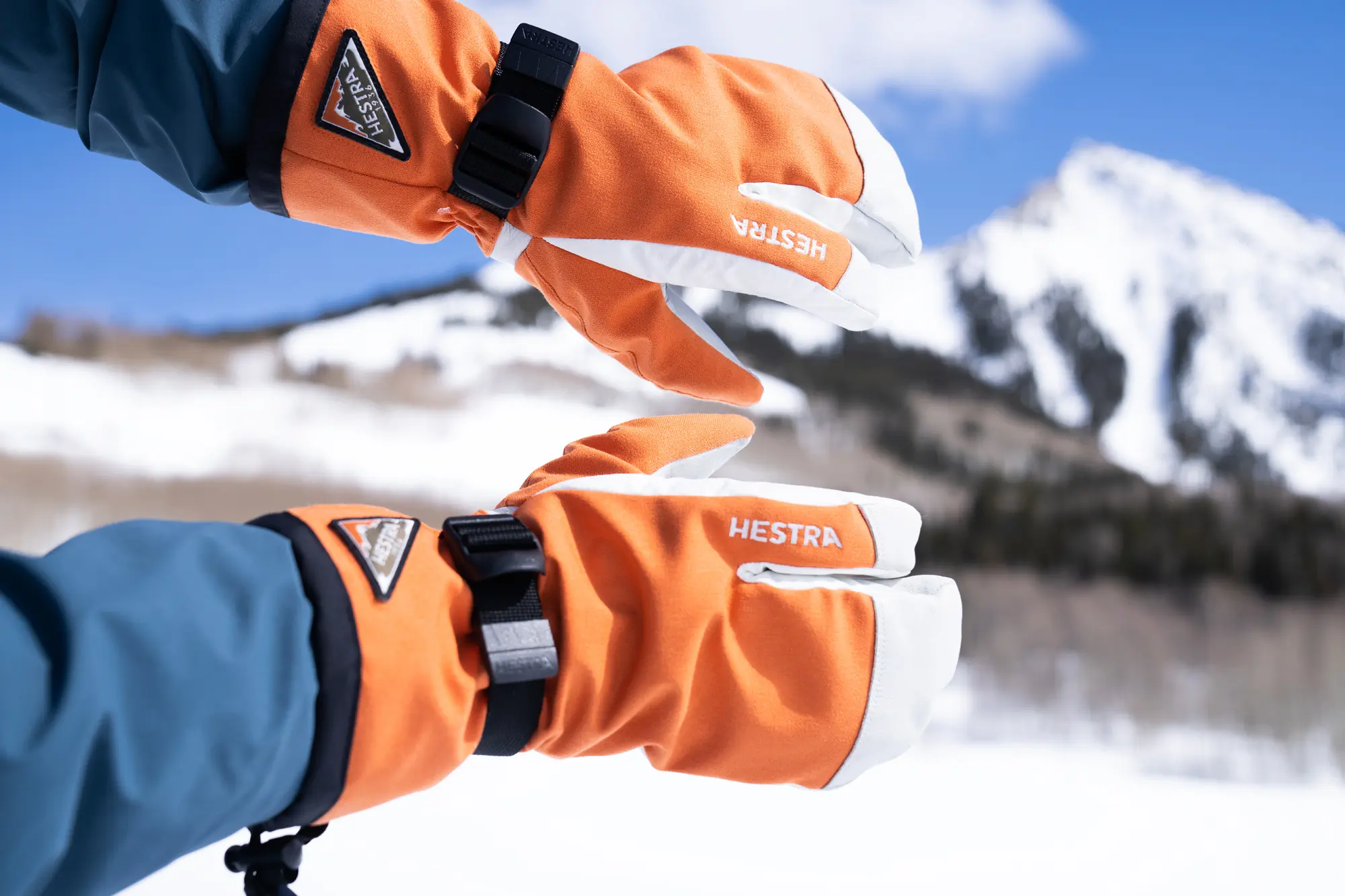



Sustainability & Eco-Friendly Materials
Sustainability is a key factor that many recreationists appreciate when buying gear. And with finite natural resources, the planet stands to benefit. Fortunately, more outdoor industry companies are pushing the needle regarding eco-friendly materials and manufacturing practices.
Responsible Insulation: Down & Synthetic
If you can’t guarantee that down for a product is harvested in a cruelty-free way, you can also opt for synthetic down.
PrimaLoft is a leader in sustainable fill options, as seen in the Black Diamond Mercury Mitts and the Outdoor Research Alti II GORE-TEX Mitts. Also, PrimaLoft synthetic fill comes in several versions, like Gold and Grip, and is made from recycled plastic bottles transformed into insulating fibers. Bonus: you can recycle PrimaLoft again to create new gear after retiring your mittens, jacket, or sleeping bag.




If you’re set on natural down, versus synthetic, check out Thindown. The material is sourced ethically, meets the Responsible Down Standard (RDS) metric, and is able to be recycled, meeting the Global Recycled Standard.
Recycled & Ethical Materials
A fair amount of outdoor apparel gear is made from polyester. The great thing about polyester is that it can be recycled and reused, like in the Black Diamond Mercury Mitts.
The brand Picture creates mittens with fabric sourced from the brand’s Circular Fabric program, which reuses material from previously used (and beat up) garments and factory cutting scraps that would otherwise go to the landfill.
If the material can’t be made from recycled products, there are fabric options that are Bluesign-certified. This certification verifies that the fabric has been tested to not be harmful to human health and the environment. Similar conscious certifications include Oeko-Tex-certified fabric and Fair Trade sewing.




Another detail to consider when shopping for sustainable, healthier options is to choose mittens that are treated with PFC-free water repellency, removing the harmful toxins that traditional water repellent treatments carry.
Price & Value
Our favorite winter mittens range from $55 on the low end up to $200 or more for premium materials and construction.
Budget: Moderate Insulation
On the economic end, our top picks for winter mittens are below $100. For starters, the waterproof Burton Women’s GORE-TEX Under Mittens ($85) and Flylow Oven Mitt ($55) are on the lower shelf. The Burton Under Mittens have moderate insulation paired with a glove liner, so they’re adaptable and effective for milder winter climates and a range of conditions. The 2-layer construction and low-profile cuff keep the price down. These mittens can still have details like wrist leashes and nose wipes.
Mid-Tier: More Insulation, Longer Cuff
The next price tier has winter mittens above the $100 mark, which utilize more durable materials, including leather, for a higher-quality, longer-lasting mitt.
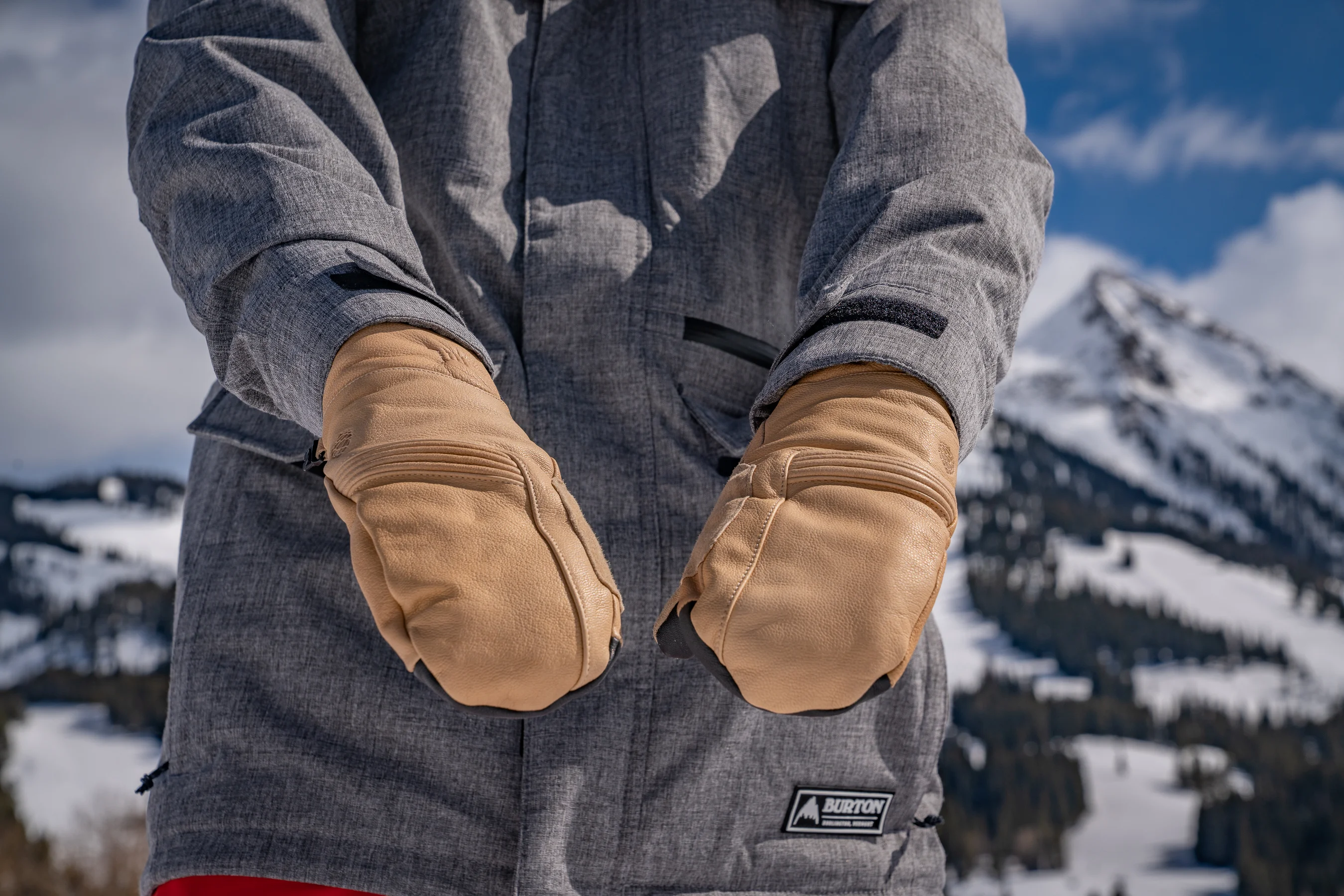



You’ll see more leather, more insulation, a longer gauntlet, and generally a more technical construction like in the Black Diamond Mercury Mitts ($120) and Give’r Frontier Mittens ($139).
Premium: High-End Construction, Battery-Powered
Coming in at an even higher tag is the Outdoor Research Alti II GORE-TEX Mitts ($199), which are made for mountaineering and high-elevation adventures. Health and safety tools come at a cost.
For everyday skiers, the Arc’teryx Sabre Mitten ($180) blends leather with a high-end, strong yet slender synthetic textile that makes the mitten breathable toward the cuff and easy to slide under the cuff of your jacket sleeve.
Battery-operated mittens can range from $150 to nearly $500.


Frequently Asked Questions
The best winter mittens will first depend on what activity you’ll be using them for most — skiing or snowboarding, or just keeping your hands cold around town during winter. Are you looking to prioritize warmth, durability, or a balance of both?
Our best mittens in testing were the Black Diamond Mercury Mitts — well-insulated, durable, and a great balance of warmth, quality, coverage, and price.
But of course, we’ve included several other best mittens on the market (best for biking, best synthetic versus down) to make sure you find one suited to your cold-weather needs.
There are several warm mitten options on our list, but the warmest would be the Outdoor Research Alti II GORE-TEX Mitts. The Alti is designed for expeditions with 170 grams of PrimaLoft Gold insulation in the body and a removable liner that contains 340 grams of PrimaLoft Gold insulation.




Generally, a high-level down-fill will be the warmest insulation you can get in a mitten. However, many of our favorite mittens feature synthetic fill because it always insulates, even when wet or damp. Other design details like the thickness, liner, and exterior material will also affect a mitten’s overall warmth.
If you struggle with cold hands, be sure to look into everyday premium leather mittens like the Sabre Arc’teryx, which has targeted zones of 130 g or 100 g of PrimaLoft Gold and Silver synthetic insulation. Or, get a battery-operated pair.
Wearing liners under mittens comes down to personal preference, which depends on your overall cold tolerance and the primary activity you’ll be doing while wearing them.
If you’re heading out on a super-cold day, a liner can be useful for additional warmth, even in a well-built mitten. On the flip side, liners can be nice if you are working hard on a snow tour, like snowshoeing or ski touring, or if you’re in the yard and need to slip off that outer shell for a bit of air.
Plus, if you frequently take your mittens on and off, liners help keep your skin from being fully exposed to the elements. Look for liners that are touchscreen compatible, like with the Burton Women’s GORE-TEX Under Mittens.
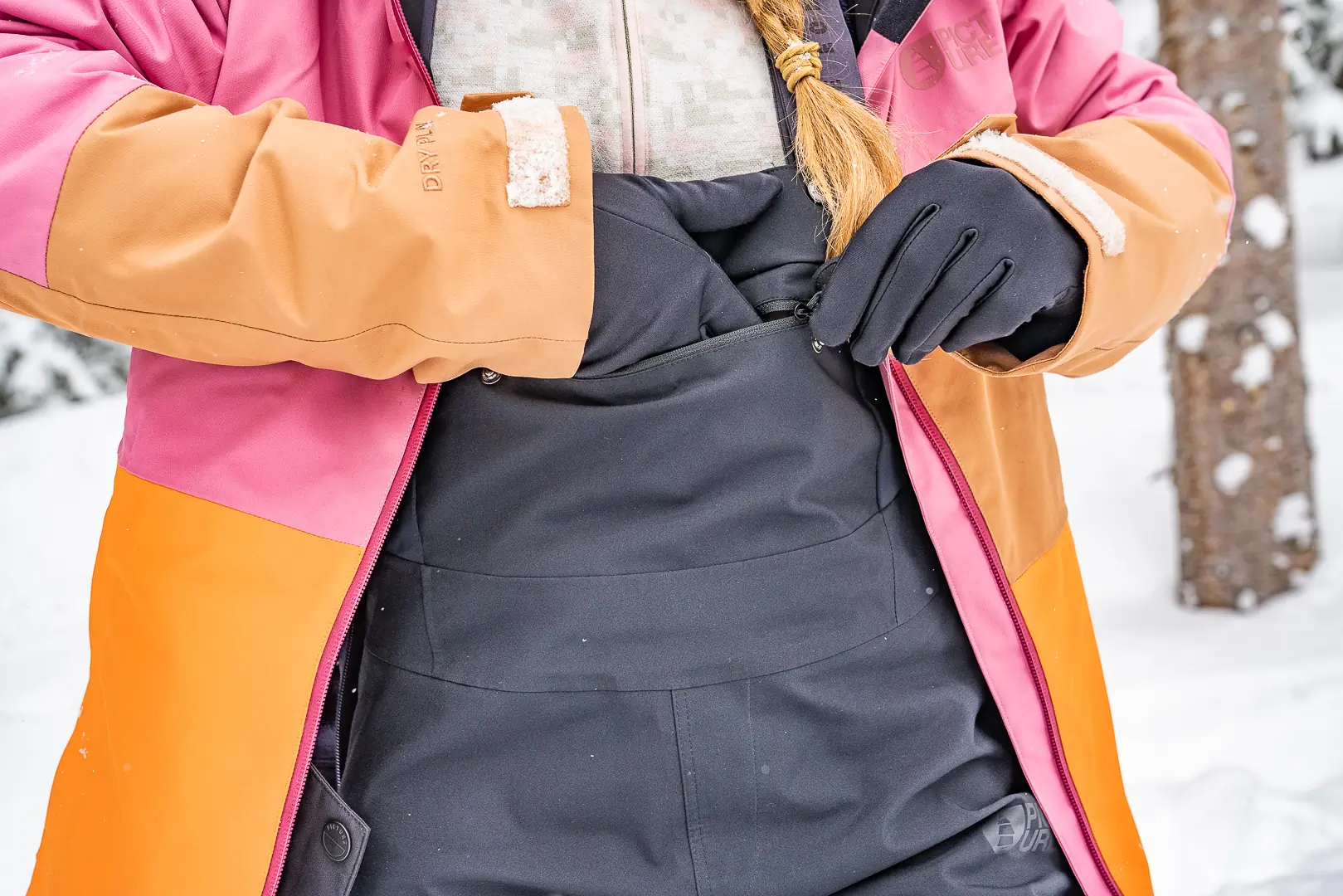



The main disadvantage of mittens is lack of dexterity. This means that when you don’t have your fingers free of the mitt, grabbing a pole or tool is not going to be the easiest. However, your hands will be much warmer than they would be in gloves. Depending on your cold tolerance, dexterity might be a compromise you are willing to make.
Keep in mind that sometimes mittens might be too warm, like on high-temp spring days or if you are really working hard on a powder day. Rather than ditching your mittens altogether, you can opt for a pair that has a removable liner or ones that have small zipper pockets on the top of the hands for quick, easy ventilation.
For most winter pursuits, mittens don’t need to be fully waterproof, but they should be water resistant.
A water-resistance mitt will hold up for most snowy days, even if you are really getting your hands into that snow as you work or play.
However, if you are heading out on a super wet powder day in a damp climate, a fully waterproof mitten might be a better option, like designs with a GORE-TEX membrane, to ensure your hands stay completely dry and warm.
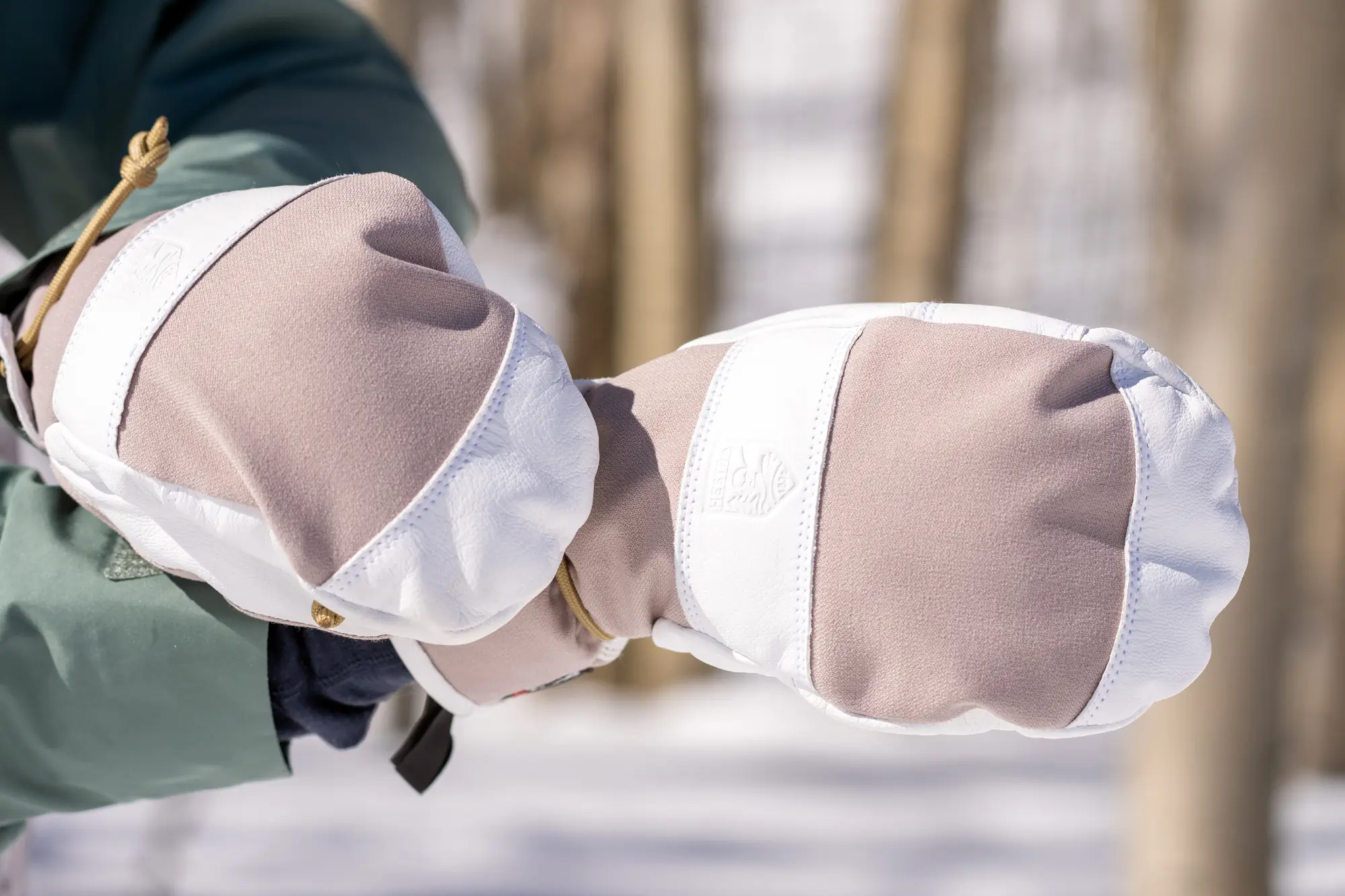



Technically, yes, especially for mittens and gloves.
Women’s specific mittens typically have a shorter finger length and narrower palm circumference compared to men’s mittens, which allows for a better fit for many women.
Some of our testers have found that when following unisex sizing, the size runs seem to correspond more closely to men’s sizes rather than women’s, so our female testers will often size down for a unisex pair.
Whether you’re selecting a men’s, women’s, or unisex mitten, be sure to measure your hands according to that brand’s sizing chart to help you find the best fit.
Pay close attention to sizing charts. For instance, Hestra’s mitten sizes differ between the unisex and women’s selections: a women’s mitten with a 152mm circumference corresponds to a size 7, while a unisex mitten with a 152mm circumference corresponds to a size 6.
Mittens shouldn’t be too loose or too tight. Your mittens should have about a ¼-inch of space above your fingertips, and you should be able to make a fist comfortably without too much constraint or too much extra fabric.
Having a mitten that isn’t too loose or big and spacious is ideal, because that extra space and air requires body heat to warm.
If your mittens are slightly roomy, try wearing a thin, lightweight liner underneath. If your mittens are too tight, they will be annoying to get on and off and pose the risk of cutting off circulation at your wrists.
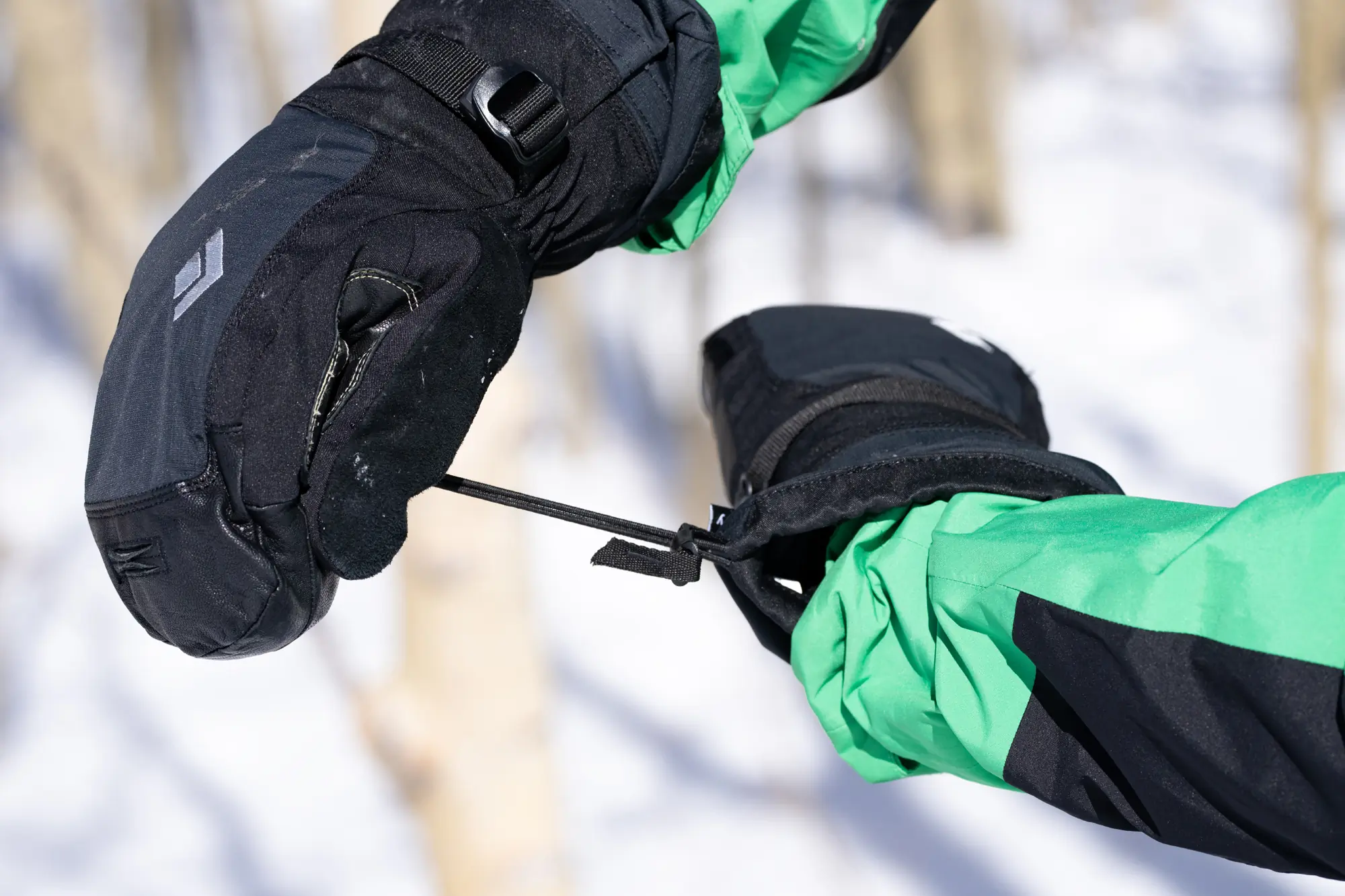



Mittens rarely need washing, so don’t go throwing them in your weekly laundry pile. That said, there are times when a filthy mitt needs some love. Start with a spot clean: Wipe down the exterior with mild soap and water then air dry.
If your mittens have separate liners, remove and wash them as needed. If the entire mitten needs a thorough machine wash, use a tech-specific wash like Granger’s Performance Wash on the delicate cycle. Lay flat to dry.
You can also condition leather, which is a great waterproof material but needs proper care. First, rub down the mitten with a damp cloth to remove any grit. Next, massage a leather wax like Sno-Seal into the surface. Allow to air dry at room temperature overnight. Use a soft cloth to remove any extra wax, and get ready to enjoy your supple, waterproof mittens.
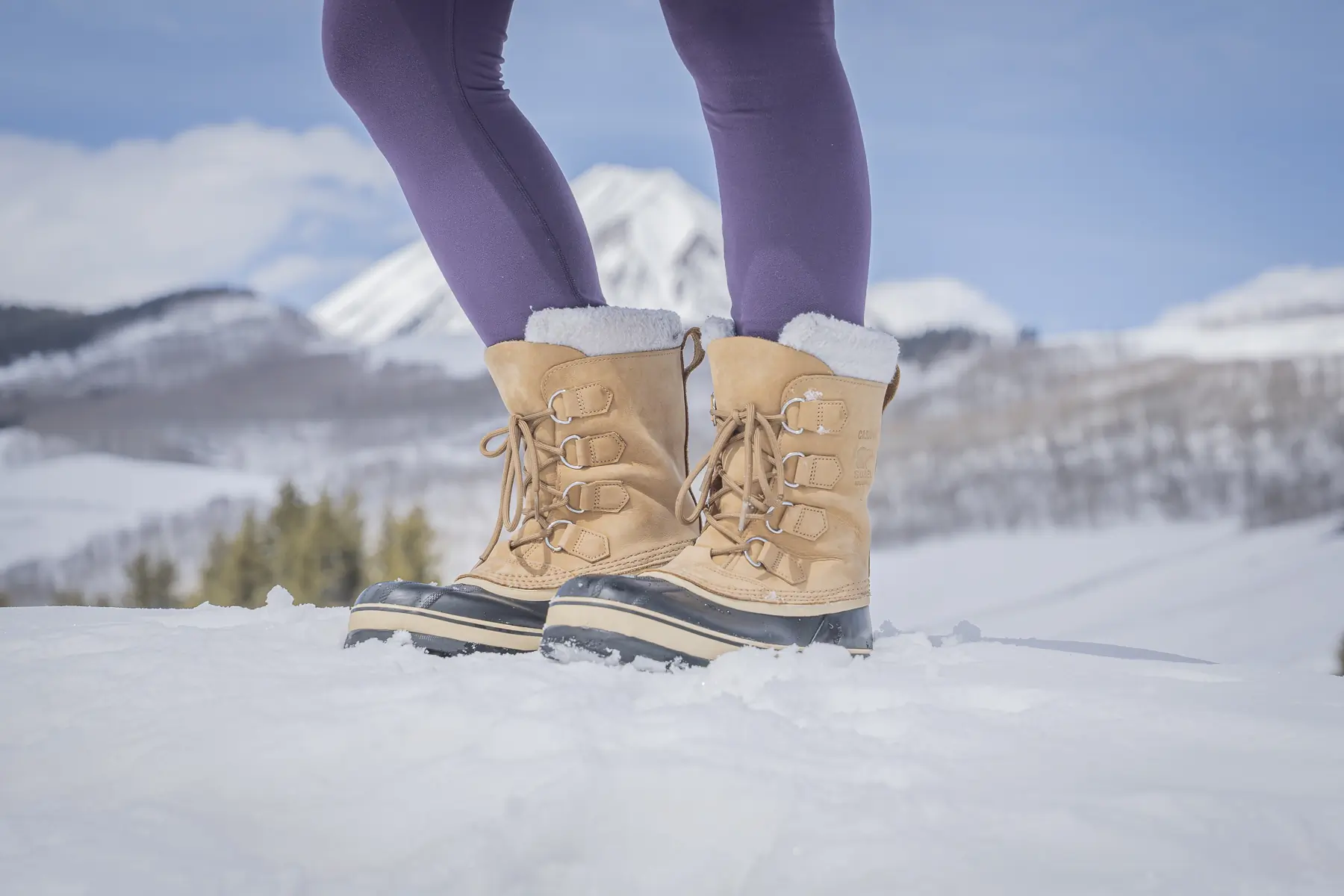

The Best Winter Boots for Women of 2025-2026
We tested the best winter boots for women in cold, snowy, icy, and sloppy conditions. Our top picks include Sorel, Timberland, and more.
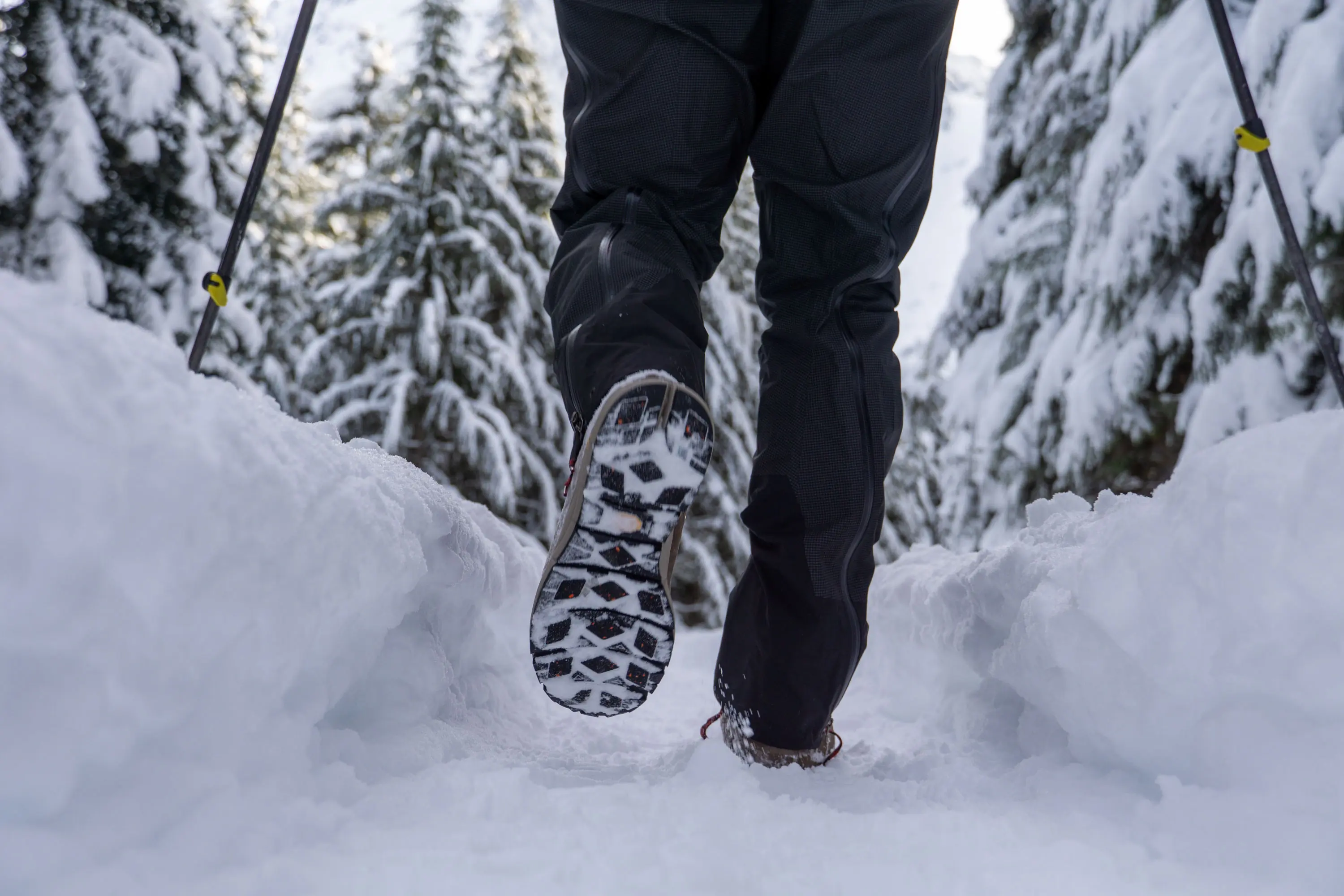

The Best Winter Boots for Men in 2025-2026
From hiking boots to snow boots, these are the best winter boots for men in 2024, including top picks from Danner, KEEN, Kamik, and more.
